Did You Know That We Offer Contract to Closing Services? Click Here to Find Out More.
Need Marine Financing? Apply Here With Our Partner, First Approval Source
- Catamaran Interviews
- Catamaran Reviews
- Buying Advice
- Selling Advice
- Woods Design Advice
- Americat 3014
- Aquila 44 Yacht
- Balance 526
- Bali 40 Catspace
- Beneteau Blue II
- Broadblue 346
- Broadblue 38 Prestige
- Broadblue 385
- Broadblue 435
- Broadblue 46
- Catalac 10M
- Catalac 11M
- Catalac 12M
- Catalac 900
- Catana 42 S
- Chris White 48 Voyager
- Chris White 55
- Corsair F28 R
- De Villiers
- Dolphin 460
- Endeavour 30
- Endeavour 35 Victory
- Endeavour 36
- Endeavour 44
- Endeavour 44 TrawlerCat
- Fortuna 36 Island Spirit
- Fortuna 401 Island Spirit
- FP 32 Maldives
- FP 35 Tobago
- FP 37 Antigua
- FP 38 Athena
- FP 39 Fidji
- FP 40 Lavezzi
- FP 40 Lucia
- FP 40 Summerland MY
- FP 41 Lipari
- FP 42 Astrea
- FP 42 Venezia
- FP 43 Belize
- FP 44 Helia
- FP 44 Orana
- FP 46 Bahia
- FP 46 Casamance
- FP 48 Salina
- FP 56 Marquises
- FP 57 Sanya
- FP 60 Eleuthera
- FP Saona 47
- Gemini 3000
- Gemini 3200
- Gemini 3400
- Grainger 420 Mystery Cove
- Hirondelle 7M
- Lagoon 37 TPI
- Lagoon 42 TPI
- Lagoon 43 PC
- Leopard 39 PowerCat
- Leopard 45 Classic
- Leopard 47 PowerCat
- Leopard 51 PowerCat
- Leopard 53 PowerCat
- Maine Cat 30
- Maine Cat 41
- Matrix 450 Vision
- Matrix 760 Silhouette
- Maverick 400
- Maverick 420
- Maverick 440
- Nautitech 40
- Nautitech 442
- Nautitech 46 Open
- Nautitech 47
- Outremer 40
- Outremer 45
- Outremer 50 Standard
- Outremer 55
- Privilege 37
- Privilege 39
- Privilege 42
- Privilege 43
- Privilege 435
- Privilege 45
- Privilege 465
- Privilege 48 Transcat
- Privilege 482
- Privilege Serie 5
- Prout 31 Quest
- Prout 33 Quest
- Prout 34 Event
- Prout 35 Snowgoose
- Prout 37 Snowgoose
- Prout 37 Snowgoose Elite
- Prout 38 Manta
- Prout 39 Escale
- Royal Cape 45
- Royal Cape 530 Majestic
- Royal Cape Majestic 500
- Sailcraft 30 Iroquois
- Sailcraft 32 Comanche
- Sailcraft 35 Cherokee
- Sailcraft 41 Apache
- Sailcraft 44 Apache
- Wildcat 350
- Seawind 1000
- Seawind 1160
- Seawind 1200
- Seawind 1260
- Seawind 1600
- Solaris 36 Sunrise
- Solaris 36 Sunstar
- St Francis 44
- St Francis 48
- St Francis 50
- Stealth 11.8
- Heavenly Twins 26
- Ocean Twins 38
- Voyage 380 Maxim
- Voyage 400 Norseman
- Voyage 430 Norseman
- Voyage 450 Cabriolet
- Voyage 47 Mayotte
- Wharram 38 Tiki
- AMI 320 Renaissance
- Woods 22 Wizard
- Woods 35 Banshee
- Woods 35 Flica
- Woods 36 Scylla
- Woods 36 Vardo
- Woods 38 Transit
- Woods 40 Meander
- Xquisite X5
- Xquisite X5+

What are the parts of a catamaran called?
- Post author By Richard
- Post date September 28, 2020
- No Comments on What are the parts of a catamaran called?

This article is a dictionary of sorts of common terms used whether slang or professional among catamaran sailors.
balsa cored (adj.) – description of a type of building technique common on catamaran used for weight saving purposes. End grain balsa is sandwiched between two layers of fiberglass to stiffen, lighten, and insulate the hull and deck of many catamarans. Usually balsa coring is discussed in terms of concerns about water logged or “wet” coring material which is a significant expensive as well as a common issue especially as catamarans get older.
beach platform (n.) – a type of platform at the back of catamaran in particular the Voyage 440. The platform runs the whole back width between the swim platforms and function as a place behind the cockpit combing to layout, fish, and dangle your feet.
beachable (adj.) – describing a class of catamaran which can safely be run aground and mooring on a sandy bottom often a beach. The hull is constructed so that the design can stay upright and support its own weight when the tide goes out.

breakaway skeg (n.) – an underwater appendage of some catamarans including some Leopard and Outremer models which protects the rudders and breaks away in the case of an impact whether in a grounding situation or underwater debris.
bridge clearance (n.) – also known as air draft. The height from the water level to the tip of the mast. Should include the height all the way to the tip most antenna. Heights provided by manufacturers often underestimate because of the antenna. A key number is 65 feet which in the United States is the limiting clearance for fixed bridges on the Intracoastal waterway. Some owners cut down their masts to get under this limit. Many manufacturers specifically design around the 65 foot limit although with catamarans this is difficult as they tend to have taller masts than other sailboats and smaller headsails for the same waterline length.
bridgedeck clearance (n.) – distance between the center section of catamaran where salon is aka the bridgedeck and the water. Common focus is if the catamaran “slaps” which means in rough seas waves come up and pound against the bottom of the hull. Higher bridgedeck clearance is preferred and considered a bluewater characteristic while low bridgedeck clearance is a common concern. A good way to measure is by extending a measuring tape from behind the cockpit to the waterline and a normal rule of thumb number is two feet.
charter version (adj.) – catamaran built for the charter trade usually Moorings or Dream Yacht Charters which has additional cabins and heads. Usually this means four cabins and four heads. This layout is ideal for charter but often private owners prefer a more luxurious master hull giving them a three cabin and two head layout.
companionway (n.) – the main opening to access the interior of the catamaran. This may be a single hatch like door for example on Mantas or large sliding doors which fold up above the cockpit like on Seawind catamarans. A key design interest for builders and owners is the connection and flow between the cockpit where the most time is spent while onboard and the galley and salon areas.
condomaran (n.) – derogative term towards space focused, performance challenged catamarans such as a Lagoon, Leopard, or Fountaine Pajot.
cored above waterline (adj.) – a description of a common build technique where to lessen water intrusion into balsa coring, that sandwich is not carried below the water line. The term is a bit deceptive as usually the coring does go farther than what most owners would think and often below the waterline although not all the way to the bottom of the hull.
crew quarters (n.) – a pretty minimal and harsh accommodations area on catamarans forward in a bow where the captain and crew are supposed to sleep and live when a catamaran is captain chartered. Often on used catamarans becomes an excellent storage area. An unlivable marvel of a cabin that is suggestive of suffering.
cross beam (n.) – beam usually metal that is forward most and the headsail attaches to. Keeps the two hulls structurally joined at the bow.
cutter (adj.) – a rare type of sailboat where there are two headsails and the mast is well aft. Easily confused with a cutter rigged sloop. See definition for sloop cutter.
daggerboards (n.) – boards used to help windward performance and common on performance catamarans like Catanas while not used on charter catamarans like Lagoons and Leopards. Helps the catamaran head further upwind and make less leeway.

davits (n.) – a critical item on a catamaran which holds and supports the dinghy behind the cockpit. Many different arrangements are common. The davits are operated using a line or multiple lines to lower the dinghy into and raise out of the water for security from getting stolen at anchor or for safety offshore. A common concern of the ocean going sailor is monitoring and making sure if rough seas that the dinghy is tight and secure.
emergency hatch (n.) – a hatch at the bottom of the boat usually under the salon or steps downward into one of the hulls which becomes an emergency escape hatch if the catamaran flips and goes turtle. Required safety feature that hopefully no sailor needs to use. Also can be used to fish from in calm water. Can be a source of leaks or come dangerously loose and cause drama offshore.
family version (n.) – a charter layout of a used catamaran that is preferable for families that usually want at least four cabins to accommodate three or more children. The best type of catamaran!
flat top sail (n.) – a high tech fancy sail with a flat top. Expensive and not as common although becoming more common. Maximizes sail area.
flybridge (n.) – helm above the cockpit common on some popular charter catamarans like the Lagoon 440 or Lagoon 50. Design allows great visibility from aloft but also roughly exposes the captain and can uncomfortably separate the owner-captain from his friends and family.
flying ahull (n.) – when one hull lifts off the water and a catamaran sails only with one hull in the water. Not a good sign for almost any catamaran even performance catamaran. Likely followed by flipping and mayday on cruising catamarans.
four heads (n.) – number of heads on many catamaran layouts preferred for charter. Each guest has a cabin and head, so that no one must share heads during their week together. Usually a negative for private ownership even for families that prefer four cabins as more heads means more problems and less space for other accommodations.
french built (adj.) – denotes the catamaran was built in France. Suggests a more performance focus like Catana or lighter production built like Lagoon. Definitely an aesthetic focus on fast striking lines.
forward cockpit (adj.) – a cockpit in front of the salon area usually accessed by a forward facing companionway door. Made famous by the Leopard 44. Some sailors question usefulness or durability in heavy seas of a large opening on the front side of a catamaran.

galley down (adj.) – kitchen area down in one of the hulls. Associated with older designs or designs seeking weight advantage of lower center of gravity such as Antares 44. Uncommon in more recent catamarans and unheard of for charter catamarans as galley down is inconvenient for four guests for sleeping an food access.
galley up (adj.) – Common for most modern catamarans. Improves flow from cockpit and helm to kitchen as well as separation of shared living areas from private cabin areas.
hard top (adj.) – solid glass top to protect guests in cockpit from sun exposure as well as give a platform above for sail handling or diving from into water. Also a sunbathing area or area for solar panels.
ICW friendly (adj.) – catamaran with rig height below 65 feet to go under fixed bridges along United States eastern seaboard.
IO drive (n.) – a rare engine and drive combination as seen on Gemini 105 MC catamarans where a single diesel engine is centerline and there is an outdrive mounted on a hinged support.
ketch (adj.) – very unusual rig configuration on a catamaran with two masts and the second mast aka mizzen mast being shorter than the main forward mast.
outboard (n.) – gas engine that mounts to a stern or inside a swim platform and includes both the motor and drive. Less expensive and easier to replace yet less durable and less safe offshore. Common on smaller catamarans under 40 feet. Can come in twin configurations or a single centerline configuration. Also a separate small horsepower outboard is usually the power for the dinghy.
owner version (adj.) – usually less common version of a production catamaran where the layout is optimized for private use not charter. These models were usually never chartered and command a premium price on the used market both because of the lower wear from private ownership and the more comfortable layout. Typically in the 40 foot range which consists of the majortiy of catamarans, this means three cabins and two heads with one hull using the missing cabin and head space for a larger head and cabin and maybe an office or lounge area.
performance catamaran (n.) – catamaran with daggerboards which is geared towards more minimal accommodations and faster, lighter performance with a more athletic crew. Rarely chartered.
production catamaran (n.) – charter type catamarans with a focus on space and cabins and low prices. Large numbers built and send to Caribbean to be bareboated for 5 years.
raked mast (n.) – a mast tilted backwards common on catamarans as compromise between performance and accommodations. Dean catamarans are a common brand known for noticeable rake.

saildrive (n.) – a type of drive common on most newer catamarans which helps maximize space and minimize drag as well as being cheaper to build. The engines are in lockers in the swim platforms instead of under the aft berths. There are maintenance issues such as increased difficulty in changing oil and underwater seals which commonly deteriorate and let raw water into and emulsify the oil.
salon (n.) – area inside the catamaran above the bridgedeck which is usually common area of inside helm, large lounge and settee, galley on galley up designs.
sloop (n.) – the most common sail arrangement which consists of a large mainsail and single headsail. The mast is well forward at the front of the salon.
sloop cutter (n.) – a less common sail arrangement of a sloop with the mast forward but two headsails.
snubber (n.) – a rope tied between the two hulls at the bow which hangs downward and has a shackle which is hooked into the anchor chain to take the load of the anchor off the windlass when deployed.
solid foredeck (n.) – a type of design where instead of tramplolines the deck is composed of solid glass. Weight is a concern and this arrangement is less common normally seen on Privileges. Allows for a more solid lounge area and additional storage on deck.
solid glass (n.) – referring to a type of catamarans usually older which does not have coring material in either the hull or deck or both. Weight is an issue and this type of catamaran is slower but the solid glass makes it also impenetrable to water intrusion a common and expensive problem on most catamarans. Examples include Catalac or PDQ catamarans.
south african built (adj.) describing a catamaran built in the second most common exporting country. These catamarans are tended to be though of as stronger and more bluewater capable than French built catamarans. Most common example is Robertson & Caine’s Leopard line of catamarans which are sold mostly to Moorings for charter.
stem (n.) – leading tips of the hulls. Often get banged up from running into things and have gelcoat and paint repairs.
tiller (n.) – a type of steering system where a long piece of wood or carbon fiber is attached directly to the rudder. Outremer is an example of a catamarans with tillers. Typically these are performance oriented catamarans and the tiller allows the helmsperson better feel of the sailing performance. The helm positioning also exposes the driver more to the elements.
trampolines (n.) – nets that are used to finish out the bow area and conserve weight on most catamarans. These are important to keep in good condition for safety reasons. Make a great lounge area and in rough seas a fun spray pad.
two heads (n.) – catamaran that either is a three or four cabin version. Some charter built versions still maintain two heads and guests in each hull must share the head.
vertical windows (n.) – windows made famous by Lagoon catamarans. These are windows around the salon that make it very light and airy and allow a higher cabin top with more headroom. The downside is more windage which affects maneuverability when in close quarters and general sailing performance.
- Tags Buying Advice
Leave a Reply Cancel reply
Your email address will not be published. Required fields are marked *
Save my name, email, and website in this browser for the next time I comment.
Parts of Catamaran: A Comprehensive Guide to Understanding the Components
by Emma Sullivan | Aug 2, 2023 | Sailboat Racing

Short answer: The key parts of a catamaran include the hulls, bridgedeck, mast(s), rigging, sails, rudders, and daggerboards. These components work together to provide stability, propulsion, and control for this type of multi-hulled watercraft.
Exploring the Essential Parts of a Catamaran: A Comprehensive Guide
From cruising the open seas to enjoying lazy afternoons by the shore, catamarans have become a popular choice for water enthusiasts. With their unique design and exceptional stability, these vessels offer an unmatched sailing experience . But have you ever wondered what makes up a catamaran and how each part contributes to its overall functionality? In this comprehensive guide, we will take you through the essential parts of a catamaran, uncovering their purpose and shedding light on why they are instrumental in making these boats such fantastic options for adventure seekers.
1. Hulls: The hulls are the twin structures that form the main body of a catamaran. These structures play a pivotal role in providing stability and buoyancy while at sea. Catamarans boast wider hulls compared to traditional monohull sailboats, resulting in increased surface area and enhanced stability. The design allows for smoother sailing even in rough waters, as each hull slices through waves independently.
2. Keels: Unlike monohull sailboats that rely solely on a single keel positioned beneath the waterline for both lift and resistance against sideways drift (known as leeway), catamarans often feature two separate skegs or keels attached to each hull. These auxiliary structures enhance directional control and offer excellent stability while reducing drag.
3. Deck: The deck is where all the action takes place! It serves as the primary horizontal surface on which passengers can relax, sunbathe or engage in various activities while aboard the vessel. Catamaran decks usually come with ample space due to their wider design compared to monohull sailboats .
4. Trampoline: One of the standout features of a catamaran is its trampoline – a mesh-like netting stretched between the two hulls just above sea level. While it may seem like an unconventional addition, trampolines provide multiple benefits including giving passengers an exhilarating sensation as they sit or lay above the water. This ample recreational area additionally offers an unobstructed view of the sea, making it an ideal spot for stargazing or simply enjoying the soothing sound of the waves.
5. Cockpit: The catamaran’s cockpit is strategically positioned closer to the waterline, ensuring a thrilling and immersive sailing experience. It acts as the primary control center where the helm is located, allowing sailors to expertly navigate their vessel through various seascapes. Additionally, some catamarans offer spacious cockpits that provide sufficient seating capacity for socializing with fellow passengers or hosting intimate gatherings while at anchor.
6. Rigging: The rigging refers to all lines, cables, and hardware necessary for controlling and adjusting the sails . Catamarans typically employ a simple yet effective rigging system that ensures easy maneuverability and efficient sailing performance. By skillfully managing these components, sailors can harness wind power optimally and maintain smooth cruising speeds in any weather conditions.
7. Sails: Sails are central to a catamaran’s propulsion system, enabling it to move gracefully across bodies of water without relying on fuel-based engines alone. Modern catamarans often embrace a sail plan consisting of multiple sails designed to maximize efficiency and adapt seamlessly to varying wind strengths and directions. With innovative designs such as fully battened mainsails and lightweight genoas, these boats have become incredibly agile even when faced with challenging wind patterns.
8. Engines: While a catamaran’s sails provide a significant portion of its power source, auxiliary engines are still crucial for many aspects of sailing life – be it docking in tight spaces or maneuvering during low-wind situations. These engines are usually mounted within each hull beneath deck level as part of an integrated propulsion system comprising shafts, propellers, and operational controls.
9. Navigation Instruments: In today’s era of advanced technological aids, catamarans make use of a range of navigation instruments to enhance safety and efficiency. From GPS systems providing precise positional information to depth sounders measuring water depth, these sophisticated tools are essential for ensuring smooth journeys and avoiding potential hazards.
So there you have it – a detailed glimpse into the essential parts of a catamaran. Wherever your sailing adventures take you, now you can fully appreciate how each component contributes to the incredible performance and unrivaled experience offered by these magnificent vessels. So hop aboard a catamaran and embark on your next nautical journey with confidence!
How to Identify and Understand the Various Components of a Catamaran
Catamarans are fascinating vessels known for their unique design and exceptional performance on the water. Whether you are a seasoned sailor or just interested in learning more about these incredible boats, understanding their various components is essential . In this blog post, we will take a detailed, professional, witty, and clever dive into the world of catamarans and shed light on how to identify and understand their different parts .
1. Hulls: At the core of any catamaran are its hulls – the main supportive structures that keep the boat afloat. Unlike traditional single-hulled vessels, catamarans have two parallel hulls connected by a deck. These hulls play a vital role in providing stability and minimizing drag while sailing. Think of them as the sturdy legs that help the catamaran gracefully glide through the water .
2. Deck: The deck serves both as a platform for enjoying your time onboard and as an important structural element that connects various parts of the catamaran. It consists of multiple areas such as the helm station (where you control the boat), seating areas, dining spaces, trampoline nets for lounging, and storage compartments. Sunbathing or hosting friends for a sunset gathering? The deck has got you covered!
3. Rigging: If you’ve ever looked up at a sailboat’s mast with admiration, then you’ll love discovering how rigging contributes to a catamaran’s overall performance and elegance. The rigging includes all the supporting wires and ropes that hold up the mast(s) on your catamaran and control its position relative to wind direction (known as “trimming”). Understanding how to properly trim your sails can greatly enhance your sailing experience – from capturing optimal wind power to achieving picture-worthy maneuvers.
4. Sails: What could be more mesmerizing than watching billowing sails against an azure sky? Catamarans utilize various types of sails based on their purpose – mainsails, jibs, genoas, spinnakers – each designed to maximize performance under specific wind conditions. Learning about the different sails and their characteristics will help you navigate efficiently and make the most of your sailing adventures. Plus, understanding the art of sail trim is sure to impress your fellow sailors!
5. Rudders: Just as a captain relies on his or her compass for navigation, catamarans depend on rudders to steer through the water with precision. Mounted at the stern (rear) of each hull, these ingenious components allow you to control your course by diverting the flow of water passing beneath them. Rudders are essential for maintaining stability and maneuverability when tacking, jibing, or navigating challenging waters.
6. Engines: Catamarans aren’t solely reliant on wind power; they often incorporate engines as auxiliary means of propulsion. These mechanical marvels provide added security and flexibility during low-wind situations or when maneuvering in confined spaces like marinas or crowded anchorages. Understanding how to handle your catamaran’s engines confidently will ensure smooth sailing even when Mother Nature plays hard-to-get.
By expanding your knowledge about these various catamaran components – hulls, deck, rigging, sails, rudders, and engines – you’ll unlock a whole new level of appreciation for these magnificent vessels and gain confidence in navigating them.
Lastly, remember that wit and cleverness go hand-in-hand with professionalism when exploring any topic. So have fun while unraveling the mysteries of catamaran anatomy! Perhaps envision yourself as an expert sailor who can distinguish port from starboard blindfolded or sharpen your comedic skills by jokingly referring to hulls as “feline foundation” (though cats might not appreciate sharing their name with boats!).
Happy sailing!
Step-by-Step Breakdown: Unraveling the Mysteries behind Catamaran Anatomy
Catamarans have become increasingly popular in recent years, mainly due to their unmatched stability and impressive speed capabilities. But have you ever wondered what lies beneath the sleek exterior of these remarkable vessels? In this blog post, we will delve into the intricate details of catamaran anatomy, providing you with a comprehensive understanding of how these boats are constructed and why they excel on the water.
1. The Hulls: The Foundation of Stability At the core of every catamaran lies its hulls – two parallel structures that run alongside each other. Unlike traditional monohull boats that feature a single hull, catamarans distribute their buoyancy across two hulls, offering superior stability even in rough waters. These hulls are typically made from fiberglass or aluminum and are designed to cut through waves effortlessly, minimizing resistance and maximizing speed.
2. Bridging the Gap: The Trampoline One striking feature present in many catamarans is the trampoline located between the two hulls. This sturdy mesh-like material serves various purposes. Firstly, it provides an additional platform for sunbathing or relaxing while underway. Secondly, it acts as a safety net by preventing crew members or passengers from falling into the ocean should any unexpected jolts occur during navigation .
3. Connecting Hulls: The Crossbeams In order to maintain structural integrity and connect both hulls securely, catamarans utilize crossbeams that stretch between them. These crossbeams play a vital role in sharing weight distribution evenly across both sides, ensuring stability and balance at all times.
4. Above Deck: Central Cockpit and Living Space Moving upwards onto the deck area, you’ll discover a central cockpit where most controls and steering mechanisms are located. This strategic placement allows for optimum visibility and easy maneuverability while sailing. Additionally, catamarans often feature large living spaces, including saloons and cabins that provide ample room for socializing, dining, and sleeping. Their spaciousness is a significant factor contributing to their growing popularity among cruising enthusiasts.
5. The Power of Sails: Rigging and Sail Plan Catamarans rely on sails for propulsion, utilizing a complex system of rigging to hoist and control them effectively. A unique feature of catamarans is the absence of a single mast; instead, they employ multiple masts strategically positioned between the hulls. This configuration optimizes sail area while reducing heeling (when a boat tips sideways due to windy conditions), resulting in smoother sailing experiences even during stronger winds.
6. Additional Features: Daggerboards or Foils To enhance performance further, some catamarans are equipped with daggerboards or foils – retractable appendages located beneath each hull. These boards reduce lateral slippage by providing lift, improving upwind capability and enhancing overall speed. As technology advances, advanced hydrofoil systems have also been introduced in certain catamaran models, allowing these boats to glide above the water ‘s surface entirely.
By unraveling the mysteries behind catamaran anatomy step-by-step, it becomes evident why these vessels are highly sought after by both leisure sailors and competitive racers alike. From their stable hull design to innovative features such as trampolines and foils – every element plays its part in creating an exceptional sailing experience that combines comfort, speed, and versatility. Perhaps now you can fully appreciate these engineering marvels whenever you set sight on one gliding gracefully through the waves!
Frequently Asked Questions about the Different Parts of a Catamaran Answered
Have you ever looked at a catamaran and wondered what all those different parts are called? Or maybe you’re thinking about buying or renting a catamaran and want to be familiar with its components . Well, look no further! We’ve compiled a list of frequently asked questions about the different parts of a catamaran and will provide detailed, professional, witty, and clever explanations just for you.
1. What is a Catamaran? A catamaran is a type of boat that consists of two parallel hulls connected by a deck. It offers increased stability compared to traditional monohull boats due to the wider beam. This unique design allows for smoother sailing experiences and more spacious interiors.
2. Hulls – What Are They? The hulls are the main structure of a catamaran, providing buoyancy and supporting the entire vessel. Typically made from fiberglass or aluminum, they have curved shapes that help reduce resistance in the water while providing stability. Think of them as the legs of the feline-inspired boat!
3. Trampoline – Isn’t That for Jumping? While it may sound similar to the equipment used for bouncing around at your local playground, in the world of catamarans, trampoline refers to an open area between the hulls where passengers can relax or even stretch their sea legs! Made from durable materials like nylon mesh or PVC canvas, trampolines provide excellent circulation and an unobstructed view below deck.
4. Rigging – Is it Related to Sailing Techniques? Indeed! Rigging refers to all the elements involved in controlling sails on a catamaran . This includes mast(s), boom(s), standing rigging (shrouds & stays), running rigging (halyards & sheets), winches, cleats – basically everything needed to manipulate wind power efficiently and safely navigate through various conditions.
5. The Mast – How Tall Should It Be? The mast, often made of aluminum or carbon fiber composite, is the tall vertical pole that holds up the sails. Its height depends on several factors, such as boat size, intended use, and the desired sail area. Think of it as the catamaran’s lighthouse – guiding you along your aquatic adventures with grace.
6. Boom – Not Just a Sound Effect! Nope, not just an imitation of an explosion! The boom is a horizontal spar attached to the bottom of the mast, helping support and control the lower edge (foot) of the mainsail. It swings back and forth with changes in wind direction – think of it as a catamaran’s wagging tail!
7. Daggerboards – Are They Catamaran Ninja Weapons? While they may sound dangerous and ninja-worthy, daggerboards are actually retractable foils that extend from each hull into the water. Their purpose? Providing lateral resistance against sideways motion caused by wind force while improving upwind performance by reducing leeway – no martial arts skills required!
8. Rudders – Steering Like a Pro Like most boats, catamarans have rudders for steering purposes. These underwater blades at the stern help control direction by redirecting water flow around them when turned. Whether you’re tacking or gybing through waves or researching rudder-related puns like this one—we’ve got you covered.
So there you have it – frequently asked questions about the different parts of a catamaran answered in detail! Now you can impress your fellow sailors with your newfound knowledge or confidently embark on your next seafaring adventure aboard one of these sleek double-hulled vessels ! Remember to keep exploring and enjoy every nautical mile!
The Key Elements That Make up a Catamaran: Everything You Need to Know
Title: The Key Elements That Make up a Catamaran: Everything You Need to Know
Introduction: Catamarans have long fascinated sailing enthusiasts with their unique design, efficient performance, and spacious interiors. Whether you are a seasoned sailor or a curious novice, understanding the key elements that make up a catamaran is essential. In this enlightening article, we will delve into the intricate details of these remarkable vessels, uncovering the secrets behind their success on the open seas .
1. Hull Design: Stability Meets Speed At the heart of every catamaran lies its dual-hull structure. Unlike traditional monohulls, catamarans feature two separate hulls connected by a spacious deck. This design offers enhanced stability and reduced heeling, making them less prone to capsizing compared to their single-hulled counterparts. The inherent buoyancy allows for faster speeds and smoother sailing experiences—enabling both exhilarating adventures and relaxed cruising.
2. Beam: Embracing Extra Space One of the most significant advantages of a catamaran is its beam—the width between its two hulls—which can be quite impressive. The ample beam creates an exceptionally generous living area that sets catamarans apart from other sailboats . More space means greater comfort for passengers and crew alike; accommodating larger groups, luxurious amenities, and even personalized additions such as Jacuzzis or sunbathing decks.
3. Stability & Balance: A Steady Journey In addition to their unique structural design, catamarans offer exceptional stability through weight distribution and physics principles. With twin hulls spread apart at a considerable distance, it becomes significantly easier to maintain balance during sailing motions—a significant advantage for those susceptible to seasickness or seeking effortless navigation under challenging conditions.
4. Sailor-Friendly Handling: Ease-of-Use at Sea Catamarans excel in terms of maneuverability due to several factors working harmoniously together. Their shallow drafts allow for exploration in shallower waters, and docking becomes a breeze with the ability to navigate narrower marinas. Furthermore, their twin engines operate independently, offering excellent control even in tight spots or challenging wind conditions—a maneuverability dream for sailors of all skill levels.
5. Sailing Performance: Effortless Speed When it comes to performance on the water, catamarans stand tall once again. The efficiency gained from their two hulls reduces drag and enables quicker acceleration, resulting in higher average speeds than traditional monohulls. Even when faced with light winds, their ample deck space allows for customized rigging options—such as efficient sails or high-tech foiling capabilities—that can unlock extraordinary speed potential.
6. Comfortable Living Spaces: An Unprecedented Haven Catamarans redefine on-board living by providing both ample space and superior comfort. The expansive interior saloon offers panoramic views of the surroundings while being versatile enough to cater to various activities—from hosting lively social gatherings to peacefully reading a book by the window. Additionally, private cabins are often located in each hull, creating secluded sanctuaries for relaxation and tranquility amidst enchanting seascapes.
Conclusion: As we conclude our exploration into the key elements that make up a catamaran, it becomes evident why these vessels have become revered in the sailing world . The revolutionary dual-hull design ensures stability and faster speeds while offering unparalleled comfort and spaciousness aboard. Whether you seek adventure or serenity on the seas, understanding these elements will help you appreciate catamarans’ remarkable qualities truly—an embodiment of innovation and maritime excellence brought together harmoniously by human ingenuity.
Mastering the Parts of a Catamaran: A Beginner’s Guide for Sailing Enthusiasts
Are you a sailing enthusiast who is fascinated by the sleek and efficient design of catamarans? If so, then you’ve come to the right place! In this comprehensive beginner’s guide, we will delve into the key components of a catamaran and unlock the secrets to mastering its various parts. So grab your sailor’s hat and get ready to embark on an exciting journey through the intricate world of catamaran sailing!
The first component that sets a catamaran apart from other sailboats is its dual-hulled structure. Unlike traditional monohull sailboats, which have only one hull, catamarans feature two parallel hulls connected by a deck or bridge. This unique design grants them exceptional stability, speed, and even more interior space for amenities such as cabins and lounging areas.
Now let’s move onto a crucial part of any sailboat – the rigging . The rigging system on a catamaran consists of numerous elements that work harmoniously to control and manipulate the sails . Firstly, there are the masts: tall vertical structures that support the sails. Catamarans typically have two masts placed towards each end of the boat , allowing for efficient distribution of power.
Attached to these masts are various types of sails, including mainsails, jibs or genoas (fore-sails), and spinnakers (used for downwind sailing). The main sail is the largest sail on a catamaran and is hoisted up the mast using halyards – ropes specifically designed for this purpose. Jibs or genoas assist in maneuverability by generating additional power when sailing upwind.
For those seeking exhilarating downwind adventures, spinnakers add an extra element of thrill to your journey! These expansive triangular or bulbous-shaped sails catch wind from behind and propel your catamaran with remarkable swiftness. Learning how to handle these different types of sails will be crucial to seamlessly controlling the boat and maximizing performance on the water.
Next in line are the helm and steering system, responsible for guiding your catamaran ‘s path as it gracefully glides through the waves. The helm, often referred to as the steering wheel , is used to control the rudders located at each hull’s stern. One unique characteristic of catamarans is their tilting tendency caused by wind pressure acting upon the exposed surface area of their broad decks. Therefore, mastering steering techniques, including adjusting sail configurations and keel positions, will help you navigate with finesse and maintain balance.
One particularly innovative feature found in some catamarans is a daggerboard or a centerboard system. Located between the two hulls beneath the waterline, these retractable fins can be individually raised or lowered to vary their depth while sailing. By adjusting these boards according to wind conditions and point of sail , you can minimize resistance, optimize speed, and even prevent lateral drift.
We cannot overlook catamarans’ anchoring systems when discussing their components . Anchors are vital for keeping your vessel secure when moored or stopping for a leisurely swim in crystal-clear waters. Most modern catamarans employ bow rollers integrated at the front end that facilitate effortless anchor deployment and retrieval. With an array of anchor types available — from plows to flukes — it’s essential to understand each one’s characteristics in various seabed environments.
Lastly, let’s not forget about safety equipment onboard! While mastering catamaran parts allows for glorious adventures on calm seas, unforeseen challenges may arise during your sailing odysseys. It’s important always to have safety essentials like life jackets, fire extinguishers, first-aid kits, emergency flares, and navigational tools like GPS systems.
So there you have it – a comprehensive overview of key components necessary for mastering the art of sailing a catamaran! Understanding how each piece of the puzzle fits together and harmonizes uniquely will set you on a path to becoming a skilled catamaran sailor . Whether you’re gliding across tranquil bays or tackling exhilarating rough seas, this guide will equip you with the knowledge and confidence to embark on unforgettable nautical journeys!
Recent Posts

- Sailboat Gear and Equipment
- Sailboat Lifestyle
- Sailboat Maintenance
- Sailboat Racing
- Sailboat Tips and Tricks
- Sailboat Types
- Sailing Adventures
- Sailing Destinations
- Sailing Safety
- Sailing Techniques
Sailboat Parts Explained: Illustrated Guide (with Diagrams)
When you first get into sailing, there are a lot of sailboat parts to learn. Scouting for a good guide to all the parts, I couldn't find any, so I wrote one myself.
Below, I'll go over each different sailboat part. And I mean each and every one of them. I'll walk you through them one by one, and explain each part's function. I've also made sure to add good illustrations and clear diagrams.
This article is a great reference for beginners and experienced sailors alike. It's a great starting point, but also a great reference manual. Let's kick off with a quick general overview of the different sailboat parts.
General Overview
The different segments
You can divide up a sailboat in four general segments. These segments are arbitrary (I made them up) but it will help us to understand the parts more quickly. Some are super straightforward and some have a bit more ninja names.
Something like that. You can see the different segments highlighted in this diagram below:

The hull is what most people would consider 'the boat'. It's the part that provides buoyancy and carries everything else: sails, masts, rigging, and so on. Without the hull, there would be no boat. The hull can be divided into different parts: deck, keel, cabin, waterline, bilge, bow, stern, rudder, and many more.
I'll show you those specific parts later on. First, let's move on to the mast.

Sailboats Explained
The mast is the long, standing pole holding the sails. It is typically placed just off-center of a sailboat (a little bit to the front) and gives the sailboat its characteristic shape. The mast is crucial for any sailboat: without a mast, any sailboat would become just a regular boat.
I think this segment speaks mostly for itself. Most modern sailboats you see will have two sails up, but they can carry a variety of other specialty sails. And there are all kinds of sail plans out there, which determine the amount and shape of sails that are used.
The Rigging
This is probably the most complex category of all of them.
Rigging is the means with which the sails are attached to the mast. The rigging consists of all kinds of lines, cables, spars, and hardware. It's the segment with the most different parts.
The most important parts
If you learn anything from this article, here are the most important parts of any sailboat. You will find all of these parts in some shape or form on almost any sailboat.

Okay, we now have a good starting point and a good basic understanding of the different sailboat parts. It's time for the good stuff. We're going to dive into each segment in detail.
Below, I'll go over them one by one, pointing out its different parts on a diagram, listing them with a brief explanation, and showing you examples as well.
After reading this article, you'll recognize every single sailboat part and know them by name. And if you forget one, you're free to look it up in this guide.

On this page:
The hull is the heart of the boat. It's what carries everything: the mast, the sails, the rigging, the passengers. The hull is what provides the sailboat with its buoyancy, allowing it to stay afloat.
Sailboats mostly use displacement hulls, which is a shape that displaces water when moving through it. They are generally very round and use buoyancy to support its own weight. These two characteristics make sure it is a smooth ride.
There are different hull shapes that work and handle differently. If you want to learn more about them, here's the Illustrated Guide to Boat Hull Types (with 11 Examples ). But for now, all we need to know is that the hull is the rounded, floating part of any sailboat.
Instead of simply calling the different sides of a hull front, back, left and right , we use different names in sailing. Let's take a look at them.

The bow is the front part of the hull. It's simply the nautical word for 'front'. It's the pointy bit that cuts through the water. The shape of the bow determines partially how the boat handles.
The stern is the back part of the hull. It's simply the nautical word for 'back'. The shape of the stern partially determines the stability and speed of the boat. With motorboats, the stern lies deep inside the water, and the hull is flatter aft. Aft also means back. This allows it to plane, increasing the hull speed. For sailboats, stability is much more important, so the hull is rounded throughout, increasing its buoyancy and hydrodynamic properties.
The transom is the backplate of the boat's hull. It's the most aft (rear) part of the boat.
Port is the left side of a sailboat.
Starboard is the right side of a sailboat
The bilges are the part where the bottom and the sides of the hull meet. On sailboats, these are typically very round, which helps with hydrodynamics. On powerboats, they tend to have an angle.
The waterline is the point where the boat's hull meets the water. Generally, boat owners paint the waterline and use antifouling paint below it, to protect it from marine growth.
The deck is the top part of the boat's hull. In a way, it's the cap of the boat, and it holds the deck hardware and rigging.
Displacement hulls are very round and smooth, which makes them very efficient and comfortable. But it also makes them very easy to capsize: think of a canoe, for example.
The keel is a large fin that offsets the tendency to capsize by providing counterbalance. Typically, the keel carries ballast in the tip, creating a counterweight to the wind's force on the sails.
The rudder is the horizontal plate at the back of the boat that is used to steer by setting a course and maintaining it. It is connected to the helm or tiller.
Tiller or Helm
- The helm is simply the nautical term for the wheel.
- The tiller is simply the nautical term for the steering stick.
The tiller or helm is attached to the rudder and is used to steer the boat. Most smaller sailboats (below 30') have a tiller, most larger sailboats use a helm. Large ocean-going vessels tend to have two helms.
The cockpit is the recessed part in the deck where the helmsman sits or stands. It tends to have some benches. It houses the outside navigation and systems interfaces, like the compass, chartplotter, and so on. It also houses the mainsheet traveler and winches for the jib. Most boats are set up so that the entire vessel can be operated from the cockpit (hence the name). More on those different parts later.
Most larger boats have some sort of roofed part, which is called the cabin. The cabin is used as a shelter, and on cruising sailboats you'll find the galley for cooking, a bed, bath room, and so on.
The mast is the pole on a sailboat that holds the sails. Sailboats can have one or multiple masts, depending on the mast configuration. Most sailboats have only one or two masts. Three masts or more is less common.
The boom is the horizontal pole on the mast, that holds the mainsail in place.
The sails seem simple, but actually consist of many moving parts. The parts I list below work for most modern sailboats - I mean 90% of them. However, there are all sorts of specialty sails that are not included here, to keep things concise.

The mainsail is the largest sail on the largest mast. Most sailboats use a sloop rigging (just one mast with one bermuda mainsail). In that case, the main is easy to recognize. With other rig types, it gets more difficult, since there can be multiple tall masts and large sails.
If you want to take a look at the different sail plans and rig types that are out there, I suggest reading my previous guide on how to recognize any sailboat here (opens in new tab).
Sail sides:
- Leech - Leech is the name for the back side of the sail, running from the top to the bottom.
- Luff - Luff is the name for the front side of the sail, running from the top to the bottom.
- Foot - Foot is the name for the lower side of the sail, where it meets the boom.
Sail corners:
- Clew - The clew is the lower aft (back) corner of the mainsail, where the leech is connected to the foot. The clew is attached to the boom.
- Tack - The tack is the lower front corner of the mainsail
- Head - The head is the top corner of the mainsail
Battens are horizontal sail reinforcers that flatten and stiffen the sail.
Telltales are small strings that show you whether your sail trim is correct. You'll find telltales on both your jib and mainsail.
The jib is the standard sized headsail on a Bermuda Sloop rig (which is the sail plan most modern sailboats use).
As I mentioned: there are all kinds, types, and shapes of sails. For an overview of the most common sail types, check out my Guide on Sail Types here (with photos).
The rigging is what is used to attach your sails and mast to your boat. Rigging, in other words, mostly consists of all kinds of lines. Lines are just another word for ropes. Come to think of it, sailors really find all kinds of ways to complicate the word rope ...
Two types of rigging
There are two types of rigging: running and standing rigging. The difference between the two is very simple.
- The running rigging is the rigging on a sailboat that's used to operate the sails. For example, the halyard, which is used to lower and heave the mainsail.
- The standing rigging is the rigging that is used to support the mast and sail plan.
Standing Rigging

Here are the different parts that belong to the standing rigging:
- Forestay or Headstay - Line or cable that supports the mast and is attached to the bow of the boat. This is often a steel cable.
- Backstay - Line or cable that supports the mast and is attached to the stern of the boat. This is often a steel cable.
- Sidestay or Shroud - Line or cable that supports the mast from the sides of the boat. Most sailboats use at least two sidestays (one on each side).
- Spreader - The sidestays are spaced to steer clear from the mast using spreaders.
Running Rigging: different words for rope
Ropes play a big part in sailing, and especially in control over the sails. In sailboat jargon, we call ropes 'lines'. But there are some lines with a specific function that have a different name. I think this makes it easier to communicate with your crew: you don't have to define which line you mean. Instead, you simply shout 'mainsheet!'. Yeah, that works.
Running rigging consists of the lines, sheets, and hardware that are used to control, raise, lower, shape and manipulate the sails on a sailboat. Rigging varies for different rig types, but since most sailboats are use a sloop rig, nearly all sailboats use the following running rigging:

- Halyards -'Halyard' is simply the nautical name for lines or ropes that are used to raise and lower the mainsail. The halyard is attached to the top of the mainsail sheet, or the gaffer, which is a top spar that attaches to the mainsail. You'll find halyards on both the mainsail and jib.
- Sheets - 'Sheet' is simply the nautical term for lines or ropes that are used to set the angle of the sail.
- Mainsheet - The line, or sheet, that is used to set the angle of the mainsail. The mainsheet is attached to the Mainsheet traveler. More on that under hardware.
- Jib Sheet - The jib mostly comes with two sheets: one on each side of the mast. This prevents you from having to loosen your sheet, throwing it around the other side of the mast, and tightening it. The jib sheets are often controlled using winches (more on that under hardware).
- Cleats are small on-deck hooks that can be used to tie down sheets and lines after trimming them.
- Reefing lines - Lines that run through the mainsail, used to put a reef in the main.
- The Boom Topping Lift is a line that is attached to the aft (back) end of the boom and runs to the top of the mast. It supports the boom whenever you take down the mainsail.
- The Boom Vang is a line that places downward tension on the boom.
There are some more tensioning lines, but I'll leave them for now. I could probably do an entire guide on the different sheets on a sailboat. Who knows, perhaps I'll write it.
This is a new segment, that I didn't mention before. It's a bit of an odd duck, so I threw all sorts of stuff into this category. But they are just as important as all the other parts. Your hardware consists of cleats, winches, traveler and so on. If you don't know what all of this means, no worries: neither did I. Below, you'll find a complete overview of the different parts.
Deck Hardware

Just a brief mention of the different deck hardware parts:
- Pulpits are fenced platforms on the sailboat's stern and bow, which is why they are called the bow pulpit and stern pulpit here. They typically have a solid steel framing for safety.
- Stanchons are the standing poles supporting the lifeline , which combined for a sort of fencing around the sailboat's deck. On most sailboats, steel and steel cables are used for the stanchons and lifelines.
Mainsheet Traveler
The mainsheet traveler is a rail in the cockpit that is used to control the mainsheet. It helps to lock the mainsheet in place, fixing the mainsails angle to the wind.

If you're interested in learning more about how to use the mainsheet traveler, Matej has written a great list of tips for using your mainsheet traveler the right way . It's a good starting point for beginners.
Winches are mechanical or electronic spools that are used to easily trim lines and sheets. Most sailboats use winches to control the jib sheets. Modern large sailing yachts use electronic winches for nearly all lines. This makes it incredibly easy to trim your lines.

You'll find the compass typically in the cockpit. It's the most old-skool navigation tool out there, but I'm convinced it's also one of the most reliable. In any way, it definitely is the most solid backup navigator you can get for the money.

Want to learn how to use a compass quickly and reliably? It's easy. Just read my step-by-step beginner guide on How To Use a Compass (opens in new tab .
Chartplotter
Most sailboats nowadays use, besides a compass and a map, a chartplotter. Chartplotters are GPS devices that show a map and a course. It's very similar to your normal car navigation.

Outboard motor
Most sailboats have some sort of motor to help out when there's just the slightest breeze. These engines aren't very big or powerful, and most sailboats up to 32' use an outboard motor. You'll find these at the back of the boat.

Most sailboats carry 1 - 3 anchors: one bow anchor (the main one) and two stern anchors. The last two are optional and are mostly used by bluewater cruisers.

I hope this was helpful, and that you've gained a good understanding of the different parts involved in sailing. I wanted to write a good walk-through instead of overwhelming you with lists and lists of nautical terms. I hope I've succeeded. If so, I appreciate any comments and tips below.
I've tried to be as comprehensive as possible, without getting into the real nitty gritty. That would make for a gigantic article. However, if you feel I've left something out that really should be in here, please let me know in the comments below, so I can update the article.
I own a small 20 foot yacht called a Red witch made locally back in the 70s here in Western Australia i found your article great and enjoyed reading it i know it will be a great help for me in my future leaning to sail regards John.
David Gardner
İ think this is a good explanation of the difference between a ”rope” and a ”line”:
Rope is unemployed cordage. In other words, when it is in a coil and has not been assigned a job, it is just a rope.
On the other hand, when you prepare a rope for a specific task, it becomes employed and is a line. The line is labeled by the job it performs; for example, anchor line, dock line, fender line, etc.
Hey Mr. Buckles
I am taking on new crew to race with me on my Flying Scot (19ft dingy). I find your Sailboat Parts Explained to be clear and concise. I believe it will help my new crew learn the language that we use on the boat quickly without being overwhelmed.
PS: my grandparents were from Friesland and emigrated to America.
Thank you Shawn for the well written, clear and easy to digest introductory article. Just after reading this first article I feel excited and ready to set sails and go!! LOL!! Cheers! Daniel.
steve Balog
well done, chap
Great intro. However, the overview diagram misidentifies the cockpit location. The cockpit is located aft of the helm. Your diagram points to a location to the fore of the helm.
William Thompson-Ambrose
An excellent introduction to the basic anatomy and function of the sailboat. Anyone who wants to start sailing should consider the above article before stepping aboard! Thank-you
James Huskisson
Thanks for you efforts mate. We’ve all got to start somewhere. Thanks for sharing. Hoping to my first yacht. 25ft Holland. Would love to cross the Bass Strait one day to Tasmania. 👌 Cheers mate
Alan Alexander Percy
thankyou ijust aquired my first sailboat at 66yrs of age its down at pelican point a beautifull place in virginia usa my sailboat is a redwing 30 if you are ever in the area i wouldnt mind your guidance and superior knowledge of how to sail but iam sure your fantastic article will help my sailboat is wings 30 ft
Thanks for quick refresher course. Having sailed in California for 20+ years I now live in Spain where I have to take a spanish exam for a sailboat license. Problem is, it’s only in spanish. So a lot to learn for an old guy like me.
Very comprehensive, thank you
Your article really brought all the pieces together for me today. I have been adventuring my first sailing voyage for 2 months from the Carolinas and am now in Eleuthera waiting on weather to make the Exumas!!! Great job and thanks
Helen Ballard
I’ve at last found something of an adventure to have in sailing, so I’m starting at the basics, I have done a little sailing but need more despite being over 60 life in the old dog etc, thanks for your information 😊
Barbara Scott
I don’t have a sailboat, neither do l plan to literally take to the waters. But for mental exercise, l have decided to take to sailing in my Bermuda sloop, learning what it takes to become a good sailor and run a tight ship, even if it’s just imaginary. Thank you for helping me on my journey to countless adventures and misadventures, just to keep it out of the doldrums! (I’m a 69 year old African American female who have rediscovered why l enjoyed reading The Adventures of Robert Louis Stevenson as well as his captivating description of sea, wind, sailboat,and sailor).
Great article and very good information source for a beginner like me. But I didn’t find out what I had hoped to, which is, what are all those noisy bits of kit on top of the mast? I know the one with the arrow is a weather vane, but the rest? Many thanks, Jay.
Louis Cohen
The main halyard is attached to the head of the mainsail, not the to the mainsheet. In the USA, we say gaff, not gaffer. The gaff often has its own halyard separate from the main halyard.
Other than that it’s a nice article with good diagrams.
A Girl Who Has an Open Sail Dream
Wow! That was a lot of great detail! Thank you, this is going to help me a lot on my project!
Hi, good info, do u know a book that explains all the systems on a candc 27,
Emma Delaney
As a hobbyist, I was hesitant to invest in expensive CAD software, but CADHOBBY IntelliCAD has proven to be a cost-effective alternative that delivers the same quality and performance.
https://www.cadhobby.com/
Leave a comment
You may also like, guide to understanding sail rig types (with pictures).
There are a lot of different sail rig types and it can be difficult to remember what's what. So I've come up with a system. Let me explain it in this article.

The Ultimate Guide to Sail Types and Rigs (with Pictures)

The Illustrated Guide To Boat Hull Types (11 Examples)

How To Live On a Boat For Free: How I'd Do It

How To Live on a Sailboat: Consider These 5 Things
Own your first boat within a year on any budget.
A sailboat doesn't have to be expensive if you know what you're doing. If you want to learn how to make your sailing dream reality within a year, leave your email and I'll send you free updates . I don't like spam - I will only send helpful content.
Ready to Own Your First Boat?
Just tell us the best email address to send your tips to:

My Cruiser Life Magazine
Illustrated Guide to Sailboat Parts [Updated 2023]
The lingo of sailing is baffling to many newcomers. While the actual sailing is pretty easy, it’s hard to wrap your mind around the bookwork when it seems like every little thing on a boat goes by its own nautical term.
Here are a few names for parts of a sailboat that you might not have thought about before. For even more nautical word play, check out our complete guide to sailing terms .

Parts of Sailboat Hulls
The boat’s hull is its main body. Most are made of fiberglass, but there are a few aluminum sailboat models out there too. Wood is more traditional but more difficult to maintain than these modern alternatives. Sailboat hulls are displacement hulls, which means they sit low in the water and move relatively slowly. The hull’s job is to displace water, so you stay afloat!
Bow The forward “pointy end” of the boat.
Stern The rear end of the boat.
Transom If the stern of a boat has a flat section, it is called the transom. (I wrote about it in detail here: What Is the Transom on a Boat )
Canoe Stern or Double-Ender Some boats lack a transom; instead, their stern comes to a point like a bow. This is a “double ender” or a canoe stern.
Port and Starboard Sides Port is the left side, and starboard is the right side.
Freeboard This is the height of the sides of the boat above the water.
Deck The upper portion of the boat that you walk on.
Sheer Sheer is the curve of the deck when viewed from the side. Some boats have none, and some boats have a lot.
Cabin Coach Roof Most sailboats have a raised coach roof on top of the cabin area.
Bottom of a Sailboat – Keels and Things
There are tons of parts on a sailboat that you only ever see if it’s out of the water. Boats are hauled out at boatyards by giant cranes, or a special machine called a travel lift .
Keel The boat’s keel is the underwater feature that counters the effects of wind pressure on the sails. It keeps the boat from tipping over, but it also keeps the boat going in a straight line as it moves through the water. If a boat has no keel, the wind will push it downwind.
A keel is heavy–it is weighted with thousands of pounds of ballast (usually lead). So when someone refers to a “keelboat,” they mean that it is a big boat with a weighted keel built for cruising. The built-in weight of a keel keeps the boat from capsizing. Also, the water flow over the curved surface of the keel helps the boat sail into the wind.
Smaller boats with centerboards or daggerboards are on the opposite end of the spectrum from keelboats. These aren’t weighted and could tip over (capsize) in the wrong conditions.
Types of Keels
Full Keel A classic and time-tested design, full keel boats are favorites among passage-making and ocean-crossing cruisers. They’re stable and comfortable at sea and very safe. However, they have a reputation for being slow compared to more modern designs.
Modified Full Keel The modification is a cut-away forefoot. That means it looks like a full keel, but there isn’t as much keel up near the bow. This reduces the underwater “wetted surface area” and makes the design a little bit faster while preserving the other good things about full keel designs.
Fin Keel The fin keel looks like a shark’s fin pointed downward. Some are narrow and very deep, while others are longer and shallow. Fin keels are bolted to the bottom of an otherwise flat-looking hull design. The fin has a foil shape that creates a lifting force as water flows over it. In addition to its ballasted weight, this opposes the sails and leeway. Most modern sailboats have some version of a fin keel.
Bulb Keel The ballast should be placed as low as possible to lower the boat’s center of gravity. The bulb keel is a fin keel with a lead bulb added to the bottom. The bulb has an efficient shape, making it more efficient than just the fin alone.
Wing Keel Like a bulb, a wing keel works by adding more weight and hydrodynamic force to the bottom of the keel. As a result, the wings look like a little airplane mounted on the bottom of a fin keel.
Swing Keel A swing keel is a fin that pivots up and into the boat, meaning that you can have a very shallow draft when you are docking or anchoring but also a very deep draft when you are sailing in open waters. This heavy keel requires a powerful and complicated electric or hydraulic-electric system.
Lifting Keel A lifting keel is similar to a swing keel, only the keel lifts up into the hull vertically.
Bilge Keels A bilge keel boat has two fin keels mounted at 45-degree angles below the hull. The advantage is that the boat can “dry out.” This makes them very popular in harbors around England, where the massive tidal range means that the harbor is only mud for half the day.
Centerboard Centerboards look like swing keels, but the “keel” part is just a board. It isn’t weighted with lead or iron, so it doesn’t change the ballast of the boat any. They are often found on smaller sailboats like sailing dinghies, but there are also large cruising boats that have full keels or long-fin keels with centerboards, too.
Daggerboard A daggerboard is like a centerboard, only it doesn’t swing. Instead, it goes straight up and down like a dagger into its sheath. They’re not only common on very small sailing dinghies but also large cruising catamarans.
Canting Keel Canting keels are some of the latest technology items in racing, so they aren’t found on cruising boats yet. They move from side to side, allowing the crew to precisely control the forces made by the keel.
Types of Rudders – What Steers a Sailboat
As with keels, you’ll see various types of rudders on sailboats. The rudder is one of the most critical parts of a sailboat’s equipment, so the differences in rudders are mostly about how protected it is from damage.
Rudder The rudder is the thing that steers the sailboat. It’s mounted on the back of the boat, sometimes looking a bit like a second keel. When the operator turns the steering wheel or tiller, it moves the rudder one way or the other. That, in turn, turns the yacht’s bow left or right.
Transom-Hung Rudder The most basic type of rudder is hung on the transom. It’s usually controlled with a tiller instead of a wheel. You can see a transom-hung rudder above the water.
Keel-Mounted Rudder On a full keel boat, the rudder will be mounted on the back edge of the keel. This protects it completely from damage since anything the boat might hit will hit the keel first.
Skeg-Mounted Rudder The rudder might be mounted to a skeg if a boat has a fin keel. A skeg is a small fixed surface that holds the rudder and supports it. In the case of a full skeg, it also protects the rudder as a full keel would.
Spade Rudder Spade rudders have no skeg, so the entire underwater surface moves when you turn the wheel. Most modern yachts have spade rudders because they are incredibly effective. They are easily damaged, however, which is why some offshore sailors still prefer skeg-hung rudders.
Bottom of Sail Boat – Running Gear
Running gear is the generic name given to all equipment under the boat that connects to the engine and moves the boat under power. It consists of the propeller, prop shaft, and supports.
Propeller Also called the prop or screw, the prop is what converts the engine power into thrust. The water flow over its blades creates a pushing force that moves the boat. Since the sailboat doesn’t use the propeller when it is sailing, sailboats often have folding or feathering props that stop moving.
Prop Shaft The metal shaft that connects the engine to the propeller is called the prop shaft.
Cutlass Bearing Where the prop shaft exits the hull, a rubber cutlass bearing keeps it centered and rotating freely.
Saildrive A saildrive is a common arrangement on modern sailboats that uses a vertical drive leg with the propeller. The saildrive installs on the back of the engine and includes the transmission. It’s like the lower unit of an outboard motor, but you cannot raise it out of the water.
Up Top – Types of Sailboat Designs
Aft Cockpit The “classic” design of the modern sailboat, if there is such a thing, is called the aft cockpit. This layout has the cockpit in the rear-most section of the hull, behind the cabin.
Center Cockpit The center cockpit sailboat has the cockpit closer to the mast. That leaves a lot of space in the rear of the hull for a huge stateroom. This design means that the cockpit will be closer to the boat’s center, making handling easier. But it is also higher, making more windage and motion at sea.
Pilot House A pilot house sailboat has a second helm inside a protected area. These are popular in colder climates, where the pilot house provides a warm place to steer the boat from. The rear cockpit is usually smaller than a typical aft cockpit, but it’s still where the sail handling occurs. A pilot house has a raised level, so the salon typically surrounds the interior helm to utilize that space and visibility when not underway.
Deck Salon Like a pilot house, a deck salon has big windows and better visibility than a typical sailboat cabin. But it lacks a true interior helm. Many, however, have nav stations with forward visibility and autopilot controls, making it a comfortable place to sit and keep watch during a passage.
Flush Deck Most sailboats have a raised coach roof where the interior cabin is. But some designers make their decks flush with the sides of the boat, making a wide open deck that is easy to move around on.
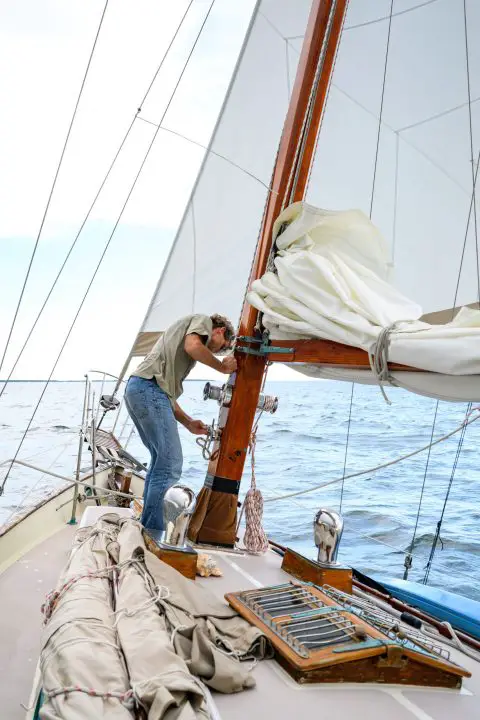
On Deck Sailboat Components – Sailboat Front
The deck of a sailboat is all about safety at sea. Most modern cruising boats are rigged such that there are few things you might need to go “out on deck” or “go forward” for. Instead, these things are rigged back to the cockpit, so you can stay safe and dry while doing your thing.
Since the wet pitching deck of a sailboat at sea is tricky, many of the things you’ll find there are safety-related.
Handholds Places to grab should be located all over the boat, so there’s never a risk of not having something to hold onto to stabilize yourself.
Lifelines Lifelines run the perimeter of the boat and provide a last-ditch safety device. You can grab them, and they should be high enough that they’ll keep you from going overboard.
Stantions The stands that lifelines attach to.
Bow Pulpit The solid rail around the front of the boat provides a safe handhold and a starting point for the lifelines.
Stern Pushpit The same, but on the stern of the boat.
Bulwarks The raised edges of the deck on the sides so that you can’t slip overboard on accident.
No-Skid Decks In areas where people will be walking, the deck is treated with a special product to make the deck “no-skid.” That way, it isn’t slippery, even when wet.
Harness Sailing harnesses are designed to clip onto the boat and keep a sailor onboard even if the boat takes a huge wave or the sailor slips. The harness is the staple of offshore safety.
Jack Lines Jack lines are temporary lines secured on the deck where sailors can attach their harnesses.
Safety Rails Many boats also have extra rails and handholds located in spots where sailors might work on deck, like around the base of the mast.
At the bow of the sailboat, you’ll find her ground tackle.
Bowsprit The bowsprit is the spar that extends from the deck forward of the bow. They’re used on sailboats to gain more sail area since getting the sail farther forward means you can fit a bigger sail. Some have just a spar, while others have a bow platform that is part of the deck.
Ground Tackle The generic word for the anchor, chain, and all the equipment needed to use it.
Anchor The anchor is “the hook” that digs into the seabed and keeps the boat in the same place. Anchors are safety devices since they allow you to stop in shallow water. But they also provide access to areas with no marinas since you can anchor offshore and go in on your dinghy.
Windlass A winch that pulls up the anchor and chain. They can be manual, with a handle, or electric, with a button.
Anchor Rode The generic name for the anchor line. It can be a chain or rope.
Snubber A short length of rope that attaches to the chain to secure it to the boat.
Cleat A horn-shaped piece of deck hardware used to secure a line or rope.
Dorade A large vent opening on the deck of a boat which is designed to let air in but not water.
Hatch Hatches are upward-facing windows that you can open to increase ventilation in the cabin.
Locker A generic term for a cabinet or compartment on a boat.
Going Aloft – Basic Boat Parts of a Sailing Rig
The rig of a boat is the mast and all of its associated parts. If you’re wondering about the many different kinds of rigs that are out there, check out our rundown on sailing terms . There you’ll find definitions for boats with just one mast or multiple masts, like sloop rig and what a boat with two sails in front might be called. It’s a cutter, if you’re wondering.
Spar A generic name for a mast, boom, or any other long pole used to hold a sail. It can be wood or metal or vertical or horizontal.
Mast A vertical spar upon which a sail is hoisted.
Boom A horizontal pole that holds a sail and gives it shape.
Standing Rigging The wires or rope that holds the mast upright.
Stay Standing rigging that goes fore to aft. The head stay runs from the masthead to the bow, and the backstay runs from the masthead to the stern.
Shroud Standing rigging that goes to the sides of the boat. From the masthead to each side runs a cap shroud. Some masts also have intermediate and lower shrouds.
Running Rigging All lines that are used for sail handling are called running rigging.
Halyard A halyard hoists a sail to the top. Each halyard is named for the sail it hoists, i.e., main halyard, jib halyard, spinnaker halyard.
Sheet The sheet controls the sail. If you ease the sheet, the sail is loosened. If you winch the sheet in, it is tightened. Like all running rigging, each sheet is named for the sail it controls, i.e., main sheet, jib sheet, etc.
Traveler If a sail has a boom, the traveler can be used to adjust it from side to side. The sheet is attached to the traveler. Most main sail travelers are located near or in the cockpit.
Gooseneck Fitting The articulating attachment that holds a boom on a mast.
Topping Lift A line that holds the rear end of a boom up. It runs from the masthead to the boom.
Vang A control line pulls the boom down and puts pressure on the sail to keep it flatter. Large boats may have hydraulic or solid vangs.
Blocks The rest of the world would call this a pulley, but sailors call it a block.
Fairleads Deck organizers that keep the lines tidy and running in the direction they should go on deck.
Furler Wraps the sail around the stay so that it doesn’t not have to be raised and lowered each time. Instead, you pull on the sheet and the sail unrolls or “unfurls.”
On Deck – Back of Sailboat
On most boats, the cockpit is located at the back.
Cockpit The main operations center and party central on a sailboat. This is where the skipper sits at the helm, and the linesmen control the sheets.
Coaming The cockpit is protected from waves and splashes by the coaming, the tall walls that enclose it. It also makes the cockpit safe since you are unlikely to get swept overboard from here.
Lazarette The main storage locker in the cockpit.
Helm The station where the skipper steers the boat from.
Tiller If a boat doesn’t have a wheel, it will have a tiller. A tiller is just a handle connected to the rudder, and the skipper pushes or pulls it to steer. Even if a boat has a wheel, it probably has an emergency tiller in case the steering system breaks.
Winch Winches provide a mechanical advantage to make it easier to haul in lines. In the cockpit, all the sheets have winches.
Rope Clutch A clutch locks a rope in place so it can be taken off a winch, even when loaded.
Jammer A jammer does the same as a clutch, but it’s a simpler device found on smaller boats.
Weathervane Steering A weathervane is used to steer the boat like an autopilot but uses wind direction and mechanical linkages. As a result, they use no power and never complain about their workload. They mount on the stern of the boat and are controlled by simple lines to the cockpit. Windvanes are often referred to by their brand name, i.e., Monitor or Hydrovane
Davits Arms on the back of the boat that lift the dinghy or tender.
Swim Platform A flat area on the transom that allows you easy access in and out of the water. A standard feature on newer boats but not on older ones that just had long swim ladders.
Catamaran Sailboat Parts Explained
For the most part, the components of a catamaran share the same terms and labels that they would on a monohull. Cats often have a few extra features with other names, however.
Hulls A catamaran is made with two hulls connected together. Each hull has an interior, just like a monohull sailboat does. The cabins and heads are usually located in the hulls, and sometimes the galley is also down below.
Owner’s Version A catamaran layout that is made for private owners. Usually, one hull will be dedicated to the owner’s stateroom with a private door, a huge head with a walk-in shower, and a large berth.
Charter Version It has more staterooms and heads than an owner’s version does. Usually, a charter cat has at least two staterooms and heads in each hull.
Bridge Deck The deck connects the two hulls, which usually has the salon and cockpit. If the design is “galley up,” the galley will be on the bridgedeck with the salon.
Cockpit Just like on a monohull, the cockpit is the operations center. But catamarans have huge cockpits, and there is usually a large outdoor dining table and entertainment area as well.
Forward Cockpit Some designs have lounge seating forward of the salon on the bridgedeck.
Flybridge Some designs have the main helm mounted on top of the salon on an upper level. It’s almost the catamaran equivalent of a center cockpit.
Trampolines Forward of the salon, the bridge deck stops, and a trampoline connects the hulls over the water. This is a great place to hang out, but it’s an integral safety feature for a catamaran. The trampolines allow any water to immediately drain away, not weighing the boat down on the bow. This prevents a pitchpole when a boat capsizes by tipping forward into the water.
Cross Beam and Dolphin Striker Since there is no center bow to mount the head stay and foresail, catamarans use a cross beam that connects the hull. A piece of rigging keeps this in place, and it’s called the dolphin striker. No dolphins were hurt in the rigging of these boats, however.
Anchor Bridle Instead of a single snubber line on the anchor, catamarans use a wide bridle that connects each hull bow to the anchor line.
Parts of a Sail Boat FAQs
What are parts of a sailboat called.
Sailing is a challenging hobby, and one reason it’s so difficult for beginners is because every part of a sailboat has its own name. From each wire and rope to every piece of deck hardware, a beginner must learn the basics before they can even start.
What is the front part of a sailboat called?
The front part of a sailboat is called the bow. Many boats also have a spar extending forward of the hull, called the bowsprit.
What are the 5 basic parts of every sailboat?
Every sailboat has at least these five parts, but most boats have many more. Hull Keel Rudder Rigging Sails
Matt has been boating around Florida for over 25 years in everything from small powerboats to large cruising catamarans. He currently lives aboard a 38-foot Cabo Rico sailboat with his wife Lucy and adventure dog Chelsea. Together, they cruise between winters in The Bahamas and summers in the Chesapeake Bay.
Leave a comment
Your email address will not be published. Required fields are marked *
Save my name, email, and website in this browser for the next time I comment.

Learn How to Sail a Catamaran: Beginner’s Guide to Mastering Catamaran Sailing
Alex Morgan
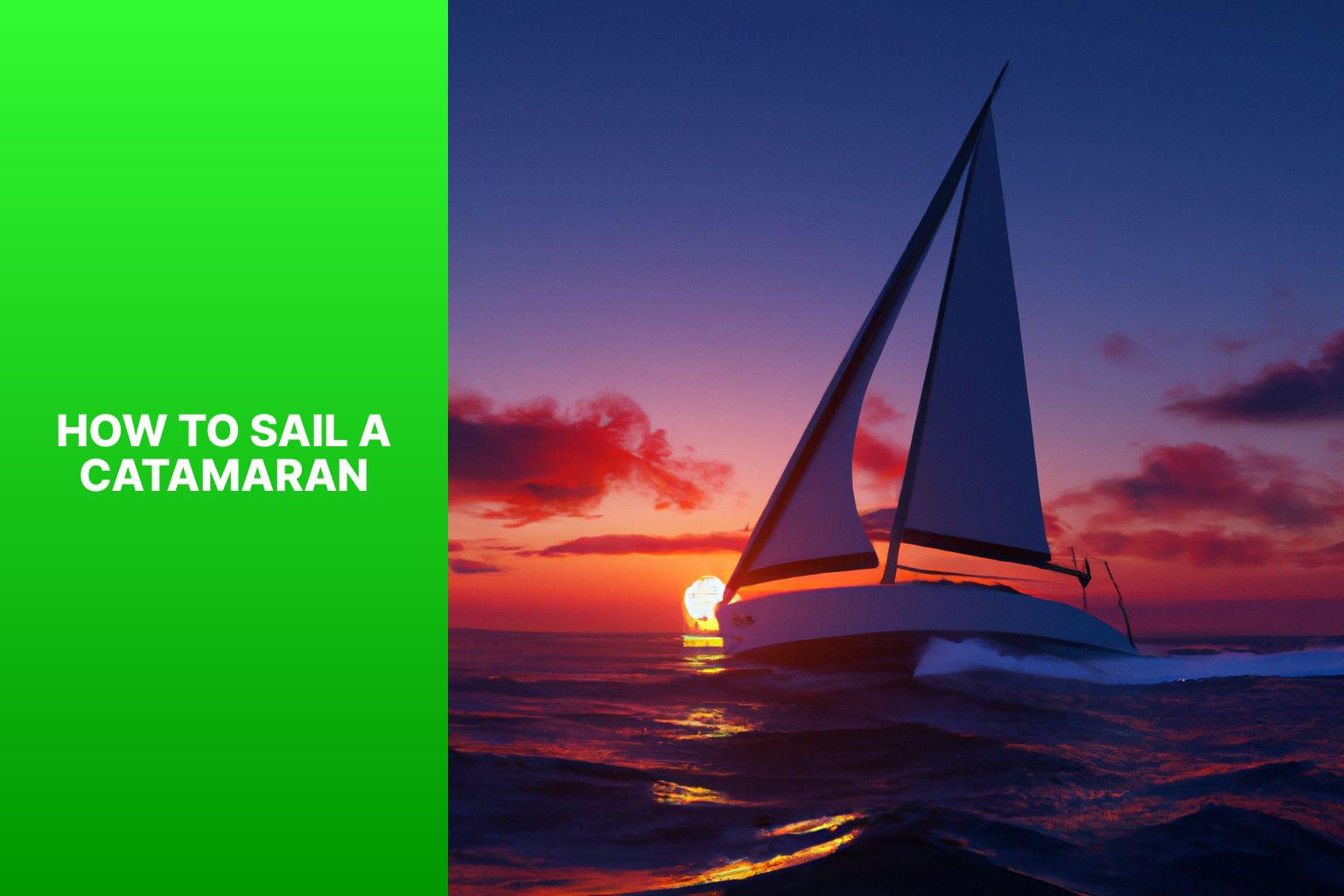
Sailing a catamaran offers a unique and thrilling experience on the water. Whether you are a seasoned sailor or a beginner, understanding the essentials of catamaran sailing is vital to have a safe and enjoyable journey. In this guide, we will explore the different aspects of sailing a catamaran, from its advantages to the essential equipment, basic sailing techniques, advanced maneuvers, and navigation and safety tips. Let’s dive in and discover how to sail a catamaran like a pro.
Introduction to Catamarans: Catamarans are multi-hulled vessels that have gained popularity in the sailing world for their unique design and capabilities. Unlike traditional single-hulled sailboats, catamarans feature two parallel hulls connected by a deck, offering stability and spaciousness. The design of a catamaran allows for enhanced performance, comfort, and versatility.
Why Choose a Catamaran for Sailing? Before delving into the specifics of sailing a catamaran, it is important to understand the advantages that these vessels offer:
1. Stability on the Water: Catamarans are known for their exceptional stability, which is attributed to their wide and buoyant hulls. This stability makes them less prone to heeling or tipping over, providing a smoother sailing experience.
2. Spaciousness and Comfort: With their wide beam, catamarans offer ample space and room for movement both above and below deck. The spacious interiors often feature multiple cabins, a large saloon, and a well-equipped galley, providing comfort and convenience during extended trips.
3. Shallow Draft: Catamarans have a shallow draft, meaning they require less depth of water to operate. This allows them to explore shallower areas and navigate closer to shorelines, expanding the cruising grounds and opening up new destinations.
4. Speed and Performance: Due to their design and reduced drag, catamarans are renowned for their speed and performance. They have the ability to reach higher speeds, making them perfect for those seeking an exhilarating sailing experience.
By understanding the advantages of sailing a catamaran, you can appreciate why these vessels are a popular choice amongst sailors. In the following sections, we will delve into the essential equipment needed for catamaran sailing, basic and advanced sailing techniques, as well as navigation and safety tips to ensure a successful and enjoyable catamaran sailing experience.
Key takeaway:
- Stability on the water: Catamarans offer excellent stability, making them a preferred choice for sailing. The two hulls provide a wider base, reducing the risk of capsizing and providing a smooth sailing experience.
- Spaciousness and comfort: Catamarans offer more living space compared to monohulls, providing comfort for passengers and crew. The wide beam allows for spacious cabins, lounging areas, and enhanced privacy.
- Speed and performance: Catamarans are known for their speed and performance. With two hulls and reduced drag, catamarans can achieve higher speeds and offer thrilling sailing experiences to enthusiasts.
Why Choose a Catamaran for Sailing?
When it comes to sailing, why should you choose a catamaran? Well, for starters, they offer unparalleled stability on the water. Not to mention, their spaciousness and comfort make for an enjoyable and relaxing sailing experience. Catamarans have a shallow draft , allowing you to explore shallower waters that other boats may not be able to reach. And let’s not forget about their impressive speed and performance . So, if you’re looking for a thrilling and comfortable sailing adventure, a catamaran is the way to go!
Stability on the Water
Stability on the Water is crucial when sailing a catamaran. Catamarans have twin hulls that create a wide and stable platform, distributing weight evenly and reducing the risk of capsizing. The catamaran’s wide beam also enhances stability, resisting tipping.
Catamarans offer increased comfort and safety on the water. Passengers can move freely without losing balance or feeling seasick. The stable platform also allows for activities like sunbathing or dining, making for a pleasant experience.
Catamarans have better handling and maneuverability , thanks to their stability. They maintain a level sailing position even in rough waters, providing a smoother and more comfortable ride. This stability also enables higher speeds, perfect for those seeking excitement .
It is important to note that external factors like wind and waves can still affect catamarans’ stability. Proper sailing techniques and safety protocols are essential for optimal stability.
Spaciousness and Comfort
Catamarans offer ample space and comfort, making them ideal for sailing enthusiasts. The large living areas and wide hulls provide plenty of room to relax and enjoy the water. The trampoline between the hulls is a comfortable spot for sunbathing and taking in the views.
The spaciousness of catamarans translates to comfortable interiors with multiple cabins, bathrooms, and a well-equipped galley. This allows for privacy and convenience, perfect for extended sailing trips or larger groups.
With their dual-hull design, catamarans offer excellent stability on the water, reducing the likelihood of seasickness and providing a smooth sailing experience.
The wide beam of a catamaran minimizes motion, creating a stable and enjoyable ride. This is beneficial for those sensitive to motion or seeking a relaxed sailing experience.
Shallow Draft
The shallow draft of a catamaran allows it to navigate in shallow waters, which other types of boats cannot access. This advantage is especially helpful when exploring coastal areas, lagoons, or cruising around sandbanks or coral reefs.
The catamaran achieves a shallow draft by designing the hulls with reduced depth. This allows the boat to float in shallower waters, reducing the risk of running aground and enabling access to secluded anchorages and coves. In addition, the shallow draft enhances maneuverability in tight spaces, such as narrow channels or smaller marinas.
Compared to deeper-draft monohull sailboats, catamarans with a shallow draft also have less vulnerability to underwater obstacles like rocks or coral, making sailing safer. It’s important to note that each catamaran model will have its own specific shallow draft measurement provided by the manufacturer.
When planning sailing routes and exploring areas with limited depth, considering the shallow draft of a catamaran is crucial for a safe and enjoyable experience on the water.
Speed and Performance
A catamaran is well-known for its exceptional speed and performance on the water, which makes it a preferred choice for sailing enthusiasts.
Due to its ingenious dual-hull design, a catamaran experiences minimal drag in the water, resulting in the ability to reach higher speeds compared to monohull sailboats.
The wide beam of a catamaran not only enhances its stability but also reduces the risk of capsizing, enabling faster sailing in stronger winds.
With its lightweight structure and sleek shape, a catamaran effortlessly glides through the water, maximizing its speed potential.
Catamarans consistently maintain higher speeds, making them an ideal option for lengthy sailing trips or competitive racing.
Catamarans have a reduced wetted surface area, which minimizes resistance from the water and leads to improved efficiency and performance.
Another advantage of a catamaran is its shallow draft , allowing it to navigate shallower waters with ease, thereby increasing its versatility and suitability for coastal exploration.
Catamarans boast a spacious deck layout , providing ample room for passengers to move around comfortably and accommodating various amenities and recreational activities.
Catamarans offer a smooth and stable sailing experience, even in choppy or rough sea conditions, ensuring optimal comfort for all those on board.
Essential Equipment for Sailing a Catamaran
When it comes to sailing a catamaran, having the right equipment is crucial. In this section, we’ll dive into the essential gear you’ll need for a smooth sailing experience. From the sails and rigging that harness the wind’s power to the rudder and steering controls that guide your vessel, we’ll cover it all. We’ll also explore the importance of anchoring and docking techniques , as well as the safety gear that ensures you’re prepared for any unexpected challenges on the open water. Get ready to gear up and set sail!
Sails and Rigging
When it comes to sailing a catamaran, understanding the importance of sails and rigging is crucial. The sails power the boat and enable it to move through the water, while the rigging supports and controls the sails. Here are some key points to consider about sails and rigging:
1. Sail design: The design of the sails, including their size, shape, and material, plays a significant role in the catamaran’s performance. High-performance racing catamarans often have larger, more efficient sails that generate greater speed.
2. Rigging setup: The rigging on a catamaran consists of the mast, shrouds, and various lines and controls. Proper tensioning and adjustment of the rigging ensures correct sail positioning and overall balance of the boat.
3. Sail controls: Catamarans have several controls for adjusting the sails while sailing. These include the mainsheet, which controls the main sail, and the jib sheets, which control the jib sail. Learning how to trim and adjust these controls optimizes performance.
4. Sail handling: Proper handling of the sails is crucial for smooth sailing. This involves hoisting, lowering, and reefing the sails in strong winds. Understanding safe and efficient sail handling techniques is essential.
Now, let me share a true story to illustrate the importance of sails and rigging. During a sailing race, a catamaran led the fleet due to its well-designed sails and properly rigged mast. The crew efficiently adjusted the sails using the various controls, allowing the catamaran to effectively harness the wind’s power. As a result, they maintained optimal speed and maneuverability, securing victory in the race. This highlights how understanding and utilizing sails and rigging can significantly impact sailing performance.
Rudder and Steering
When it comes to catamaran sailing, the rudder and steering are crucial for maneuvering the vessel efficiently. Here are some key points to consider:
- The rudder is an important part of a catamaran’s steering system. It is usually located at the rear of the boat and controls the vessel’s direction.
- Catamarans typically have two rudders , one on each hull, which provide improved stability and control.
- Steering a catamaran involves using the tiller or wheel, depending on the type of steering system. The helmsman turns the tiller or wheel to adjust the direction, which in turn moves the rudders .
- When sailing upwind, it is necessary to steer slightly higher into the wind to maintain speed and prevent excessive leeway.
- Downwind sailing requires adjusting the course to downwind angles, allowing the wind to fill the sails from behind.
- Proper rudder and steering adjustments are essential for maintaining balance and preventing excessive heel or capsizing.
- During tacking and jibing, it is important to have the rudder in the correct position to maneuver the catamaran smoothly without losing speed or control.
- Regular inspection and maintenance of the rudder and steering system are crucial to ensure functionality and prevent any issues while sailing.
By understanding and utilizing the rudder and steering effectively, catamaran sailors can confidently navigate the waters and enjoy a safe and enjoyable sailing experience.
Anchoring and Docking
When anchoring and docking a catamaran, it is important to consider the following factors:
1. Choose a suitable anchor for the size and weight of your catamaran , taking into account the seabed type and prevailing weather conditions. The plow anchor is widely favored due to its strong holding power and versatility.
2. Lower the anchor gently and gradually, allowing it to settle properly on the seabed. Pay attention to the water depth and use a scope ratio of 7:1 (7 feet of anchor rode for every foot of water depth) to ensure sufficient holding power.
3. Secure the catamaran by attaching the anchor rode to a cleat or designated anchor attachment point on the boat. Make sure to apply proper tension to prevent excessive movement.
4. When approaching the dock, do so slowly and cautiously, taking into consideration factors such as wind , current , and nearby boats. Use your engines and rudders to maneuver smoothly.
5. Employ appropriate docking techniques based on the type and design of the dock. Consider utilizing spring lines or fenders to assist in securing the boat and protecting the hulls.
Pro-tip: Regularly practicing anchoring and docking maneuvers will improve your skills and give you confidence in handling your catamaran under different conditions. Proper technique and experience will greatly enhance your overall sailing experience.
Safety Gear
When sailing a catamaran, having the right safety gear is crucial. Here are some essential safety gear items for catamaran sailors:
- Life Jackets: Wear properly fitting and Coast Guard-approved life jackets for everyone onboard.
- Throwable Devices: Keep easily accessible throwable devices, such as life rings or cushions, for emergencies.
- EPIRB: An Emergency Position Indicating Radio Beacon (EPIRB) helps rescuers locate you in emergencies.
- Flares: Carry a set of marine flares to signal for help in low visibility or emergency situations. Check the expiration dates regularly.
- Fire Extinguishers: Have at least one marine-grade fire extinguisher onboard to quickly put out potential fires.
- First Aid Kit: Keep a well-stocked first aid kit onboard to treat minor injuries or provide initial care before professional help arrives.
- Navigation Lights: Ensure your catamaran has properly functioning navigation lights for visibility during low-light conditions.
- VHF Radio: A VHF marine radio is essential for communication with other vessels and contacting emergency services if needed.
- Anchor and Rode: Carry a reliable anchor and sufficient anchor rode for safe anchoring when needed.
Remember to familiarize yourself with the operation and use of all safety gear onboard your catamaran to be prepared for unexpected situations.
Basic Sailing Techniques for Catamarans
Mastering the art of sailing a catamaran requires a solid foundation in basic sailing techniques. In this section, we’ll dive into the essential skills you need to navigate the waters with confidence. From understanding points of sail to mastering tacking and jibing , we’ll cover the maneuvers that will enhance your catamaran sailing prowess. We’ll explore the crucial aspects of sail trim and balance , as well as maneuvering in different wind conditions . Get ready to set sail and embrace the thrill of catamaran adventures!
Understanding Points of Sail
Understanding points of sail is crucial for successful catamaran sailing. It refers to the different angles at which a sailboat can sail relative to the wind. Different techniques and adjustments are required for optimal performance based on the point of sail. The main points of sail are:
1. No Sail: When the boat is not under sail and the sails are completely down.
2. Close Hauled: Sailing as close to the wind direction as possible, typically at an angle of 45 degrees or less.
3. Beam Reach: Sailing perpendicular to the wind direction, with the wind coming directly from either side of the boat.
4. Broad Reach: Sailing with the wind coming from behind the boat at an angle.
5. Running: Sailing directly downwind, with the wind coming from directly behind the boat.
To effectively sail a catamaran, it is crucial to understand how to adjust and trim the sails, as well as steer the boat based on the current point of sail. Practice and experience will enhance your proficiency in handling different wind conditions and making the necessary adjustments for optimal speed and performance.
Remember, prioritize safety while sailing. Familiarize yourself with navigation rules, weather patterns, and emergency preparedness to ensure a smooth and enjoyable catamaran sailing experience.
Tacking and Jibing
Tacking and jibing are vital sailing techniques for catamarans . These maneuvers allow you to change direction and navigate effectively. Below are the step-by-step instructions for tacking and jibing:
1. Tacking:
– Direct the catamaran towards the wind until the sails start to luff . – Release the jib sheet and ensure it smoothly crosses the boat, avoiding any entanglement. – Turn the bow of the catamaran into the wind, managing the mainsail as it fills with wind on the opposite side. – Adjust the jib sheet on the new leeward side to capture the wind and maintain speed. – Make any necessary adjustments to the heading and sails to resume your desired course.
– Prepare the catamaran by getting the jib and mainsail ready for the change in direction. – Steer the catamaran away from the wind, ensuring that the mainsail is backed by the wind. – Release the mainsheet and swiftly swing the boom across the cockpit to the opposite side. – Trim the mainsail and jib to harness the wind from the new direction, effectively maintaining control and speed. – Adjust the heading and sails as needed to resume your desired course.
By mastering these techniques, you can skillfully maneuver your catamaran, enhancing the enjoyment and efficiency of your sailing. Always consider the wind direction and adjust your sails accordingly to maintain control and optimize efficiency throughout your journey.
Sail Trim and Balance
Sail trim and balance are crucial for effective catamaran sailing. Proper sail trim ensures optimal performance and speed , while balancing the sails evenly distribute the pressure between them and prevent excessive heeling of the boat . Adjusting the angle, tension, and position of the sails in response to wind conditions is essential for achieving the desired sail trim and balance.
One way to achieve sail trim and balance is by adjusting the position of the traveler , which controls the lateral movement of the mainsail. Moving the traveler to leeward allows the sail to take in more wind, improving the sail trim, while moving it to windward reduces exposure, compensating for gusts or changes in wind direction.
In addition, adjusting the tension of the halyards and sheets can further fine-tune sail trim and balance. By tightening or loosening these lines, you can optimize the shape and curvature of the sails , ultimately improving their performance.
It is important to continuously monitor and make adjustments to sail trim and balance while sailing. Being responsive to changing wind conditions and making timely adjustments will enhance overall performance and ensure a smoother, more enjoyable sailing experience .
Keep in mind that mastering sail trim and balance takes practice and experience . Paying attention to these factors will significantly improve your catamaran sailing abilities.
Maneuvering in Different Wind Conditions
Maneuvering a catamaran in different wind conditions requires specific steps for optimal control and performance. In order to achieve this, it is important to assess the wind direction by observing nearby objects or using a wind indicator. Once the wind direction is determined, adjust the sails based on the wind direction. For downwind sailing, set the mainsail and jib on opposite sides, while for upwind sailing, position the sails closer together.
Next, it is crucial to trim the sails properly to maximize lift and minimize drag. In lighter winds, the sails should be loosened, while in stronger winds, they should be tightened. Using the mainsail traveler to adjust the position of the mainsail sheet can optimize sail shape and control in different wind angles.
To steer the catamaran, adjust the rudder accordingly. Smaller course corrections should be made in light winds, while larger adjustments are necessary in stronger winds.
In gusty conditions, it is important to react to gusts by depowering the sails. This can be done by easing the sheets or heading up into the wind, which helps maintain stability.
It is essential to be aware of wind shifts and make necessary adjustments to the course and sail trim.
Practicing sailing techniques such as tacking , jibing , and sailing close-hauled or downwind can significantly improve proficiency in handling the catamaran in various wind conditions.
By following these steps, catamaran sailors can confidently navigate and maneuver their vessel in different wind conditions, ensuring a safe and enjoyable sailing experience.
Advanced Catamaran Sailing Techniques
Ready to take your catamaran sailing skills to the next level? In this section, we’ll dive into the thrilling world of advanced catamaran sailing techniques . Get ready to learn about the exhilarating art of spinnaker sailing , the adrenaline-pumping experience of flying a hull , the secrets of performance tuning , and the challenges and strategies of handling heavy weather conditions . Brace yourself for an adventure on the high seas as we explore the exciting realm of catamaran sailing like never before.
Spinnaker Sailing
Spinnaker sailing is a vital technique used in catamaran sailing to optimize speed. The spinnaker , a balloon-shaped sail, is strategically flown in front of the boat while sailing downwind. By harnessing the wind from a different direction, the spinnaker empowers the catamaran to sail faster and with greater efficiency.
To set up the spinnaker, the crew skillfully hoists it up the mast using a halyard and securely attaches the corners of the sail to the spinnaker pole . Once elevated, the crew precisely trims the sail by adjusting the sheets , controlling its shape and angle. This requires coordination and expertise as the crew works together to steer the boat and fine-tune the sails for optimal balance and speed.
Maintaining awareness of wind conditions is crucial to adapting the spinnaker and avoiding excessive power or loss of control. Spinnaker sailing significantly enhances the performance of a catamaran, enabling it to achieve remarkable speeds and maximize downwind navigation.
When honing spinnaker sailing skills, it is advised to commence in lighter wind conditions and progressively advance as proficiency accrues. Proper training and diligent practice are imperative for a safe and gratifying sailing experience.
Flying a Hull
Flying a hull is a technique used in catamaran sailing. It involves lifting one hull out of the water, allowing the boat to glide on just one hull while the other remains elevated. This technique, known as flying a hull , is commonly used in high winds and requires practice and experience.
To fly a hull, the sailor must position their weight on the windward hull, leveraging their body weight to lift the hull out of the water. This creates less resistance, increasing the catamaran's speed and performance. It can be an exhilarating experience, as the boat skims across the water.
Flying a hull is not without risks and should only be attempted by experienced sailors. It requires a good understanding of the catamaran's dynamics and stability. Proper sail trim and balance are crucial to maintain control and prevent capsizing.
When flying a hull, be prepared for sudden gusts of wind and rapid changes in boat speed. Constant adjustments to sail trim and weight distribution are necessary for stability and control. Prioritize safety, wear appropriate gear, and always be mindful of your limits and the current conditions. With practice and experience, flying a hull can be a thrilling and rewarding aspect of catamaran sailing.
Performance Tuning
- Maintain and inspect all systems and equipment regularly. This includes checking rigging tension , inspecting sails for damage, and ensuring proper alignment of rudders and steering system .
- Clean hull regularly to remove marine growth that can create drag and slow you down.
- Maximize speed through proper sail trim. Experiment with adjustments to find the perfect balance between power and efficiency. Adjust mainsail and jib sheets to achieve desired sail shape and angle to the wind.
- Distribute weight evenly throughout the catamaran for stability and performance. Balance passengers , equipment , and supplies evenly on both hulls to prevent unnecessary drag.
Frequent performance tuning will help you get the most out of your catamaran, allowing for faster and more efficient sailing. A well-tuned catamaran can significantly enhance your sailing experience and give you a competitive edge in races.
Fact: Performance tuning can improve catamaran speed by up to 10%, allowing for swift gliding through the water.
Heavy Weather Sailing
In heavy weather sailing, taking proper precautions is crucial to ensure the safety of both the crew and the catamaran. Follow the steps below when sailing in challenging weather conditions:
1. Check the weather forecast: Before heading out, always check the forecast for potential storms or strong winds. This will help you decide if it is safe to sail.
2. Reef the sails: Reduce the exposed sail area in strong winds. Partially furl or lower the sails to maintain control and stability.
3. Ensure proper ballast: Distribute weight in the catamaran to maintain balance and stability. Shift crew members or equipment to the windward side to offset strong gusts.
4. Monitor the sea state: Pay attention to the sea condition and adjust your course accordingly. Avoid large waves or swells that may cause the catamaran to broach or capsize.
5. Have appropriate safety gear: Carry essential safety equipment like life jackets, harnesses, and tethers. Ensure all crew members are familiar with their use.
6. Maintain constant communication: Keep in touch with other boats or shore stations to report your position and receive important updates or warnings.
7. Stay vigilant: Continuously monitor weather and sea conditions, making adjustments as necessary. Be prepared to make quick decisions and react to environmental changes.
To sail a catamaran safely in heavy weather, proper training and experience are important. If you are a beginner or unfamiliar with heavy weather sailing, seek guidance from a qualified instructor. Remember, safety should always be the top priority when facing challenging weather conditions at sea.
Navigation and Safety Tips for Catamaran Sailing
When it comes to sailing a catamaran, navigation and safety are of paramount importance . In this section, we’ll discover essential tips and techniques that will help you navigate channels and obstacles with ease . We’ll also uncover the mysteries of understanding weather patterns for a smoother sailing experience. To ensure safety, we’ll delve into the art of mooring and docking safely . And finally, we’ll touch upon emergency preparedness , equipping you with the knowledge needed to tackle unexpected situations. Let’s set sail and explore the fascinating world of catamaran sailing!
Navigating Channels and Obstacles
When sailing a catamaran and navigating channels and obstacles, it is important to follow certain steps to ensure safety and efficiency.
1. Plan your route: Take the time to study charts and navigation aids, identifying the safest and most efficient route. Pay attention to potential hazards such as sandbars, reefs, or underwater obstructions.
2. Stay within marked channels: Stick to designated channels and be vigilant about watching navigational markers that guide boats safely through the area.
3. Maintain a safe speed: Slow down when navigating through narrow channels or around obstacles to have better control and quicker reactions if needed.
4. Keep a lookout: Assign a crew member the responsibility of actively watching for boats, buoys, and obstructions. Good communication among the crew is crucial in ensuring everyone’s safety.
5. Use navigation aids: Make full use of onboard GPS systems, charts, and radar to accurately determine your position, marker distance, and potential hazards.
6. Communicate with other boaters: In busy channels, it is important to use VHF radio or visual signals to communicate with other boaters, helping to avoid collisions and ensure safe navigation.
7. Be prepared for changing conditions: Keep in mind that channels can be affected by tides, currents, and weather. Stay updated with the latest information and adjust your navigation plan accordingly.
To successfully navigate channels and obstacles, it is important to practice safe and vigilant sailing techniques. Always prioritize the safety of your crew and vessel, and never underestimate the importance of proper navigation.
Understanding Weather Patterns
Understanding weather patterns is crucial for safe and successful catamaran sailing. Here are some key points to consider:
- Study weather forecasts: Regularly check weather forecasts before your sailing trip. Look for details such as wind speed, wind direction, and any warnings or advisories.
- Learn about local weather patterns: Different locations have unique weather patterns. Understand the typical wind patterns, temperature changes, and seasonal variations in your sailing area to anticipate potential weather changes.
- Recognize signs of changing weather: Keep an eye out for signs of changing conditions while on the water. Signs may include darkening clouds, shifting winds, sudden temperature drops, or changes in wave patterns.
- Be prepared for different weather conditions: Have necessary gear and equipment for various conditions. This includes proper clothing, safety gear, and navigation tools. Prepare for storms, high winds, and other challenging weather situations.
- Adjust your sailing plans accordingly: Based on the forecast and observations while sailing, make necessary adjustments to your route, timing, and activities. Safety should always be the top priority.
Understanding weather patterns will help you make informed decisions and ensure a safe and enjoyable catamaran sailing experience. Prioritize safety and consult with experienced sailors or local authorities when in doubt. Safe sailing and smooth voyages!
Mooring and Docking Safely
Mooring and docking safely are crucial when sailing a catamaran . Here are the steps to follow:
1. Approach the dock or mooring area carefully, considering wind and current conditions.
2. Assign crew members to handle lines and fenders for a smooth docking process.
3. Use fenders to protect the hulls of the catamaran during mooring and docking safely.
4. First , secure the bow line to prevent the catamaran from drifting away.
5. Attach the stern lines after securing the bow line to ensure mooring and docking safely while keeping the catamaran aligned with the dock or mooring.
6. Communicate with the crew to ensure everyone knows their roles and responsibilities during mooring and docking safely.
7. When leaving the dock or mooring area, untie the lines in reverse order, starting with the stern lines and finishing with the bow line.
Suggestions for mooring and docking safely include:
– Practice docking and maneuvering in different conditions to improve skills.
– Consider using spring lines to control the catamaran’s movement while mooring and docking safely.
– Be mindful of nearby boats, obstacles, and other watercraft to avoid collisions.
– Invest in high-quality lines, fenders, and docking equipment for stability and safety.
– Stay updated with local boating regulations and guidelines for mooring and docking safely in specific areas.
Remember, practicing and having a well-prepared crew can make a significant difference when it comes to mooring and docking safely with a catamaran.
Emergency Preparedness
When catamaran sailing, emergency preparedness is crucial for everyone’s safety. Here are some essential tips for handling emergencies on a catamaran:
- Always have a well-stocked first aid kit on board, including bandages , antiseptic ointments , and seasickness medication .
- Have a reliable communication device , like a VHF radio or satellite phone , to call for help in emergencies .
- Practice regular safety drills with your crew to familiarize them with emergency procedures , including man overboard drills and fire drills .
- Understand basic navigation techniques and be prepared to use navigational aids, such as GPS or charts , in case of equipment failure .
- Carry extra safety equipment, like life jackets , flares , and a life raft , for rough weather or if the boat becomes disabled.
- Keep a strong anchor and anchor line on board to use in case of engine failure or other emergencies that require quick anchoring.
- Stay updated on weather conditions and be prepared to change course or seek shelter if severe weather is forecasted.
- Foster good communication and teamwork among your crew to ensure a coordinated response to emergencies and to maintain calm in stressful situations.
By prioritizing emergency preparedness and taking necessary precautions, you can enjoy a safe and enjoyable catamaran sailing experience.
Some Facts About How To Sail A Catamaran:
- ✅ Understanding a Catamaran: A catamaran is a multi-hulled water vessel with two parallel hulls and sails. Small catamarans, also known as beach catamarans, are the focus of this guide.
- ✅ Essential Parts of a Catamaran: The essential parts of a catamaran include the hull, tiller, rudder, keel, mast, mainsail, foresail, and boom. Each part plays a crucial role in the catamaran’s operation.
- ✅ Common Sailing Terminologies: Some important sailing terms to know include point of sail, port, starboard, bow/stern, tack, jib, heeling, windward, leeward, aboard, halyards, and sheets.
- ✅ Learning How a Small Catamaran Works: The wind is what propels a catamaran. By raising and trimming the sails, you can capture the wind’s power and move the catamaran. The tiller is used to control the rudder and steer the catamaran in your desired direction.
- ✅ Getting Equipped: Before setting sail, it is important to have the right sailing gear. This includes fitting shoes, sailing gloves, polarized sunglasses, a windbreaker, a logbook, a compass/GPS, a first aid kit, a phone and power bank, and enough food and water.
Frequently Asked Questions
What are the advantages of sailing a catamaran over a monohull.
Catamarans offer several advantages over monohulls, including more living space, greater stability, and less likelihood of causing people to fall overboard. Catamarans also have two engines, providing increased safety in case of engine problems.
What is the process for learning to sail a catamaran?
Learning to sail a catamaran requires hands-on experience. Nautilus offers week-long live aboard courses in various locations, providing an intensive course where individuals can gain practical skills. Successful completion of the course earns ASA certification, allowing them to charter catamarans internationally.
What are the essential parts of a small catamaran?
The essential parts of a small catamaran include the hull, tiller, rudder, keel, mast, mainsail, foresail, and boom. Each part plays a crucial role in the catamaran’s operation.
How do I trim the sails on a catamaran?
Trimming the sails involves adjusting their positioning to control the catamaran’s movement. Tighten or loosen the sheets to achieve the desired sail shape and maximize the catamaran’s performance in different wind conditions.
Where can I find top-quality catamarans designed by renowned boat builders?
The Moorings offers exclusive access to top-quality catamarans designed by Robertson & Caine, a renowned South African boat builder. They provide a range of options for sailing vacations and ownership yachts.
Are catamarans safe for offshore sailing?
Catamarans have undergone significant design improvements and are considered safe and stable for offshore sailing. They offer greater stability, duplicate navigation systems, and reduced risk of capsizing. It is still important to adhere to safety protocols and consider weather conditions for a safe voyage.
About the author
Leave a Reply Cancel reply
Your email address will not be published. Required fields are marked *
Save my name, email, and website in this browser for the next time I comment.
Latest posts

The history of sailing – from ancient times to modern adventures
History of Sailing Sailing is a time-honored tradition that has evolved over millennia, from its humble beginnings as a means of transportation to a beloved modern-day recreational activity. The history of sailing is a fascinating journey that spans cultures and centuries, rich in innovation and adventure. In this article, we’ll explore the remarkable evolution of…

Sailing Solo: Adventures and Challenges of Single-Handed Sailing
Solo Sailing Sailing has always been a pursuit of freedom, adventure, and self-discovery. While sailing with a crew is a fantastic experience, there’s a unique allure to sailing solo – just you, the wind, and the open sea. Single-handed sailing, as it’s often called, is a journey of self-reliance, resilience, and the ultimate test of…

Sustainable Sailing: Eco-Friendly Practices on the boat
Eco Friendly Sailing Sailing is an exhilarating and timeless way to explore the beauty of the open water, but it’s important to remember that our oceans and environment need our protection. Sustainable sailing, which involves eco-friendly practices and mindful decision-making, allows sailors to enjoy their adventures while minimizing their impact on the environment. In this…

Basic Sailing Terminology: Sailboat Parts Explained
Sailing is a timeless activity that has captivated the hearts of adventurous souls for centuries. But, let’s face it, for beginners, sailing can be as intimidating as trying to navigate through a dark, labyrinthine maze with a blindfold on. The vast array of sailing terminology, sailboat parts and jargon can seem like a foreign language that only the most experienced seafarers can comprehend.
Fear not, intrepid sailor, for this comprehensive guide on basic sailing terminology for beginners will help you navigate the choppy waters of sailing jargon with ease. From learning the difference between the bow and stern to mastering the intricacies of sail trim, this article will equip you with all the knowledge you need to confidently take to the seas. So hoist the mainsail, batten down the hatches, and let’s set sail on this exciting journey of discovery!
Parts of a Sailboat
Before you can begin your sailing adventure, it’s important to familiarize yourself with the different parts of a sailboat. From the sleek bow to the sturdy keel, each component plays a vital role in keeping your vessel afloat and propelling you forward through the waves.

- Hull The main body of the boat that sits in the water and provides buoyancy and stability.
- Bow The front of the boat that meets the water and helps to determine its direction.
- Stern The rear of the boat where the rudder and motor are located.
- Deck The flat surface of the boat that you stand on, which can include various features such as seating, storage compartments, and hatches.
- Cockpit The recessed area of the deck where the skipper and crew sit or stand while sailing, which allows for easy access to the sail controls and provides protection from the wind and waves.
- Keel The long, fin-shaped structure beneath the waterline that helps to keep the boat stable and upright.
- Rudder The flat, vertical surface located at the stern of the boat that is used to steer and control the direction of the boat.
- Tiller or wheel The mechanism used to steer the boat, either in the form of a tiller (a handle attached to the rudder) or a wheel (similar to the steering wheel of a car).
- Mast The tall, vertical pole that supports the sails and allows you to catch the wind and move through the water.
- Boom The horizontal pole extending off the bottom of the mast that holds the bottom edge of the mainsail.
- Mainsail The large, triangular-shaped sail attached to the mast and boom that captures the wind’s power to propel the boat forward.
- Jib The smaller, triangular-shaped sail attached to the bow that helps to steer the boat and balance the force of the mainsail.
- Rigging The network of ropes and cables that hold the mast and sails in place and help control their movement.
Sail Terminology
Understanding the terminology associated with sails is critical to becoming a successful sailor. Here are 12 of the most important sail terms you should know, along with brief explanations for each:

- Luff The forward edge of a sail that is attached to the mast, allowing you to adjust the sail’s shape and angle to catch more wind.
- Leech The aft edge of a sail that is attached to the boom, which helps to control the sail’s shape and release the wind as needed.
- Foot The lower edge of a sail that is attached to the boom, which helps to control the sail’s shape and power.
- Head The top of a sail that is attached to the mast and controls the sail’s overall shape and angle.
- Battens The long, thin strips inserted into the pockets of a sail to help maintain its shape and stiffness.
- Clew The bottom corner of a sail that is attached to the boom or sheet, which helps to control the sail’s shape and power.
- Tack The bottom forward corner of a sail that is attached to the boat or a line, which helps to control the sail’s shape and power.
- Sail Area The total area of a sail, which is measured in square feet or meters.
- Sail Draft The curve or depth of a sail, which affects its performance and power.
- Sail Shape The overall form and contour of a sail, which is critical for catching the wind effectively.
- Reefing The process of reducing the sail area by partially lowering or folding the sail, which can be necessary in strong winds or heavy seas.
- Furling The process of rolling or folding a sail to reduce its size or stow it away, which is often used when entering or leaving port or in rough conditions.
Wind Direction and Sail Positioning
Understanding wind direction and sail positioning is crucial for successful sailing. Here are the key terms you need to know:
Types of Wind

- Apparent Wind The wind that is felt on the boat, which is a combination of the true wind and the wind generated by the boat’s movement.
- True Wind The actual direction and strength of the wind.
Points of Sail
You can find a detailed explanation of the points of sail here

- Close-Hauled Sailing as close to the wind as possible, with the sail set at a sharp angle to the boat.
- Beam Reach Sailing perpendicular to the wind, with the sail set at a right angle to the boat.
- Broad Reach Sailing with the wind at a diagonal angle behind the boat, with the sail angled away from the boat.
- Running Sailing directly downwind, with the sail on one side of the boat.
Other Terms
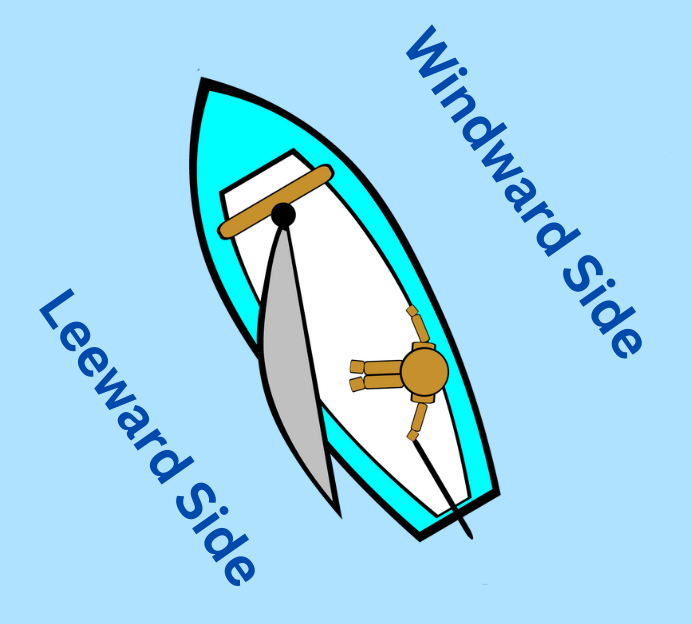
- Windward The side of the boat that is facing the wind.
- Leeward The side of the boat that is sheltered from the wind.
- Sail Trim Adjusting the sail and rigging to maximize the power and efficiency of the sailboat.
Navigation Terminology
Navigating a sailboat requires an understanding of a variety of nautical terms. Here are some of the most important terms you should know:
- Starboard Side The right side of a boat
- Port Side The left side of a boat
- Compass A device used for determining the boat’s heading or direction.
- Bearing The direction from the boat to a specific point on land or water.
- Chart A map or nautical publication that displays water depths, navigational aids, and other important information for safe navigation.
- Latitude The angular distance between the equator and a point on the earth’s surface, measured in degrees, minutes, and seconds.
- Longitude The angular distance between the prime meridian and a point on the earth’s surface, measured in degrees, minutes, and seconds.
- Course The direction in which the boat is traveling.
- Plotting The process of marking a course on a chart or map.
- Waypoint A specific point on a navigational chart or map that serves as a reference point for plotting a course.

- Tacking This maneuver involves turning the bow of the boat through the wind in order to change direction. To tack , the sailor will turn the helm towards the wind until the sails begin to luff, then quickly steer the boat in the opposite direction while adjusting the sails to catch the wind on the new tack.
- Jibing This maneuver is similar to tacking, but involves turning the stern of the boat through the wind. To jibe, the sailor will steer the boat downwind until the sails begin to luff, then quickly turn the stern of the boat in the opposite direction while adjusting the sails to catch the wind on the new tack.
- Heading up This maneuver involves turning the boat closer to the wind in order to sail upwind. To head up, the sailor will turn the helm towards the wind while simultaneously trimming the sails in to maintain speed and prevent the boat from stalling.
- Falling off This maneuver involves turning the boat away from the wind in order to sail downwind. To fall off, the sailor will steer the helm away from the wind while simultaneously easing the sails out to catch more wind and accelerate the boat.
- Docking This maneuver involves bringing the boat alongside a dock or other fixed object in order to moor or disembark. To dock, the sailor will typically approach the dock at a slow speed while using lines and fenders to control the boat’s position and prevent damage.
Knots and Lines
Learning the right knots and lines to use is essential for any sailor. Here are some of the most important knots and lines to know:
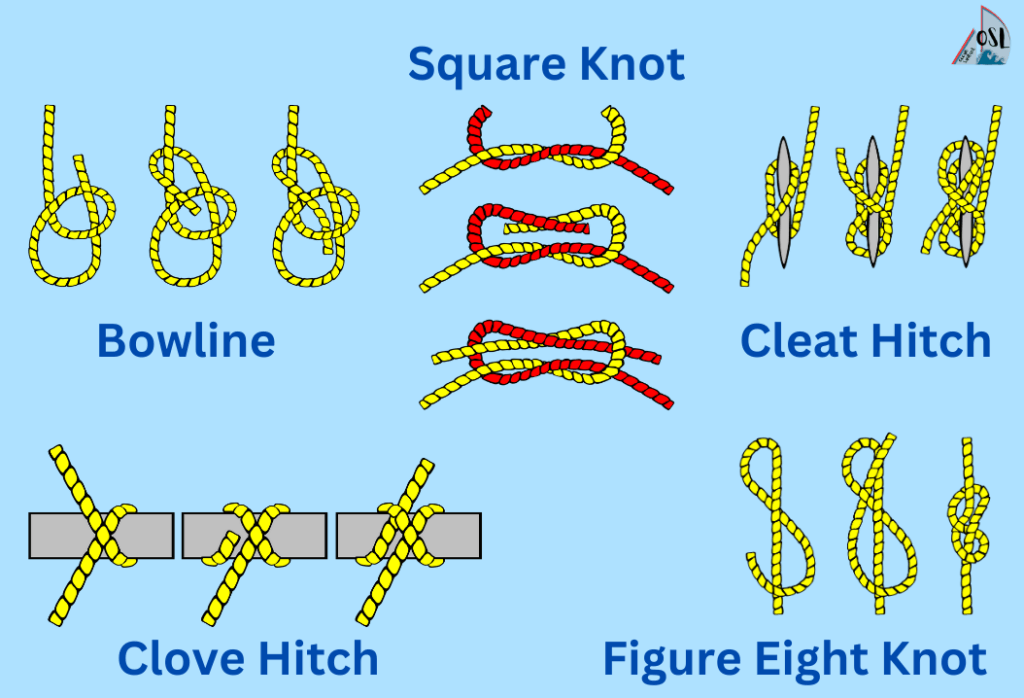
- Bowline This is a versatile knot used for many purposes, including attaching a line to a fixed object, such as a mooring or cleat.
- Square Knot A simple knot used to join two lines of the same diameter.
- Clove Hitch A quick and easy knot for attaching a line to a post or piling.
- Figure-Eight Knot A knot used to stop the end of a line from unraveling.
- Cleat Hitch A knot used to secure a line to a cleat.
- Sheet Bend A knot used to join two lines of different diameters.

- Main Halyard A line used to raise the mainsail.
- Jib Sheet A line used to control the angle of the jib.
- Mainsheet A line used to control the angle of the mainsail.
- Jib Furling Line A line used to furl the jib.
Sailing Safety
- Personal Flotation Devices (PFDs) These are the life jackets or vests that you must wear when on board to ensure your safety. Choose a PFD that fits you properly and is appropriate for your body weight.
- Tethers and Harnesses These are designed to keep you attached to the boat and prevent you from falling overboard. Make sure to clip yourself onto the boat when you’re on deck or going up to the mast.
- Man Overboard ( MOB ) Drill This is a critical safety procedure to practice with your crew. Learn how to quickly identify and recover someone who has fallen overboard.
- Emergency Position Indicating Radio Beacon (EPIRB) An EPIRB sends a distress signal and your location to rescue services in an emergency. Make sure it’s properly registered and in good working condition.
- Navigational Lights Ensure your boat has the required navigational lights and know how to use them properly. These lights help other boats see you in low-light conditions.
Remember that safety is always the top priority when sailing, and it’s essential to take it seriously.
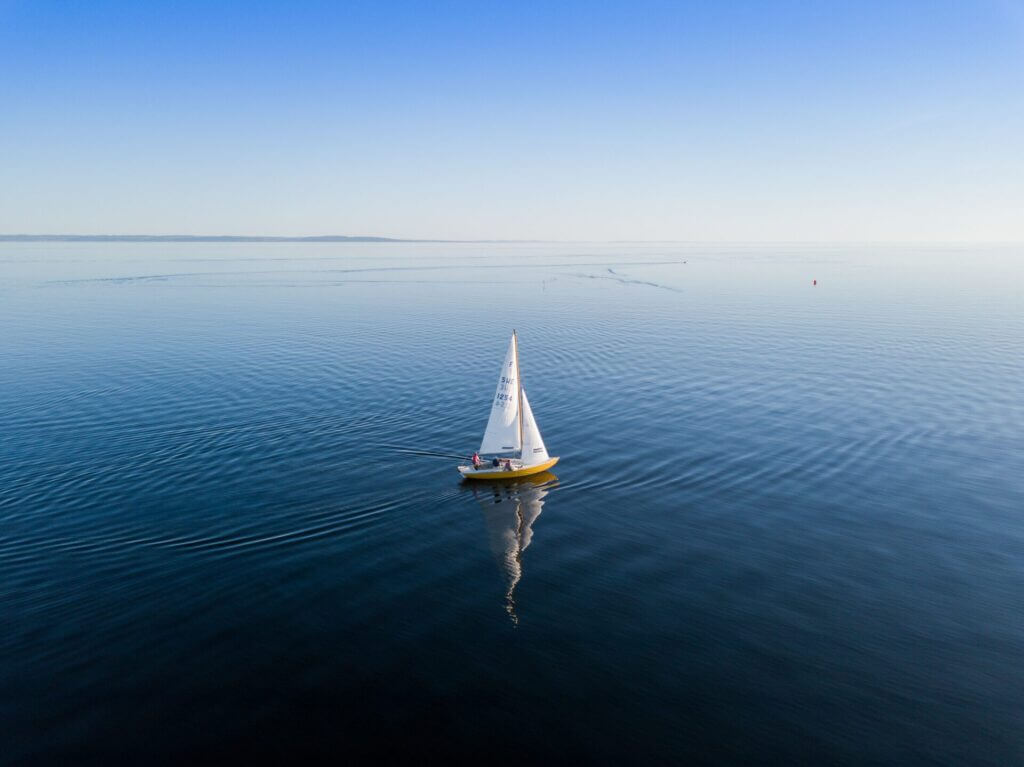
Sailing Terminology Conclusion
As we come to the end of our sailing terminology crash course, it’s important to remember that the world of sailing is vast and varied. Learning even the basics can be a daunting task, but with practice and perseverance, you’ll be able to hoist your sails and set a course for adventure.
Whether you’re a seasoned sailor or just starting out, understanding the terminology is crucial to ensure a safe and enjoyable voyage. From the parts of the boat to the knots and lines, each aspect plays a significant role in the overall sailing experience.
So, as you prepare to embark on your next sailing adventure, keep in mind the importance of safety, navigation, and proper etiquette on the water. And remember, when all else fails, just hoist the Jolly Roger and hope for the best! (Just kidding, don’t actually do that.) Happy sailing!
What is the difference between apparent wind and true wind?
Apparent wind is the wind felt by the sailor on the boat, while true wind is the wind direction and speed relative to the ground.
What are the points of sail?
The points of sail are the directions that a sailboat can travel in relation to the wind. They include upwind, close-hauled, beam reach, broad reach, and downwind.
What does it mean to be “on a reach”?
Being “on a reach” means sailing with the wind coming from the side of the boat, at a perpendicular angle to the boat’s direction.
What is tacking?
Tacking is the maneuver used to turn the boat’s bow through the wind, allowing the boat to change direction while still sailing upwind.
What is jibing?
Jibing is the maneuver used to turn the boat’s stern through the wind, allowing the boat to change direction while sailing downwind.
What is the difference between windward and leeward?
Windward is the side of the boat that is facing into the wind, while leeward is the side of the boat that is sheltered from the wind.
What is a boom vang?
A boom vang is a line used to control the position of the boom, which helps control the shape and position of the sail.
What is a cleat?
A cleat is a device used to secure a line to the boat, allowing the sailor to adjust the tension of the line without having to hold onto it constantly.
What is a winch?
A winch is a mechanical device used to control lines and adjust sails. It typically consists of a drum and handle that can be turned to wind or unwind a line.
Similar Posts
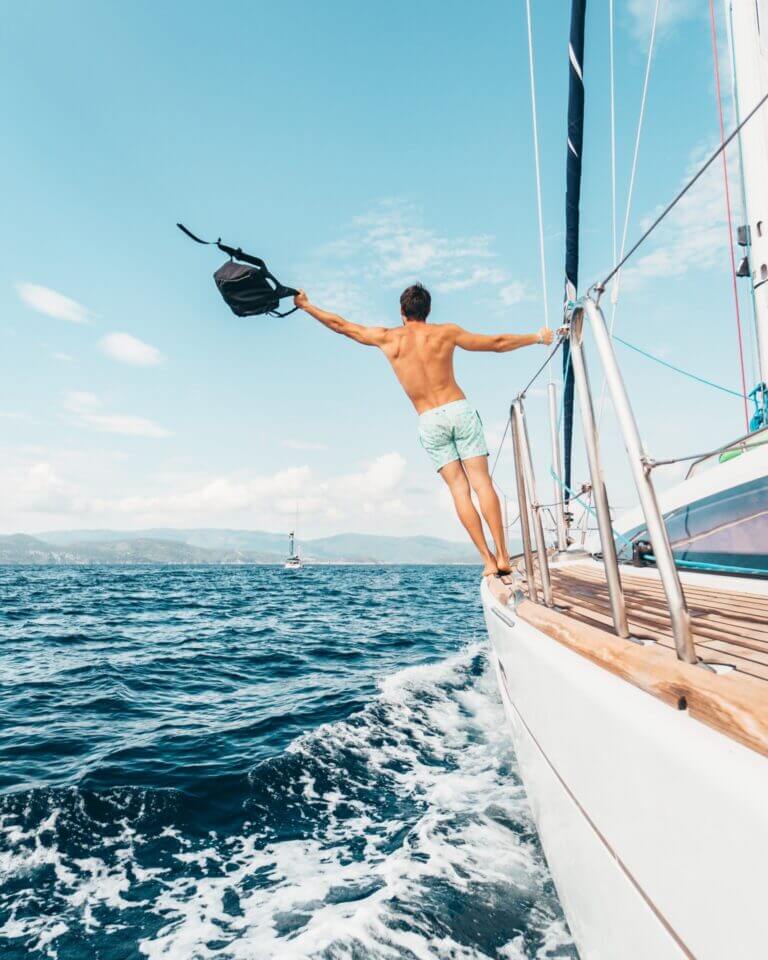
Navigating Life’s Storms: 7 Life Lessons from Sailing
Sailing is more than just a hobby; it is a lifestyle that can help you develop a wide range of skills and abilities. Whether you are a seasoned sailor or just starting, the 7 life lessons from sailing can be applied to various aspects of your life, from your personal relationships to your professional endeavors….

What is a Keel?: The Backbone of a Ship
As ships sail through tumultuous seas, their stability and maneuverability are tested to the fullest extent. The intricate design and engineering that go into a ship’s construction ensure that it can withstand the forces of nature and navigate through any challenging conditions. One of the most critical components of a ship’s design is the keel,…
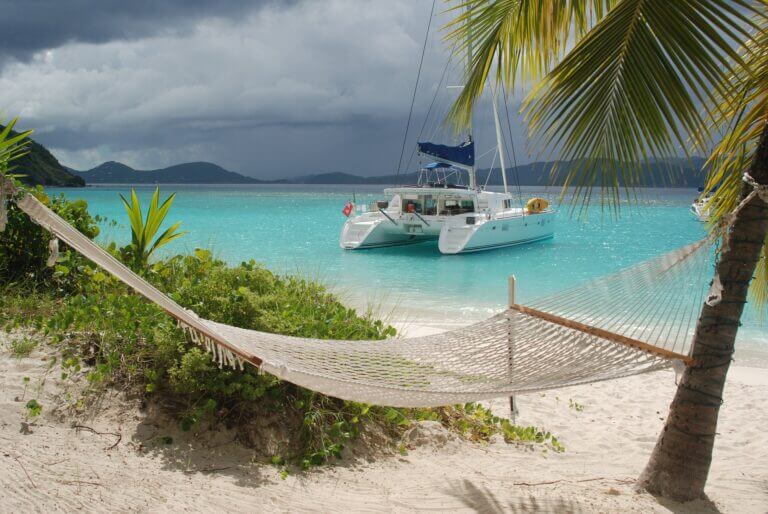
Advantages of Catamaran Sailboat Charter
A catamaran sailboat charter is an exciting way to explore the beauty of the sea. Whether you are an experienced sailor or a first-timer, booking a catamaran sailboat charter has a lot of advantages that you can enjoy. In this article, we will discuss the advantages of booking a catamaran sailboat charter, so that you…

Top Sailing Safety Tips for Beginner Sailors
Sailing on a yacht is a thrilling experience that allows you to explore the beauty of the open water. However, it’s important to prioritize safety when embarking on a sailing trip. Yacht safety is not only essential for the protection of those on board, but also for the boat itself. Neglecting safety protocols can lead…

How to conduct a safety briefing on a sailing yacht
Sailing is a thrilling and adventurous activity that requires a certain level of knowledge and skill to ensure the safety of the crew and vessel. One of the most critical aspects of sailing is conducting a safety briefing before setting sail. A safety briefing is essential to ensure that all crew members are aware of…

How do Boats Float? Exploring the Science Behind Buoyancy
Sailboats float because the average density of the boat is less than the density of water. When boats displace as much water as it weights, this is known as the buoyancy force generated by Archimedes’ principle. If you’ve ever wondered how do boats float and therefor enable us to embark on thrilling water adventures, you’ve…

How To Sail a Small Catamaran (Complete Guide)
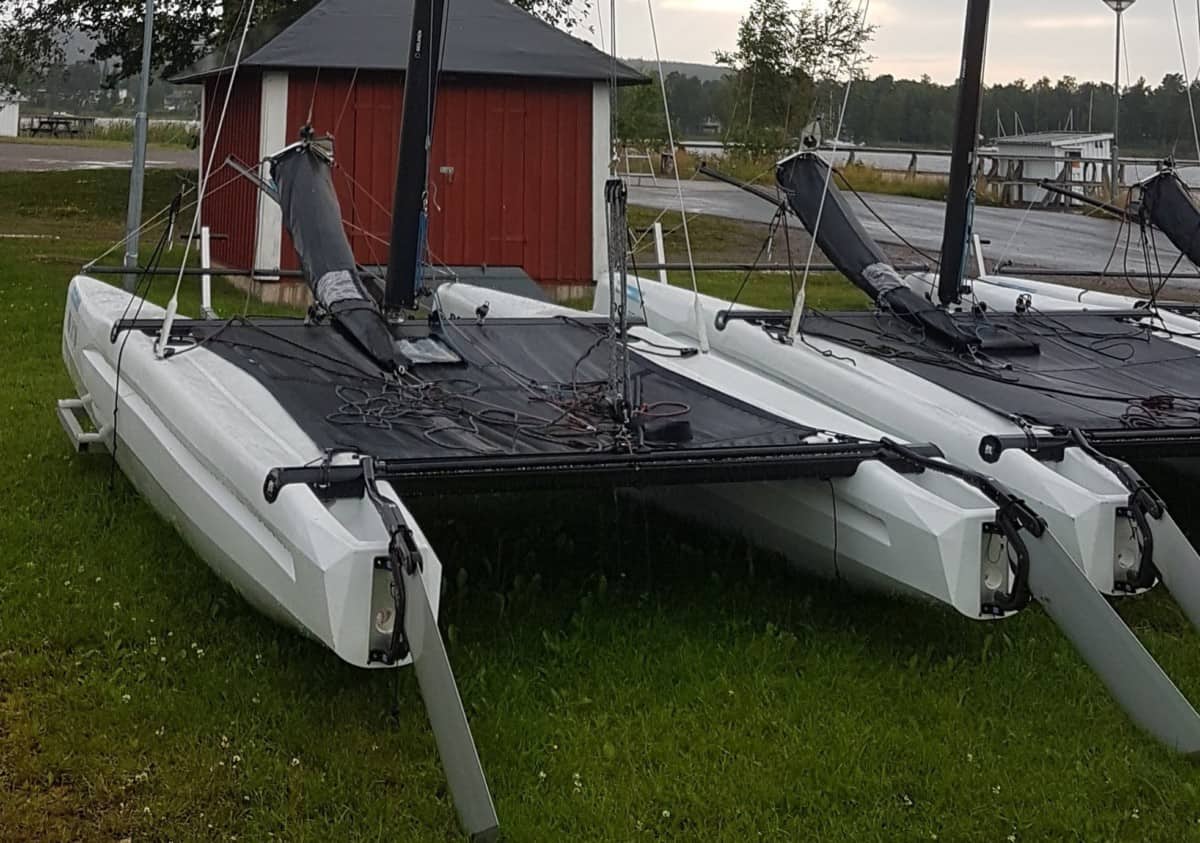
As an Amazon Associate, we earn from qualifying purchases. We may also earn commissions if you purchase products from other retailers after clicking on a link from our site.
Learning how to sail a small catamaran(also known as beach cats) can be the beginning of a new and exciting chapter in your life. It gives you the freedom to comfortably explore the waters, which offers a stimulating and relaxing sensation. If you’re interested in learning how to sail, it is advisable to start with a small catamaran.
To sail a small catamaran (beach cat), first, familiarize yourself with the catamaran’s essential parts and common sailing terminologies. Understand how it works and equip yourself with the necessary sailing gear. Additionally, you’ll need to understand the points of sail, how to steer, turn, and stop the cat.
This guide outlines what you need to know about sailing a small catamaran. Read on to learn more on:
- What is a catamaran?
- Understanding how a catamaran works
- Getting equipped
- Sailing basics
Looking to buy a small catamaran? Read my article Best Catamarans For Beginners
Table of Contents
Understanding a Catamaran
The first step in learning how to sail a small catamaran is to understand its essentials. We begin by looking at what a catamaran is, its essential features, and some standard sailing terms. Understanding the necessary parts of a cat and sailing terminologies helps with communication when sailing.
What Is a Catamaran?
A catamaran is a famous multi-hulled water vessel that features two parallel hulls and sails. Catamarans vary in size and shape, depending on the model and design. However, here we’re looking at the small catamarans (a.k.a. beach catamarans) and how to sail them.
Parts of a Small Catamaran
Below are the essential parts of a catamaran regardless of its model or design:
- Hull : It is the main body of the cat. It has a symmetrical shape, which reduces the drag caused by water friction.
- Tiller : It is a handle or bar that turns the catamaran’s rudder.
- Rudder : An underwater vertical moving board often turned using a tiller (or steering wheel) to initiate movement.
- Keel : It is a centreline attached below the hull running from the front (bow) to your cat’s back (stern). The keel offers stability to the cat and reduces the chances of it capsizing.
- Mast : A long pole set upright from the center of the boat to support the sails.
- Mainsail : It is the most critical sail on a cat that is attached to the mast.
- Foresail : Also known as the jib. It is a sail that fits into the foretriangle of the mast.
- Boom: This is a horizontal pole attached to the mast used for extending the foot of the mainsail.
A full interactive guide on catamaran parts explained ?
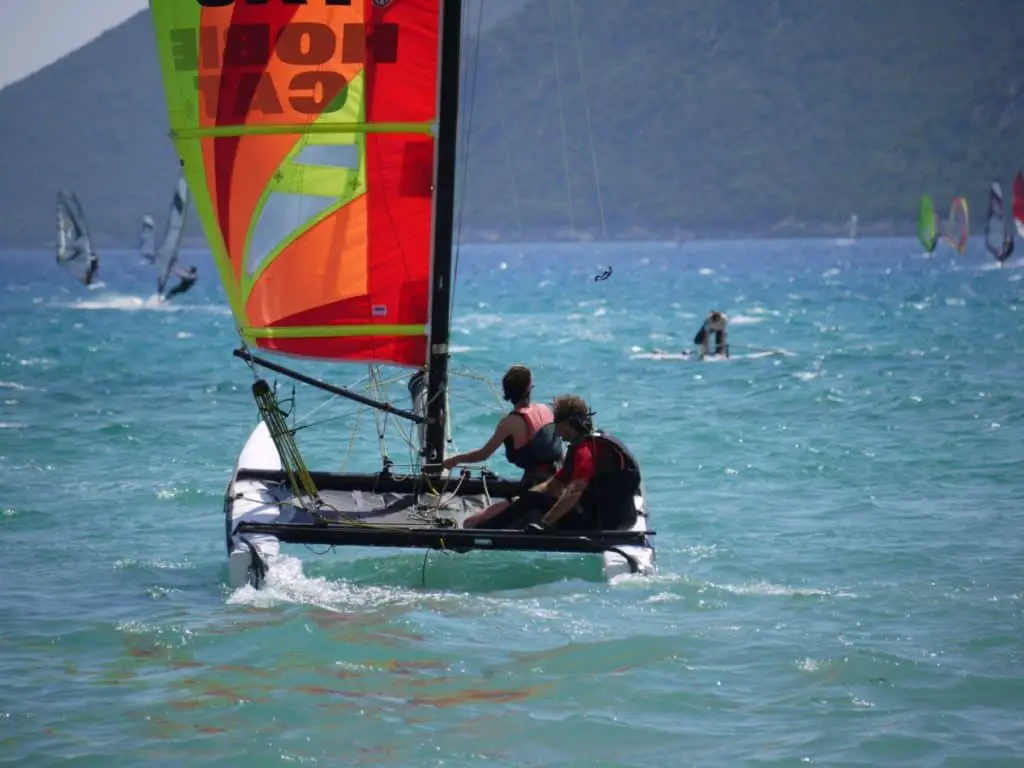
Common Sailing Terminologies
Now let’s look at some terms to add to your sailing vocabulary.
- Point of sail : The direction of your cat relative to the wind.
- Port : When facing forward, your cat’s left side is referred to as the port.
- Starboard : Refers to anything to the right of your cat when you are facing forward.
- Bow/ stern : The front and back of the catamaran, respectively. Additionally, you can refer to the bow as ‘forward’ and the stern as ‘abaft/ aft.’
- Tack: Changing the direction of your cat by turning the bow through the wind.
- Jib (gybe): Turning the stern of your cat through the wind to change direction.
- Heeling: A situation where the wind pushes your cat as it leans over in the water.
- Windward: The side of your catamaran that is closest to the wind. It can also be defined as the direction upwind from the point of reference.
- Leeward: The side of your cat far away from the wind. It is the direction of a cat upwind from the point of reference.
- Aboard: On or within the catamaran
- Halyards : Ropes used in raising or lowering the sails on the mast.
- Sheets: Are ropes that control the angle of the sails relative to the wind’s direction.
- Tacking vs Jibing Explained
Learning How a Small Catamaran Works
After gaining knowledge of parts of a cat and the common sailing terms, the next step is to understand how the catamaran works. Here, we’ll look at how the wind gets your catamaran moving.
As the sail of your small catamaran fills with wind, it forms an airfoil that propels your cat. Your sails play the most significant role in keeping your cat moving. As a result, you have to pay much attention to their positioning relative to the wind.
You start by raising the sails using the halyards. The mainsail (the sail closest to the stern) should be raised first, followed by the jib (the sail closer to the bow). With your sails raised, you should then trim them relative to the direction of the wind. By trimming your sails, you position them at an angle where they capture more wind.
As a newbie, you should first learn raising and trimming the mainsail before the jib because you will use it more when sailing your small catamaran.
However, you should note that you don’t rely solely on the sails and the wind to get your catamaran moving. You should also use the tiller to move and control the rudder. This way, you will be in a position to angle your cat in your preferred direction.
As you continue sailing, the wind’s direction keeps on changing. As a result, you should use sheets to trim your sails while tacking and jibing with respect to the wind’s direction changes.
Getting Equipped
After learning how a catamaran works, you are a step closer to practicing in the waters. However, before this, you need to prepare yourself by getting the right sailing gear. Your instructor should advise you on the right clothes and safety equipment.
Here are some items you should not leave behind:
- Shoes : You’ll need a pair of fitting shoes that you can comfortably use on the deck. They should be grippy and non-marking.
- Gloves : It is also advisable to have quality sailing gloves. They should be comfortable to wear and also allow you to control the tiller and perform other duties on board. Consider getting heavy-duty and breathable gloves.
- Sunglasses: You’ll also need good polarized sunglasses that will protect your eyes from the glare. When learning how to sail, it is essential to see how the water is moving. This helps in learning how to read the wind.
- Windbreaker : Do not forget a piece of clothing that will keep you comfortable even under windy conditions. It should be warm and waterproof.
- Logbook: You’ll also need a book where you can keep all your sailing records. You can indicate how many sailing classes you’ve taken, the number of hours you’ve sailed, and the waters, shallow or deep.
- Compass / GPS : Don’t leave behind a compass and a map. These come in handy when you want to find a bearing or are lost in the sea.
- First aid kit : When packing your essentials, don’t leave behind a first aid kit. As a newbie, you might have sea sickness during your first sailing sessions. Carry a kit with the right prescriptions.
- Finally, do not leave behind a phone and a power bank, plus enough food and water.
After preparing yourself for sailing, you should also prepare your small catamaran.
Preparing the Catamaran
Preparing your beach catamaran for sailing involves analyzing its parts and studying the prevailing weather conditions.
Perform a Physical Check
First up, conduct a detailed physical check to see if all the parts are in their stable working conditions:
- Check if the tiller is moving freely to control the rudder.
- Look at the condition of your sails. Ensure they are straight and with no holes or frayed edges.
- The rigging should be in their perfect working conditions. Check the standing rigging (everything that keeps the mast and sails upright) and the running rigging (the lines used to raise and control the sails).
- Check all lines . They should be free. This means they should not be wrapped against each other or around any objects aboard. Here you may also need to tie line knots if you intend to use them during your sail.
Study the Wind
Before getting into the waters, you’ve to study the direction of the wind. Knowing how the wind is blowing helps in the proper positioning of the sails and the cat. You can check the wind’s direction by looking at wind instruments in your small catamaran.
Most catamarans have wind indicators strategically placed on their mast. You can use this. Additionally, you can tie small flags on the sides of your cat to help with the direction. Knowing where the wind is coming from allows you to position your cat at the right point of sail.
Points of Sail
The point of sail defines the direction of the wind relative to your cat. With the right point of sail, you will be in a position to sail your catamaran smoothly. The point of sail differs depending on the angle of your cat from the wind. The different points of sail include:
- Running : In a running point of sail, the wind blows behind your back. It is not advisable to use this point of sail as accidents are prone to occur if the wind’s force pushes over your small cat.
- Broad reach : The wind is partially at your back and your side (aft quarter).
- Close reach : Here, you are sailing at approximately 60-75 off the wind.
- Beam reach : You position your cat at an angle of 90 of the wind. It is considered the most precise sailing position.
- Close haul : At this point of sail, you are approximately 45-60 off the wind.
Hoisting the Sails
Now that you have already identified the wind’s direction and positioned your cat, the next important thing is hoisting the sails. While hoisting your sails, it is advisable to start with the mainsail.
- To start with, secure the bottom front of the mainsail to the respective shackles on the boom.
- Notice a small line known as an outhaul that attaches the clew (the lower back part of the mainsail) to the boom. Carefully pull it out until the mainsail forms a smooth airfoil allowing wind to blow over it.
- Now pull down the halyard until it stops . You will notice some flapping on the mainsail, which is normal.
- Ensure that the mainsail’s edges are smooth , then attach the halyard on the winch or cleat.
- Now shift to the jib and hoist it . Start by securing its bottom front part to the boom and then follow a process similar to that of hoisting the mainsail.

Start Sailing
As a newbie, you need to ensure you are on a safe sailing point during your practice sessions. Avoid going far into the waters with your small catamaran during your first training sessions.
Also, ensure that you have enough space around you for your catamaran to turn in response to the wind movements. This is to avoid being thrown back into the dock or in the sand by the moving wind.
As you start sailing, you’ll notice the effects of the wind on your cat. As a result, you may need to make a turn through tacking or jibing .
When sailing, always make sure you place yourself at the right point in your catamaran. Sit at the side where the wind is blowing to; the wind should blow from your back. This means you should be on the opposite side of the sail and not beneath it. Sitting on the wrong side might cause your cat to flip over.
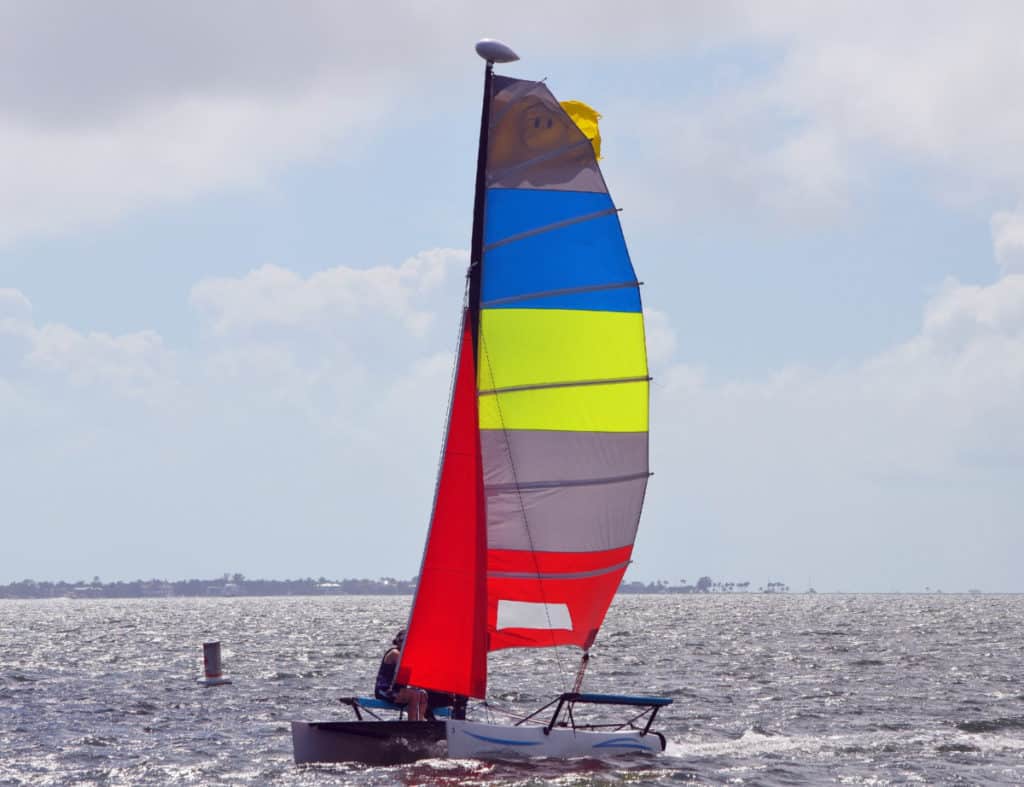
Now that you already know how to get your cat moving, let’s look at steering. Steering the cat is often unclear to most newbies.
Small catamarans are steered using a tiller that controls the rudder. What confuses most sailors is that you move the tiller in the opposite direction from which you want your cat to move. So, if you’re going to turn to the right, you will push your tiller to the left and vice versa.
Since steering a small cat differs from steering other moving vessels, the experience may feel awkward at first. However, you shouldn’t feel pressured to master it all at once. Take your time and practice until you master the process.
Trimming the Sails
As you continue learning how to sail, you also need to understand how to control your cat by trimming sails. Trimming sails means adjusting the positioning of your sails to control the movement of your cat.
As a learner, to effectively and safely trim your sails, you should first position your tiller to reduce the movement of your cat to either side. Start by trimming the mainsail.
Tighten the mainsail to stop flapping and for it to take a new shape relative to the wind’s direction. As your mainsail takes a new form, your cat will start building some speed. Quickly grab the jib and adjust it too.
To tighten the jib, stretch it as much as you can to reduce flapping/ luffing. Once the flapping has reduced, loosen it and let it out until the edge of its luff (the forward end of the jib) is shaking. Now tighten it back in its new position, and you are ready to go.
If you are sailing close to the wind, you have to keep your sails tighter than usual. On the other hand, if you are sailing off the wind, your sail should be left loose. Generally, tight sails cause your cat to move faster, while the opposite is true for loose sails.
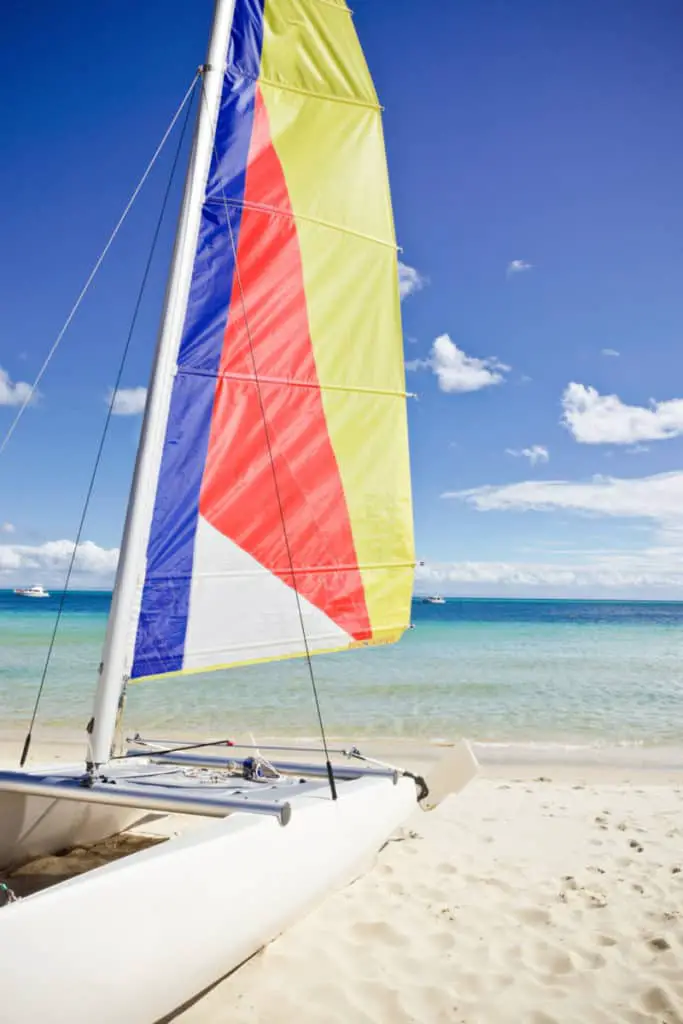
Turning the Catamaran
You’ll also need to learn how to turn a catamaran. As a learner, after releasing the mooring line, you should be prepared to turn the catamaran by moving the boom to either side. As you push out the boom, the wind will hit your sail from the back, making your cat turn.
Therefore, you should be cautious enough to avoid turning in the wrong direction. Like in moving the tiller, you also push out the boom into the opposite direction you want to turn. Therefore, when turning to the right, you push out the boom to the left and vice versa.
Slowing Down and Stopping
Although sailing a small catamaran at high speeds is fun, you may at some point want to slow down. When you detect an obstacle in the water, you may need to slow down. Most sailors use the term ‘spill wind’ to refer to the action of slowing down and stopping a cat.
Since tighter sails often accelerate the speed of your cat, you can slow it down by loosening them a little. The more you let your sails out, the more your cat slows down and eventually stops.
It is advisable to release the sails as you face the wind’s direction to help your cat stop. If you are sailing against the wind, first turn your cat in the direction of the wind, then release the sails.
Practice slowing down and stopping your cat under different weather conditions to be prepared in case of an emergency. Since your cat has no brakes, you should practice this until you perfect your skills.
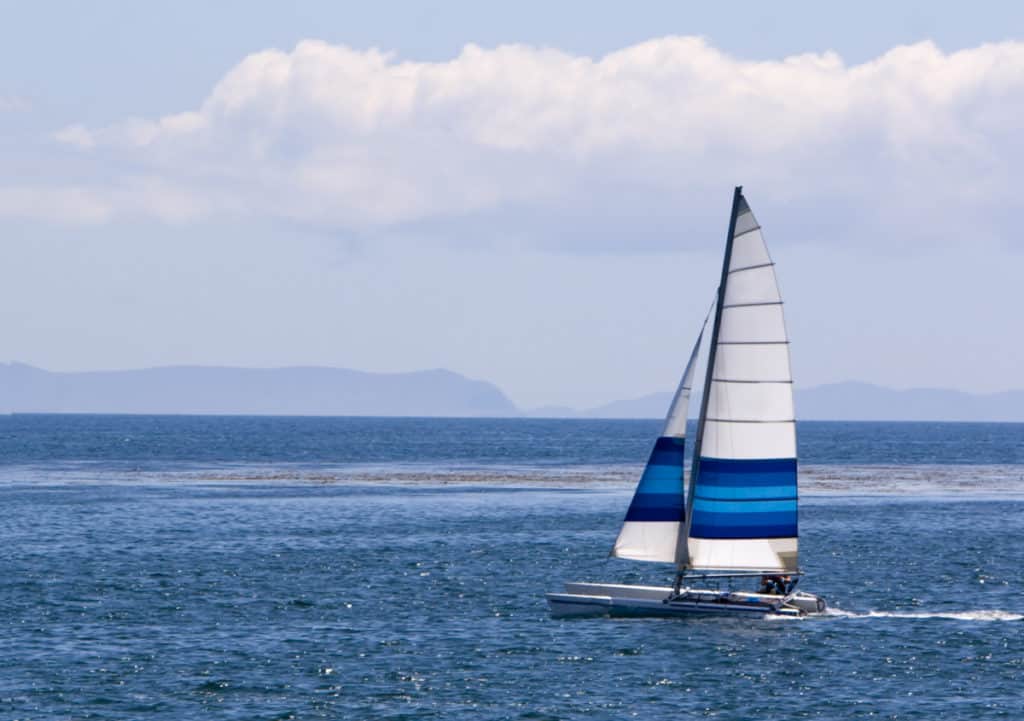
Capsize Recovery
Although capsizing is not common in catamarans, it can happen and it is crucial always to be prepared. If your small catamaran capsizes, it is advisable to start the recovery process immediately before the situation worsens. Let’s look at how to right a capsized catamaran.
Why and how often do catamarans capsize, a scientific approach!
You can right most small catamarans by pushing the bow or stern below the water to rotate them upright.
To right your capsized catamaran:
- Lower down your bow and stern until your cat lies in a vertical position.
- One crew member should then swim around to one end of the lower hull and then push it down. By pushing the lower end down, the uppermost hull’s end comes down towards the water.
- As the uppermost hull drops towards the water, it is pulled down by another crew member. In the meantime, the other crew pushes the cat up midway along the lower hull.
- This movement puts your cat in a vertical position in the water. The crew members then swim to the mast and push it back to its standard sailing position. They then climb aboard fast before the cat sails off.
Avoid sailing alone. Always have some crew members to help you out in case of a capsize.
Learning how to sail a small catamaran is a process that requires practice and patience to perfect your skills. Therefore, don’t feel pressured; take it slow, a step at a time. Start by understanding the essentials of a catamaran, preparing yourself and your cat for the adventure, and learning some sailing basics.
The fundamental sailing basics outlined in this guide are the points of sail, steering, trimming sails, slowing down, and righting a cat after a capsize. Follow our guide today and become a pro in sailing a small catamaran.
- Catamaran Parts Explained
- Why do catamarans capsize?
Owner of CatamaranFreedom.com. A minimalist that has lived in a caravan in Sweden, 35ft Monohull in the Bahamas, and right now in his self-built Van. He just started the next adventure, to circumnavigate the world on a Catamaran!
Leave a Reply Cancel reply
Your email address will not be published. Required fields are marked *
Save my name and email in this browser for the next time I comment.
Recent Posts
Must-Have Boat Gear for Catamaran Sailors!
Sailing is probably the most gear-intensive activity I've ever done; there are so many decisions to be made about what gear to buy now, for tomorrow, and what to definitely never buy. The gear on...
6 Best Trailerable Trimarans For Bluewater and Coastal Sailing
Having a boat costs a lot of money, even when you are not using it, marina fees, etc. And once it is in the water most sailors never go very far from their "home marina" and sailing will be somewhat...

How To Sail A Catamaran? (A Detailed Step-By-Step Guide)

Are you an adventurous soul looking for an exciting way to explore the open waters? If so, then sailing a catamaran may just be the perfect activity for you! Catamarans are becoming increasingly popular for sailing due to their stability and speed, and when sailed correctly, can be a powerfully enjoyable experience.
This guide will walk you through the basics of sailing a catamaran, from understanding the basics of sailing to handling the boat in different conditions and beyond.
Here, we will cover the differences between a monohull and a catamaran, balancing the boat, basic sailing techniques, safety precautions, and tips for improving your catamaran sailing skills.
So grab your gear and lets get sailing!
Table of Contents
Short Answer
Sailing a catamaran is relatively straightforward.
To get started, adjust the sails and rudder to the desired angles.
Next, begin to move forward using the power of the wind and the force of the sails.
While underway, make sure to constantly adjust the sails and rudder to maintain the desired course.
Finally, when ready to stop, lower the sails and use the rudder to bring the catamaran to a stop.
Understanding the Basics of Sailing
Learning how to sail a catamaran can be an exciting and rewarding experience, but before you can take to the open waters you need to understand the basics of sailing.
It is important to familiarize yourself with the fundamentals of sailing, such as understanding wind direction and how to use sails.
Knowing the basics is essential for anyone wanting to sail a catamaran, as it will allow you to make informed decisions when sailing and will help keep you safe on the water.
Understanding wind direction is a key part of sailing, as it will help you determine the best way to sail and how to use the sails to propel the boat in the desired direction.
This can be done by looking at the flags or flags on other boats in the area, as well as by analyzing the behavior of the waves and the wind.
Additionally, you should also learn the different points of sail, which are the directions a boat can sail relative to the wind.
In addition to understanding wind direction, it is also important to understand how to use the sails of a catamaran.
The sails of a catamaran are made up of two mainsails, which are the two large sails on either side of the boat, as well as a jib, which is a smaller sail located at the front.
Knowing how to properly set the sails will allow you to make the most of the wind and propel the boat in the desired direction.
Additionally, you should also learn how to trim the sails, as this will help you to optimize the boats performance in different wind conditions.
Understanding the basics of sailing and how to use the sails of a catamaran is essential for anyone wanting to learn how to sail a catamaran.
With the right knowledge and practice, sailing a catamaran can be an incredibly rewarding experience.
The Differences Between a Monohull and a Catamaran

When it comes to sailing a catamaran, it is important to understand the differences between a monohull and a catamaran.
A monohull is a single-hulled boat with a keel that runs along the bottom of the boat.
This helps keep the boat stable and upright in the water.
A catamaran, on the other hand, has two hulls which are usually connected by a bridgedeck.
This helps to create a more stable platform in the water and allows for more open space on the boat.
There are some important differences between sailing a monohull and a catamaran.
For example, a monohull requires more power to move through the water and is more limited in terms of maneuverability.
On the other hand, a catamaran is more maneuverable and can be sailed in a variety of conditions.
Additionally, a catamaran is inherently more stable in the water and can handle larger waves.
Another important difference between a monohull and a catamaran is the way they are balanced.
A monohull relies on its keel for stability and must be balanced evenly along the length of the boat.
On the other hand, a catamaran relies on the two hulls to remain balanced and can be sailed with one hull slightly higher than the other.
This allows for greater maneuverability and can help to reduce drag in the water.
Finally, a catamaran is more efficient than a monohull and can be sailed at higher speeds for longer distances.
This makes it ideal for longer trips and open-water sailing.
Balancing the Boat
When it comes to sailing a catamaran, one of the most important steps is learning how to balance the boat.
This is because catamarans have two hulls, which means that they have twice the length and twice the width of a single-hull boat.
This can make it more difficult to keep the boat upright and stable in the water.
When sailing a catamaran, it is important to keep the hulls balanced so that the boat remains stable.
The easiest way to do this is to make sure that the weight is evenly distributed between the two hulls.
This can be done by ensuring that the sail is properly adjusted and that the passengers are sitting evenly between the two hulls.
Additionally, it is important to keep an eye on the wind direction and make sure that the sails are adjusted accordingly.
Furthermore, it is important to be aware of the boats center of gravity.
This is the point at which the boats weight is evenly distributed between the two hulls.
If the boat is not properly balanced, then it can become difficult to control, especially in rough conditions.
It is important to be aware of the boats center of gravity at all times and adjust the weight distribution accordingly.
Finally, it is important to remember that cats are less forgiving than other types of boats.
This means that any errors in balance or sail trim can be exaggerated and lead to a dangerous situation.
Therefore, it is important to practice balancing the boat in calm waters before venturing out in rougher conditions.
By following these steps, sailing a catamaran should be a rewarding and enjoyable experience.
With the right knowledge and practice, anyone can learn how to sail a catamaran safely and confidently.
Handling the Boat in Different Conditions

When sailing a catamaran, it is important to understand how to handle the boat in different conditions, such as in waves and strong winds.
In wave conditions, the key is to keep the boat balanced.
This means keeping the weight evenly distributed between the two hulls and using the sail to keep the boat stable.
To do this, you can adjust the angle of the sail and the trim of the boat to match the waves.
It is also important to keep an eye on the wind direction, as this can affect the boats stability.
In strong winds, it is important to know how to properly balance the boat.
This means keeping the weight evenly distributed between the two hulls and using the sails to keep the boat stable.
You can adjust the trim of the sail and the angle of the sail to match the wind direction.
It is also important to keep an eye on the wind speed, as this can affect how much power you need to use in the sails.
Finally, it is important to know how to handle the boat in rough weather.
This means using the sails to provide stability and keeping the boat balanced in rough conditions.
You should also be prepared to use the outriggers, which are the stabilizers that run along the sides of the boat, to help keep the boat upright in strong winds.
By familiarizing yourself with the basics of sailing and understanding how to handle the boat in different conditions, such as waves and strong winds, you can become a confident and skilled catamaran sailor.
With practice and experience, you can explore the open water with confidence and enjoy the unique experience of sailing a catamaran.
Basic Catamaran Sailing Techniques
Sailing a catamaran can be a great way to explore the open water and experience the thrill of the sea.
Before you set out, however, its important to understand the basics of sailing, such as wind direction and how to use sails.
Once youve got the basics down, you can then start to learn the specifics of how to sail a catamaran.
The most important thing to understand is the difference between a monohull and a catamaran.
Catamarans have two hulls, which make them more stable than monohulls.
This means you will need to learn how to properly balance the boat, as the two hulls can move independently of each other.
You should also be aware of the wind and current when youre sailing, as these can affect the boats stability.
When youre ready to start sailing, youll need to make sure that the sails are set properly and the boat is balanced correctly.
To do this, youll need to be aware of the wind direction and adjust the sails accordingly.
You should also make sure that the sails are trimmed properly, as this will help you to get the most out of the wind.
In order to properly sail a catamaran, youll also need to understand how to handle the boat in different conditions.
This includes handling the boat in waves, strong winds, and other challenging scenarios.
To do this, youll need to be aware of the wind direction, the current, and the waves.
You should also be aware of how the boat responds to different conditions, and be prepared to make adjustments as necessary.
Once youve got the basics of sailing a catamaran down, you can start to explore the open water.
So, dont be afraid to get out on the open water and learn the ins and outs of sailing a catamaran.
With a bit of practice, youll soon be able to enjoy the thrill of the open water.
Safety Precautions for Catamaran Sailing

Before sailing a catamaran, it is important to take safety precautions to ensure your trip is safe and enjoyable.
The first step in doing so is to make sure you have the right safety gear, such as a life jacket, flares, and a first-aid kit.
It is also a good idea to check the weather forecast before departing so you can plan your route accordingly, and to make sure you have the right clothing for the conditions.
Additionally, you should always carry a marine radio on board in case of an emergency.
Lastly, make sure you inform someone of your intended route and estimated time of return, so they can come to your aid in the event of an emergency.
By taking these safety precautions, you can enjoy your catamaran sailing experience to the fullest!
Tips for Improving Your Catamaran Sailing Skills
Improving your catamaran sailing skills is all about getting comfortable with the boat and understanding the different conditions youll be sailing in. Its important to start slowly and build your skill level gradually, as this will help you become a more confident and competent sailor. Here are some tips to get you started:
1. Learn the basics of sailing. Knowing the basics of sailing is essential before you start to learn how to sail a catamaran. Understand the basics of wind direction, how to use sails, and how the wind affects the boat. This will help you better understand the catamaran and how to maneuver it.
2. Familiarize yourself with the catamaran. Spend time familiarizing yourself with the catamaran and its components. Learn the differences between a monohull and a catamaran, such as the two hulls and how to properly balance the boat. You should also be aware of the boats capabilities and limitations.
3. Practice sailing in different conditions. Its important to practice sailing in different conditions, such as in waves and strong winds. This will help you become more comfortable with the boat and give you the experience to handle a variety of conditions.
4. Learn how to use the sails. Understanding how to use the sails will help you become a more efficient sailor and get the most out of your catamaran. Learn how to adjust the sails for different wind directions and how to use them to your advantage.
5. Understand the safety precautions. Before you start sailing, make sure you understand the safety precautions. This includes understanding the weather conditions and the safety equipment you need to have on board.
By following these tips, youll be well on your way to becoming a more confident and competent catamaran sailor.
Learning how to sail a catamaran is a great way to explore the world of sailing and open up a world of adventure on the open water.
Final Thoughts
Whether you’re a seasoned sailor or a novice, knowing how to sail a catamaran can be a great way to get out and explore the open waters.
With the right knowledge and practice, you can become a confident and competent catamaran sailor.
From understanding the basics of sailing, to learning the differences between a monohull and a catamaran, to mastering the techniques of catamaran sailing, this detailed step-by-step guide has all the information you need to become a successful catamaran sailor.
So, what are you waiting for? Get out there and start your catamaran sailing journey today!
James Frami
At the age of 15, he and four other friends from his neighborhood constructed their first boat. He has been sailing for almost 30 years and has a wealth of knowledge that he wants to share with others.
Recent Posts
Does Your Boat License Expire? Here's What You Need to Know
Are you a boat owner looking to stay up-to-date on your license requirements? If so, youve come to the right place! In this article, well cover everything you need to know about boat license...
How to Put Skins on Your Boat in Sea of Thieves? (Complete Guide)
There is a unique sense of pride and accomplishment when you show off a boat you customized to your exact specifications. With Sea of Thieves, you can customize your boat to make it look like your...
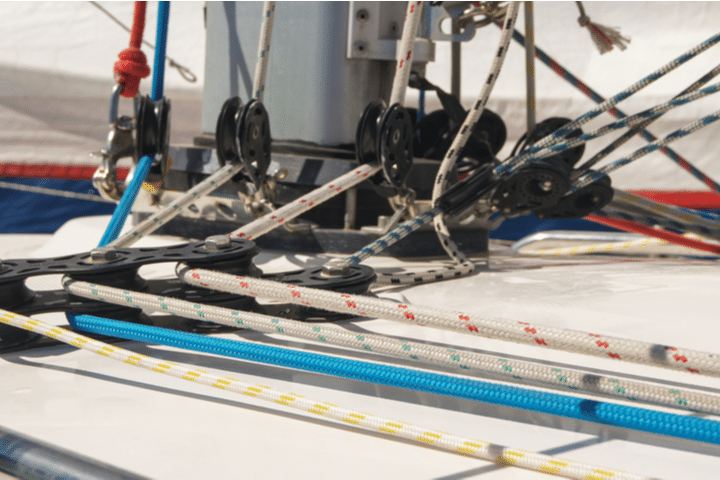
A Guide to the Different Parts of a Sailboat

Table of Contents
When you use Boatsetter, you have the opportunity to choose from a myriad of different sailboat rentals from all over the United States and beyond . A sailboat is a perfect way to relax on the water, either on a solo adventure or on an excursion with friends and family.
When you rent a sailboat with Boatsetter, you will have the option to book a captained sailboat to enjoy your day out on the water or book bareboat to hone your sailing skills. Either way, you may be interested in the intricacies of a sailboat and its different parts. If this sounds like you, you have come to the right place. In this article, we go in-depth about the different parts of a sailboat so that you can be more knowledgeable about whatever boat you may choose and come away from reading this feeling more confident about the whole sailing experience.
A basic sailboat is composed of at least 12 parts: the hull , the keel , the rudder , the mast, the mainsail, the boom, the kicking strap (boom vang), the topping lift, the jib, the spinnaker, the genoa, the backstay, and the forestay. Read all the way through for the definition of each sailboat part and to know how they work.
Explore sailboats for rent near you or wherever you want to go
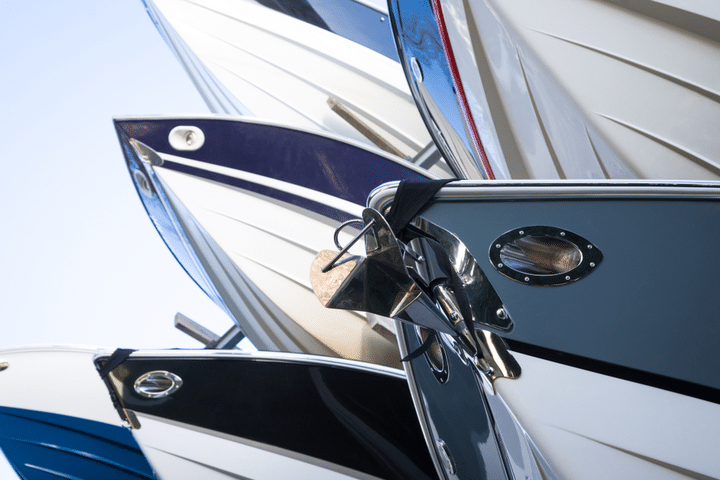
In short, the hull is the watertight body of the ship or boat. There are different types of hulls that a sailboat may have, and these different hulls will often affect the speed and stability of the boat.
Displacement Hulls
Most sailboats have displacement hulls , like round bottom hulls, which move through the water by pushing water aside and are designed to cut through the water with very little propulsion. The reason these are called displacement hulls is that if you lower the boat into the water, some of the water moves out of the way to adjust for the boat, and if you could weigh the displayed water, you would find that it equals the weight of the boat, and that weight is the boat’s displacement. One thing to know about displacement hulls is that boats with these hulls are usually limited to slower speeds.
Planing Hull
Another type of hull is a planing hull. These hulls are designed to rise and glide on top of the water when enough power is supplied. When there is not enough power behind the boat, these boats often act as displacement hulls, such as when a boat is at rest. However, they climb to the surface of the water as they begin to move faster. Unlike the round bottom displacement hulls, these planing hulls will often have flat or v-shaped bottoms. These are very common with motor-driven water vessels, such as pontoon boats, but they can also be found on smaller sailboats which allow them to glide quickly over the water.
Finally, sailboats can differ depending on the number of hulls that they have. There are three options: monohulls (one hull), catamarans (two hulls), and trimarans (three hulls).
Monohulls , which have only a single hull, will usually be the typical round bottom displacement hull or occasionally the flat bottomed or v-shaped planning hull. Catamarans have two hulls with a deck or a trampoline in between, with the extra hulls providing increased stability. Finally, trimarans have three hulls — a main hull in the middle and two side hulls used for stability. These trimarans have gained popularity because of their excellent stability and ability to go at high speeds.
When evaluating a sailboat , it is important to pay attention to the type of hull that the boat has because the type of hull a sailboat has can drastically change the sailing experience, especially when it comes to stability and speed.
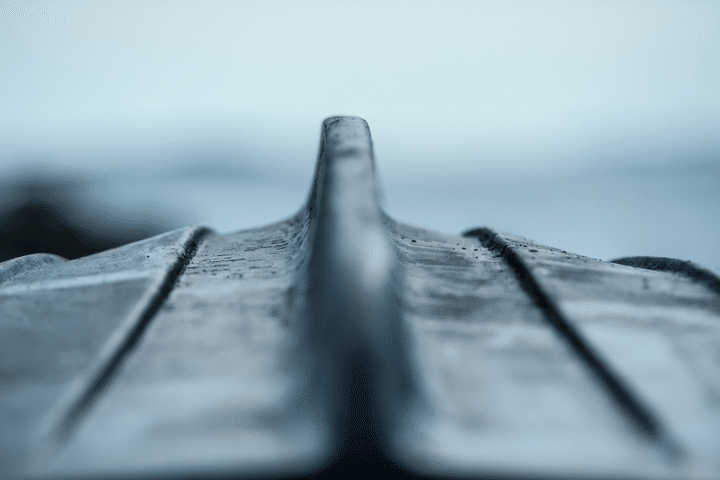
All sailboats have a keel, a flat blade sticking down into the water from the sailboat’s hull bottom. It has several functions: it provides counterbalance, life, controls sideways movement, holds the boat’s ballast , and helps prevent the boat from capsizing. When a boat leans from one side to the other, the keel and its ballast counteract the movement and prevent the boat from completely tipping over.
As with hulls, there are a number of different types of keels, though the two most common types of keels on recreational sailboats are the full keel or the fin keel. A full keel is larger than a fin keel and is much more stable. The full keel is generally half or more of the length of the sailboat. However, it is much slower than the fin keel. A fin keel, which is smaller than the full keel, offers less water resistance and therefore affords higher speeds.
A more recent feature on sailboats is the “winged keel,” which is short and shallow but carries a lot of weight in two “wings” that run sideways from the keel’s main part. Another more recent invention in sailing is the concept of the canting keels, which are designed to move the weight at the bottom of the sailboat to the upwind side. This invention allows the boat to carry more sails.
The Rudder
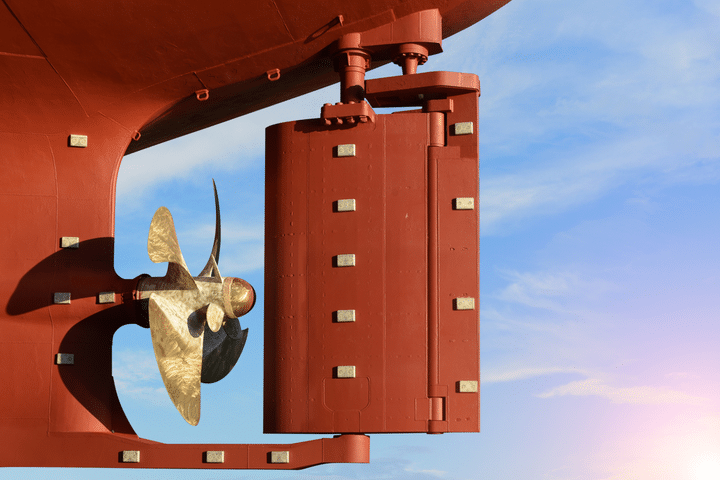
A rudder is the primary control surface used to steer a sailboat. A rudder is a vertical blade that is either attached to the flat surface of the boat’s stern (the back of the boat) or under the boat. The rudder works by deflecting water flow. When the person steering the boat turns the rudder, the water strikes it with increased force on one side and decreased force on the other, turning the boat in the direction of lower pressure.
On most smaller sailboats, the helmsman — the person steering the boat — uses a “ tiller ” to turn the rudder. The “tiller” is a stick made of wood or some type of metal attached to the top of the rudder. However, larger boats will generally use a wheel to steer the rudder since it provides greater leverage for turning the rudder, necessary for larger boats’ weight and water resistance.
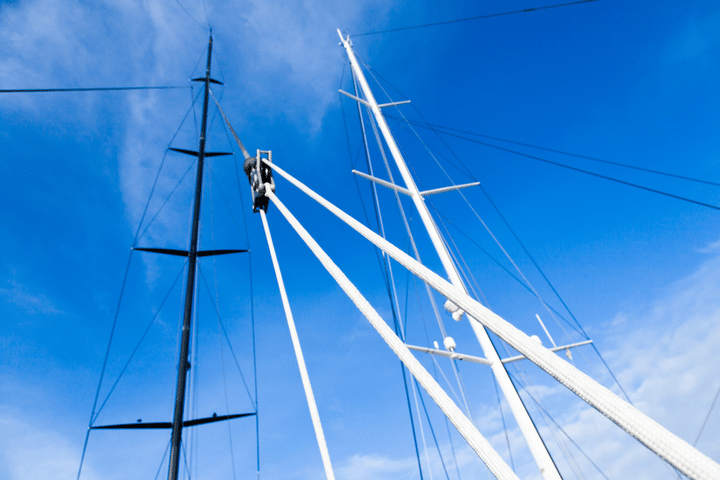
The mast of a sailboat is a tall vertical pole that supports the sails. Larger ships often have multiple masts. The different types of masts are as follows:
(1) The Foremast — This is the first mast near the bow (front) of the boat, and it is the mast that is before the mainmast.
(2) The Mainmast — This is the tallest mast, usually located near the ship’s center.
(3) The Mizzen mast — This is the third mast closest to the stern (back), immediately in the back of the mainmast. It is always shorter than the mainmast and is typically shorter than the foremast.
The Main Sail
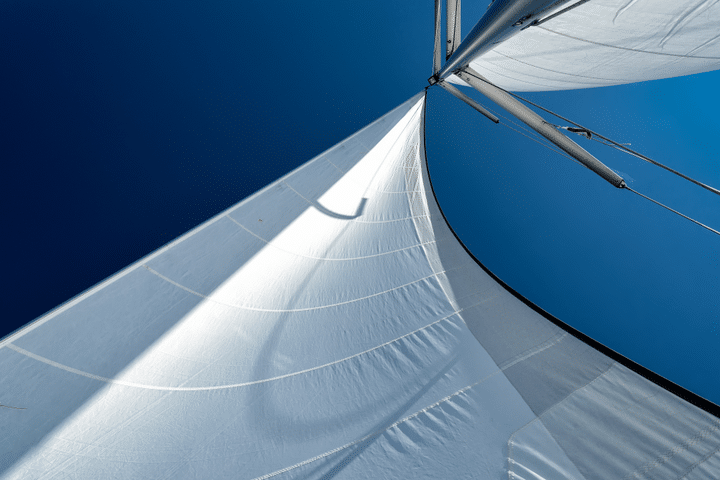
The mainsail is the principal sail on a sailboat, and it is set on the backside of the mainmast. It is the main source that propels the boat windward.
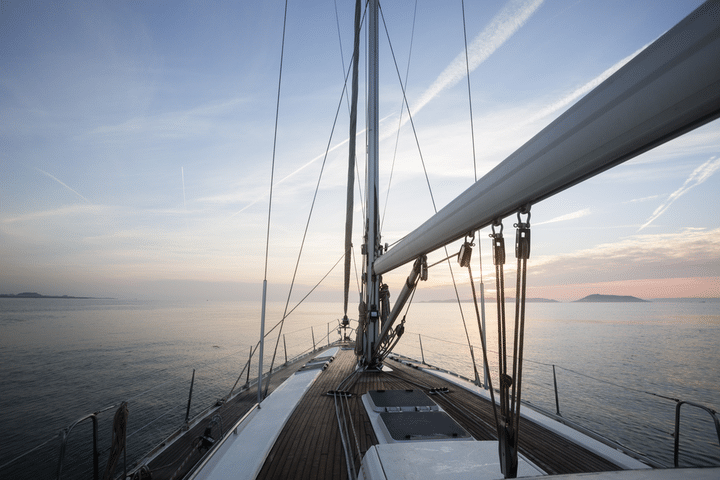
A boom is a spar (a pole made of wood or some other type of lightweight metal) along the bottom of a fore-and-aft rigged sail, which greatly improves the control of the angle and the shape of the sail, making it an indispensable tool for the navigation of the boat by controlling the sailes. The boom’s primary action is to keep the foot (bottom) of the sail flatter when the sail angle is away from the centerline of the sailboat.
The Kicking Strap (Boom Vang)
The boom vang is the line or piston system on a sailboat used to exert a downward force on the boom, enabling one to control the sail’s shape. The vang typically runs from the base of the mast to a point about a third of the way out the boom. It holds the boom down, enabling it to flatten the mainsail.
The Topping Lift
The topping lift is a line that is a part of the rigging on a sailboat, which applies an upward force on a spar (a pole) or a boom. Topping lifts are also used to hold a boom up when it’s sail is lowered. This line runs from the free end of the boom forward to the top of the mast. The line may run over a block at the top of the mast and down the deck to allow it to be adjusted.
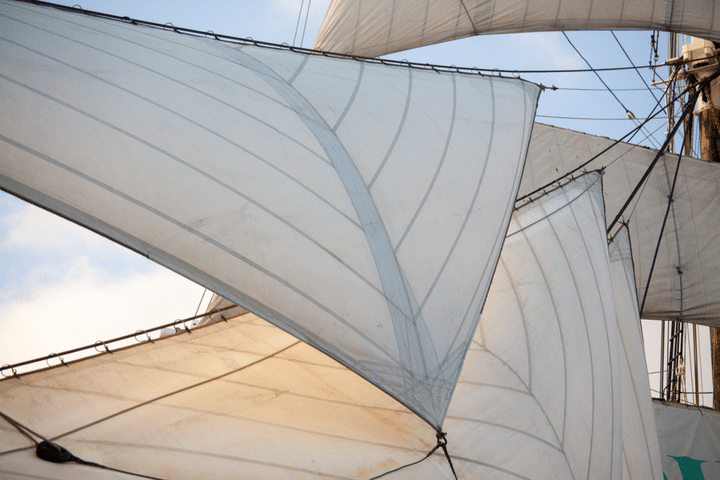
A jib is a triangular staysail set ahead of the foremost mast of a sailboat. Its tack is fixed to the bowsprit, the bow, or the deck between the bowsprit and the foremost mast. Jibs and spinnakers are the two main types of headsails on modern boats.
The Spinnaker
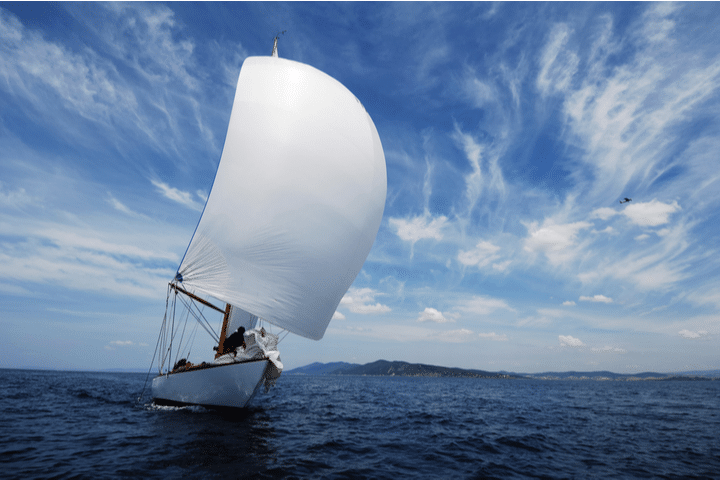
A spinnaker is a type of sail designed specifically for sailing off the wind from a reaching downwind course. The spinnaker fills up with wind and balloons out in front of the sailboat when it is deployed. This maneuver is called “flying.” The spinnaker is constructed of very lightweight material, such a nylon fabric and on many sailing vessels, it is very brightly colored.
Another name for the spinnaker is the “chute” because it often resembles a parachute, both in the material it is constructed from and its appearance when it is full of wind.
People often use the term genoa and jib as if they were the same thing, but there is a marked difference between these two types of sails. A job is no larger than a foretriangle, the triangular area formed by the mast, the deck or bowsprit, and the forestay. On the other hand, a genoa is larger than the jib, with part of the sail going past the mast and overlapping the mainsail. These two sails, however, serve very similar purposes.
The Backstay
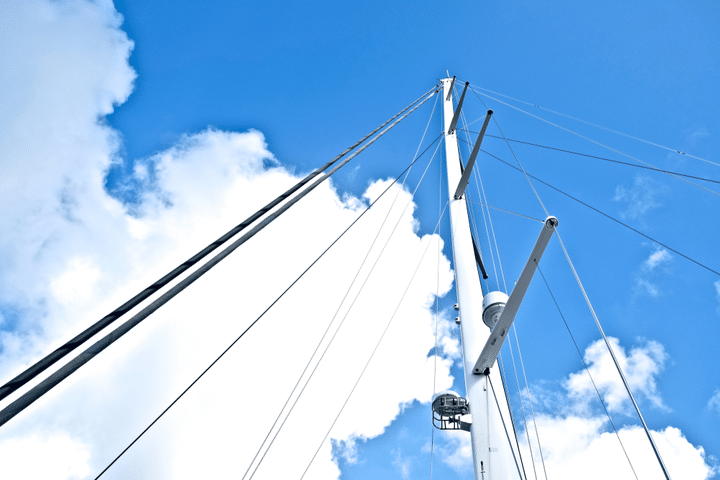
The backstay is a standing rigging that runs from the mast to the transom (the vertical section at the back of the boat), counteracting the forestay and the jib. The backstay is an important sail trip, control and directly affects the mainsail’s shape and the headsail.
There are two general categories of backstays:
1) A permanent backstay is attached to the top of the mast and may or may not be readily adjustable.
2) A running backstay is attached about two-thirds up the mast and sometimes at multiple locations along the mast. Most modern sailboats will have a permanent backstay, and some will have permanent backstays combined with a running backstay.
The Forestay
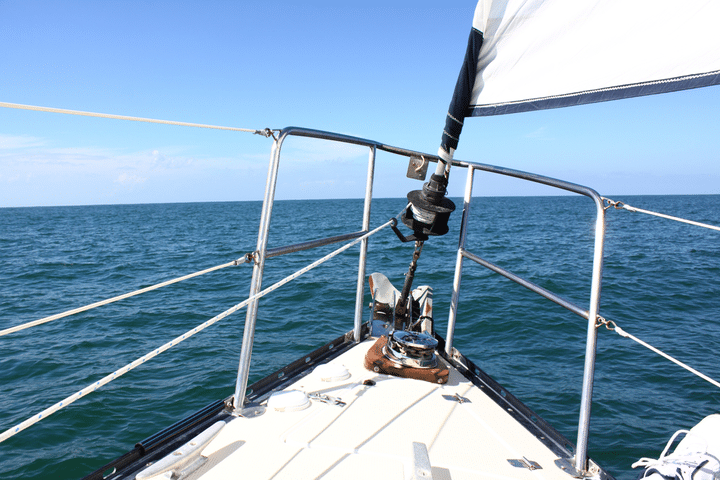
A forestay is a piece of standing rigging that keeps the mast from falling backward. It is attached at the very top of the mast, or at certain points near the top of the mast, with the other end of the forestay being attached to the bow (the front of the boat). Often a sail, such as a jib or a genoa, is attached to the forestay.
A forestay might be made from stainless steel wire, stainless steel rod or carbon rod, or galvanized wire or natural fibers.
Parts of a sail
Sails are vital for sailboats, made up of complex parts that improve performance and maneuverability. In this section, we’ll take a closer look at the different parts of that make up the sails.
Luff – The luff is a vertical sail part that maintains its shape and generates lift by interacting with the wind. It attaches securely with a bolt rope or luff tape for easy hoisting.
Leech – The leech controls air flow and reduces turbulence. Battens or leech lines are used to maintain shape and prevent fluttering.
Foot – The foot of a sail connects the luff and leech at the bottom edge. It helps define the sail’s shape and area. The outhaul is used to adjust its tension and shape.
Head – The sail’s head is where the luff and leech meet. It has a reinforced section for attaching the halyard to raise the sail.
Battens -The b attens are placed horizontally in sail pockets to maintain shape and optimize performance in varying wind conditions. They provide structural support from luff to leech.
Telltales – Sailors use telltales to adjust sail trim and ensure optimal performance.
Clew – The clew is important for shaping the sail and connecting the sheet, which regulates the angle and tension, producing energy. It’s located at the lower back corner of the sail.
Sailing is a favorite pastime for millions of Americans across the country. For some, there is nothing better than gliding across the water propelled by nothing more than the natural force of the wind alone. For both experienced and non-experienced sailors alike, Boatsetter is the perfect place to get your ideal sailboat rental from the mouthwatering Florida keys to the crystal blue waters of the Caribbean .
Smaller sailing boats are perfect for a single day out on the water, either by yourself or with friends and family. In comparison, larger sailing boats and sailing yachts can allow you days of luxury on longer excursions full of adventure and luxury.
Whatever your sailing dreams are, it is always good to know, for both the experienced sailor and the novice, all about the sailboat’s different parts. In this article, we learned all about the boat’s hull, the keel, the rudder, the mast, the mainsail, the boom, the kicking strap (boom vang), the topping lift, the jib, the spinnaker, the genoa, the backstay, and the forestay, which make up the basic parts of any sailboat you might find yourself on.
About us
Boatsetter is the go-to app for boat rentals and on-water experiences. Whatever the adventure, we’ve got a boat for that—Set sail , start the party , go yachting , make your trophy catch , and hone your watersports skills! Download the Boatsetter app ( App Store | Google Play ). Make sure to follow @boatsetter on Instagram, and tag us in all your boat day pictures for the chance to be featured.
Rent. List. Share—Only at Boatsetter

Boatsetter empowers people to explore with confidence by showing them a world of possibility on the water. Rent a boat, list your boat, or become a Boatsetter captain today.
Browse by experience

Explore articles

Top 7 Waterfront Restaurants in Jacksonville, Florida

Summer Fashion Guide for the "Boys of Boatsetter!"
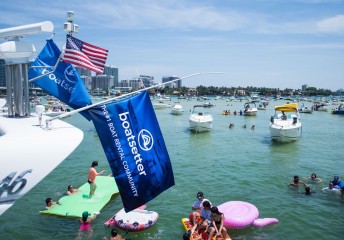
Boatsetter Summer Splash 2018
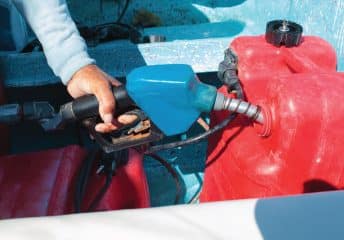
Fueling a Boat: How to Properly & Safely Fuel Your Boat
Parts of a Sailboat
The allure of sailing lies in the harmonious dance between wind and water, propelling sailboats on mesmerizing voyages across the open seas. However, before one can hoist the sails and embark on a maritime journey, it is essential to understand the intricacies of a sailboat’s anatomy.
In this article, we will delve into the captivating world of sailboats, unravelling the essential parts that compose these graceful vessels, allowing them to gracefully navigate the vast expanse of the ocean.
From the towering mast that reaches for the heavens to the delicate rigging that weaves the sails into the wind’s embrace, each component plays a vital role in the enchanting symphony of sailing. Whether you are an aspiring sailor or a seasoned mariner, join us on this enlightening voyage as we uncover the secrets behind the anatomy of a sailboat.
Hull and Deck
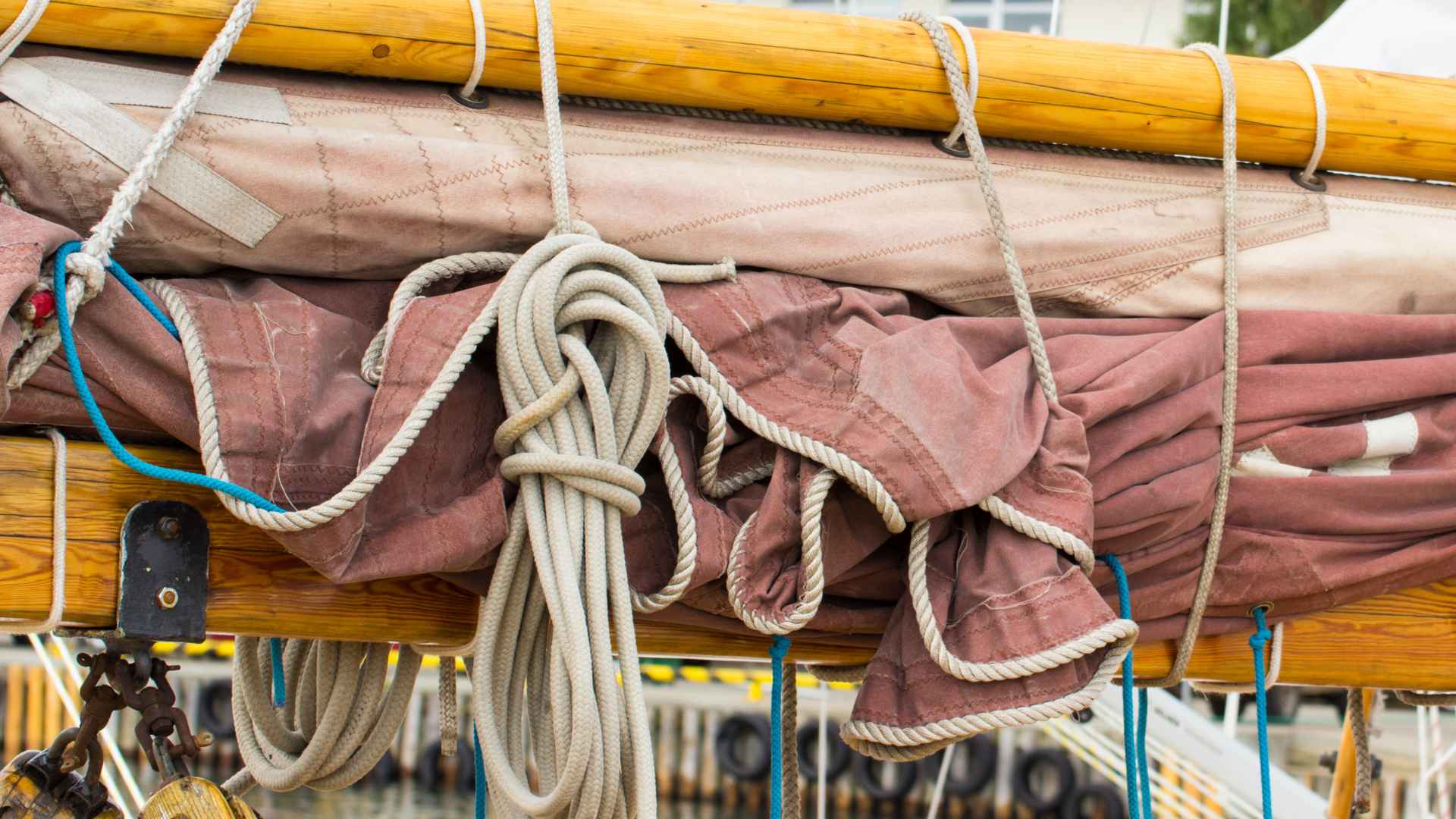
The hull of a sailboat is its foundational structure, serving as the backbone of the vessel. It is the part of the boat that interacts directly with the water, providing buoyancy and stability as it glides through the waves. Understanding the hull is essential for any sailing enthusiast, as it forms the basis of a sailboat’s design and performance.
The hull is typically made of a sturdy and watertight material, such as fiberglass, wood, aluminum, or even carbon fiber in high-performance racing boats. Its shape and design are carefully crafted to optimize the boat’s performance in different water conditions, ensuring a smooth and efficient sailing experience.
One of the primary functions of the hull is to provide buoyancy, allowing the boat to float on the water’s surface. It displaces water equal to its own weight, creating an upward force that keeps the boat afloat. This buoyancy is essential for the stability and safety of the sailboat.
Stability is another crucial aspect of the hull. Sailboats are designed to resist tipping over or capsizing, and the hull’s shape plays a significant role in achieving this stability. Sailboats can have either a monohull or a multihull design. Monohull sailboats have a single hull, while multihull sailboats, such as catamarans or trimarans, have two or more hulls. Each design has its advantages and characteristics, influencing the boat’s stability, speed, and comfort.
In addition to providing buoyancy and stability, the hull also houses various compartments and storage areas, including the cabin, where sailors can find shelter and accommodation during longer journeys. The deck, which is the upper surface of the hull, provides a platform for crew members to move around and perform various tasks while aboard the sailboat.
The hull and deck work together harmoniously to create a seaworthy vessel, capable of withstanding the forces of wind and waves. Whether you’re a seasoned sailor or a curious novice, understanding the importance of the hull is the first step toward unlocking the secrets of sailing and embracing the wonders of the open water.
What are the different hull types, such as monohull and catamaran, and their characteristics?
When it comes to sailboats, there are different hull types to choose from, each with its own unique characteristics and advantages. The two main types of sailboat hulls are monohull and catamaran. Let’s explore these hull types and their distinguishing features:
Monohull sailboats have a single hull, which is a single, continuous structure that runs from bow to stern. Monohulls are the most common type of sailboats and have been used for centuries. They offer several advantages:
- Versatility: Monohulls are versatile and well-suited for various sailing conditions, from calm coastal waters to rough offshore passages.
- Excellent upwind performance: Monohulls generally perform well when sailing upwind due to their ability to cut through the water and tack efficiently.
- Comfortable heeling: Monohulls have a natural tendency to heel, or lean to one side, which some sailors find enjoyable and exhilarating.
- Ample storage space: Monohulls often provide more interior space, including cabins, galleys, and storage compartments, making them suitable for longer journeys or living aboard.
Catamaran:
Catamarans have two hulls connected by a bridge or deck, creating a wide and stable platform. Catamarans have gained popularity in recent years, particularly for cruising and charter purposes. Here are some key characteristics:
- Stability: Catamarans offer exceptional stability, both at anchor and underway. The wider platform reduces heeling and provides a more comfortable experience, particularly for those prone to seasickness.
- Spaciousness: Catamarans generally have a larger interior living space, including multiple cabins, saloons, and outdoor areas. This extra space makes them popular for long-term cruising and leisure activities.
- Shallow draft: Catamarans have a shallower draft compared to monohulls, allowing them to navigate in shallower waters and access anchorages that may be inaccessible to deeper-draft boats.
- Speed potential: Due to their design and reduced drag, catamarans can achieve higher speeds, particularly reaching or running with the wind. This makes them popular among performance-oriented sailors.
Both monohulls and catamarans have their merits and are suitable for different sailing preferences and conditions. Ultimately, the choice between them depends on factors such as personal preferences, intended use (racing, cruising, chartering), and the specific requirements of your sailing adventures.
Whichever hull type you choose, the hull is the backbone of your sailboat, providing stability, buoyancy, and the foundation for an enjoyable and safe sailing experience.
What is the purpose and features of the deck?
The deck of a sailboat is the horizontal surface that covers the top of the hull. It serves several important purposes and is designed with various features to enhance functionality and safety. Let’s explore the purpose and key features of the deck:
- Cockpit: The cockpit is a designated area on the deck where the helmsperson controls the sailboat. It typically includes a steering wheel or tiller, compass, and various controls for sails, such as sheets and halyards. The cockpit provides a comfortable and secure space for the helmsperson to maneuver the boat and adjust while maintaining a clear view of the surroundings.
- Hatches: Hatches are openings on the deck that provide access to the interior compartments of the sailboat. They allow for ventilation, natural light, and access to storage areas, cabins, and engine compartments. Hatches are typically fitted with watertight seals to prevent water from entering the boat in rough seas or during heavy rain.
- Winches: Winches are mechanical devices mounted on the deck used to handle lines (ropes) on a sailboat. They provide mechanical advantage and make it easier to control and adjust the tension of the sails. Winches are commonly used for raising and trimming sails, adjusting the tension of halyards, and controlling the position of lines such as sheets and reefing lines.
- Cleats and Clutches: Cleats and clutches are deck fittings used to secure lines in place. Cleats are usually metal or plastic fixtures with two or more horns where lines can be wrapped or tied off to keep them secure. Clutches are cam-shaped devices that grip lines when engaged, allowing for easy adjustment and locking of lines without the need for tying knots.
- Toe Rails and Lifelines: Toe rails are raised ridges or rails running along the edge of the deck, primarily designed to provide foot support and prevent crew members from slipping overboard. Lifelines are horizontal safety lines that run along the perimeter of the deck, usually supported by stanchions. They serve as a barrier and help prevent crew members from falling off the boat.
Other deck features may include cleats, padeyes (attachment points for lines and hardware), handrails for stability, and various equipment for anchoring, such as anchor rollers and windlasses.
The deck is an essential component of a sailboat, providing a safe and functional platform for the crew. Its design and features are carefully considered to ensure comfort, control, and accessibility during sailing adventures.
Mast and Rigging

The mast is a fundamental component of a sailboat, serving as the vertical structure that supports the sails and plays a crucial role in the propulsion of the boat. Let’s delve into the characteristics and functions of the mast:
- Structure and Material: The mast is typically a tall, vertical spar made of materials such as aluminum, carbon fiber, or wood. It is designed to withstand the forces exerted by the wind on the sails and transfer them to the hull.
- Height and Length: The height and length of the mast can vary depending on the size and type of sailboat. Larger sailboats generally have taller masts to accommodate larger sail areas and provide more power and speed. Smaller sailboats, like dinghies or day sailors, have shorter masts.
- Step: The mast is stepped or secured at the bottom to the deck or keel of the sailboat. The step provides stability and ensures that the mast remains in an upright position.
- Spreaders: Spreaders are horizontal crossbars attached to the mast to prevent it from bending excessively under the pressure of the sails. They also help maintain the correct angle and shape of the shrouds (rigging wires that support the mast from the sides) and aid in distributing the forces evenly.
- Masthead and Headboard: The masthead is the topmost part of the mast, where various components, such as the sheaves for halyards (lines used to raise and lower sails) and the attachment point for the forestay (rigging wire that supports the front of the mast), are located. The headboard is a plate or fitting attached to the top of the mainsail, which slides into a track on the mast and helps secure the sail in position.
- Mast Tracks: Mast tracks are vertical grooves or slots running along the front of the mast. They allow the sails to be raised, lowered, and adjusted to different heights by means of halyards and sail slides.
The mast, along with its accompanying rigging, is an integral part of a sailboat’s propulsion system. It provides support for the sails, allowing them to capture the energy of the wind and transfer it into forward motion. The mast’s height, step, spreaders, and other components work together to ensure stability, proper sail shape, and efficient power transfer, contributing to the sailboat’s performance and maneuverability.
Let’s explore the various types of masts commonly found on sailboats:
Single-masted:.
- Single-masted rigs are the most common and versatile type of sailboat rigging. They feature a single mast that rises vertically from the deck.
- Single-masted rigs can support a variety of sail configurations, including a mainsail and one or more headsails (jibs or genoas).
- This rig is suitable for different types of sailboats, ranging from small day sailors to larger cruising and racing vessels.
Double-Masted:
- Double-masted rigs, also known as ketch or yawl rigs, consist of two masts: a main mast and a smaller mizzen mast located aft of the main mast.
- The mizzen mast is shorter than the main mast and is often positioned near the stern.
- Double-masted rigs provide additional sail area and flexibility in sail combinations, allowing for better balance and maneuverability.
- These rigs are commonly found on cruising sailboats and can handle a wide range of wind conditions.
Fractional Rigs:
- Fractional rigs are characterized by a mast that is shorter than the boat’s overall length.
- The mast is positioned further aft, and the forestay (rigging wire that supports the front of the mast) is attached at a point lower than the masthead.
- Fractional rigs offer increased control and versatility, making them popular on performance-oriented sailboats and racing yachts.
- They allow for easy adjustment of sail shape and balance, optimizing performance in different wind conditions.
Each type of rig offers its own advantages and characteristics. Single-masted rigs are versatile and suitable for various sailing applications. Double-masted rigs provide additional sail area and enhance maneuverability. Fractional rigs offer enhanced control and performance for competitive sailing. The choice of rig type depends on factors such as the boat’s size, intended use, and personal preferences of the sailor.
It’s important to note that there are additional rig variations beyond the ones mentioned here, including schooners, sloops, cutters, and more. Each rig type has its own unique features, and sailors often select the rig that best suits their sailing style, preferences, and the specific demands of their sailing adventures.
What are the key rigging components such as shrouds, stays, halyards, and sheets, and their functions?
Rigging refers to the network of wires, lines, and fittings that hold and control the sails on a sailboat. It plays a crucial role in maintaining the integrity of the mast and ensuring efficient sail handling. Let’s take a closer look at the components of rigging:
- Shrouds: Shrouds are thick stainless-steel wires or cables that extend from the mast to the sides of the boat. They provide lateral support and prevent excessive side-to-side movement of the mast. Shrouds help maintain the integrity and stability of the mast.
- Stays: Stays are like shrouds but are positioned fore and aft to control the forward and backward movement of the mast. The forestay is a forward-facing stay that connects the mast to the bow of the boat. Backstays, or backstay in the case of a single-masted rig, connect the top of the mast to the stern of the boat. Stays help counterbalance the forces exerted by the sails and provide additional support and stability to the mast.
- Halyards: Halyards are lines (ropes) used to raise and lower the sails. They are typically attached to the head (top) of the sails and run through pulleys or blocks. The main halyard is used to raise the mainsail, while jib halyards are used for headsails. Spinnaker halyards are used for spinnaker sails. By adjusting the tension of the halyards, sailors can control the position and shape of the sails.
- Sheets: Sheets are lines used to control the trim and shape of the sails. They are attached to the clew (lower aft corner) of the sails and run through blocks or winches. The mainsheet controls the mainsail, while jib sheets control the headsails. Spinnaker sheets are used for controlling spinnaker sails. By adjusting the tension and angle of the sheets, sailors can optimize the sail shape and adjust the power and efficiency of the sails.
- Blocks and Pulleys: Blocks and pulleys are essential components of the rigging system. They consist of one or more grooved wheels with a central axle. Lines are threaded through these wheels to change the direction and increase mechanical advantage when tensioning or releasing the rigging. Blocks and pulleys allow for smooth and efficient movement of the lines and reduce the effort required to control the sails.
These rigging components work together to hold and control the sails, allowing sailors to adjust their position, shape, and tension. By manipulating the shrouds, stays, halyards, and sheets, sailors can optimize the performance of their sailboat and adapt to changing wind conditions. Understanding and effectively using the rigging is crucial for safe and efficient sail handling.
Sails and Sail Controls
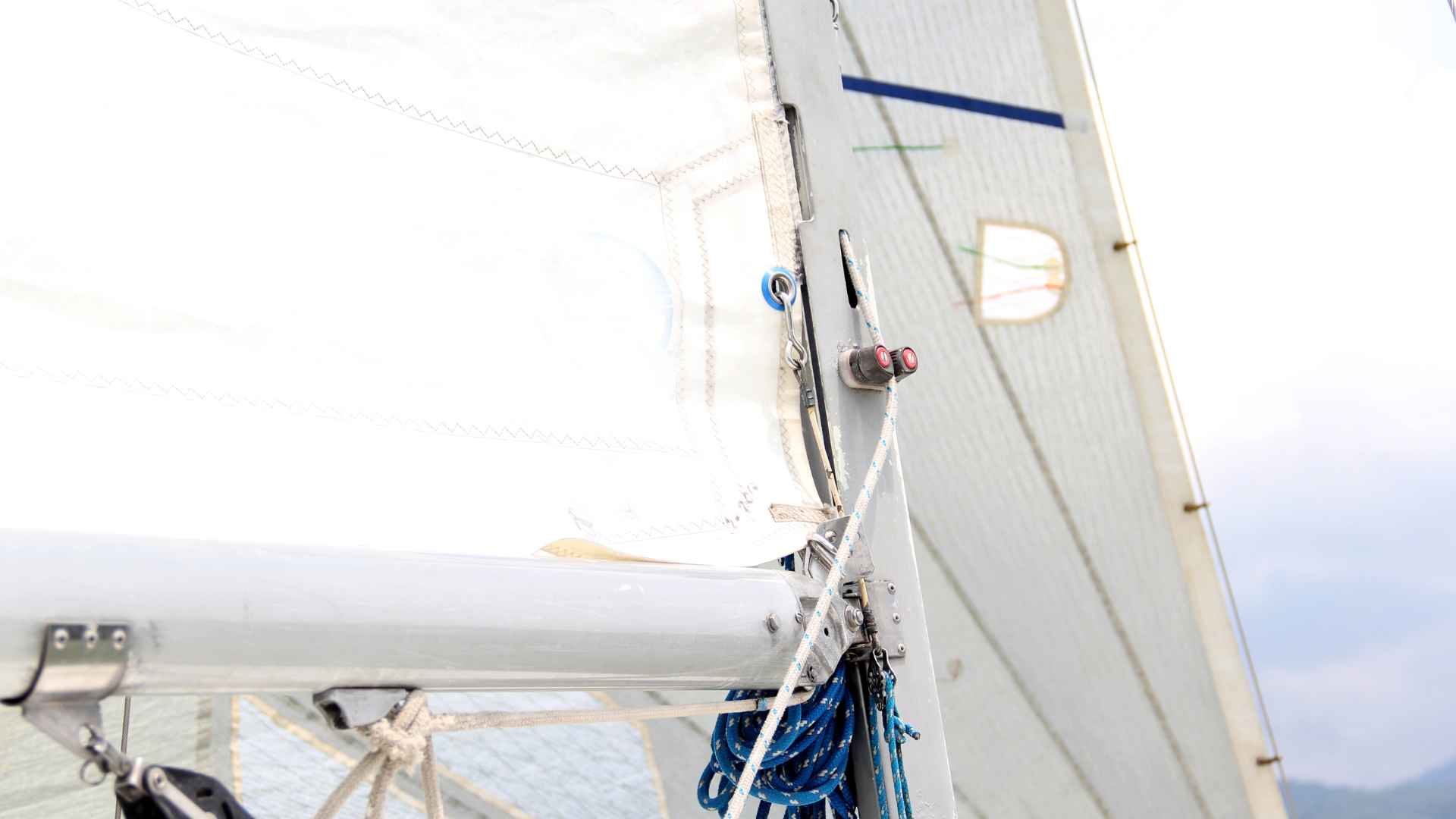
Sails, with their billowing canvas catching the wind, are the beating heart of a sailboat. They serve as the primary means of propulsion, transforming the invisible force of the wind into forward motion. The elegance and power of sails have allowed sailors to explore the world’s oceans for centuries, harnessing nature’s energy to embark on incredible journeys.
Sails come in various shapes and sizes, each designed to suit different sailing conditions and purposes. The mainsail is the largest and most significant sail, typically positioned behind the mast. It captures the wind from behind the boat and drives the vessel forward. Attached to the mast and boom, the mainsail can be adjusted to optimize its shape and angle to the wind, maximizing the boat’s speed and efficiency.
In addition to the mainsail, sailboats often have headsails, such as jibs or genoas, located near the bow of the boat. Headsails are smaller and more maneuverable than the mainsail, enhancing the sailboat’s performance and allowing it to sail closer to the wind. These sails are typically used in conjunction with the mainsail to provide additional power and control.
Specialty sails, such as spinnakers, are designed for specific sailing conditions and maneuvers. Spinnakers are large, colorful sails shaped like a balloon, which are used when sailing downwind or on a broad reach. They capture the wind from the front of the boat, significantly increasing the sail area and generating extra speed.
Sail controls play a vital role in managing the position, shape, and trim of the sails. Sail controls include various systems and mechanisms that allow sailors to adjust the sails to achieve optimal performance. These controls can include:
- Boom: The boom is a horizontal spar that extends aft from the mast and supports the foot (lower edge) of the mainsail. It helps control the shape and position of the sail.
- Traveler: The traveler is a movable track mounted on the deck or cockpit. It allows for lateral movement of the mainsheet and helps control the angle of the mainsail relative to the boat’s centerline.
- Cunningham: The cunningham is a control line attached to the luff (leading edge) of the mainsail. It allows sailors to tension the sail’s luff, flattening the sail and reducing its draft in stronger winds.
- Outhaul: The outhaul is a control line that adjusts the tension along the foot of the mainsail. By adjusting the outhaul, sailors can control the depth and shape of the sail.
- Reefing System: Reefing systems are used to reduce the area of the sails in strong winds. They allow sailors to partially lower or roll up the sails, reducing their overall size and power.
By skillfully adjusting these sail controls, sailors can optimize the shape, angle, and power of their sails, enabling them to sail efficiently, maintain control in varying wind conditions, and extract maximum speed from their sailboat.
Sails are not only functional but also beautiful, filling the horizon with their graceful forms. They capture the spirit of adventure, freedom, and the timeless allure of the sea. Understanding the intricacies of sails and their controls is essential for harnessing the wind’s power and unlocking the full potential of a sailboat’s performance.
Steering and Navigation
Steering a sailboat and navigating the waters require a combination of skill, knowledge, and the right equipment. Let’s explore the steering system, the role of the rudder, and the essential navigation instruments used on sailboats.
The steering system of a sailboat allows the helmsperson to control the direction of the boat. Depending on the boat’s design, you will find either a tiller or a wheel as the primary steering mechanism. The tiller is a long handle connected directly to the rudder, while the wheel is a circular device linked to a steering mechanism that transfers the movement to the rudder. By manipulating the tiller or turning the wheel, the helmsperson can steer the sailboat left or right, adjusting its course according to the wind and navigational needs.
The rudder, located beneath the waterline at the stern of the sailboat, plays a crucial role in maneuvering the boat. It is a vertical or horizontal fin-like structure that can be rotated from side to side. When the helmsperson steers the boat, the rudder responds, creating resistance against the water and redirecting the boat’s movement. By adjusting the angle of the rudder, the helmsperson can control the boat’s heading, making it possible to tack (change direction across the wind) or jibe (change direction with the wind from behind). The rudder is a fundamental component of sailboat control and is critical for maintaining stability and maneuverability.
In addition to steering, navigation instruments and equipment are essential for safe passage on the water. Here are a few key tools commonly found on sailboats:
- Compass: A compass is a navigational instrument that indicates the boat’s heading in relation to magnetic north. It provides a reliable reference point for maintaining a desired course and navigating with accuracy, even in the absence of electronic devices.
- GPS (Global Positioning System): GPS is a satellite-based navigation system that allows sailors to determine their precise location on the earth’s surface. GPS units on sailboats provide real-time positioning, speed, and course information, enhancing navigational accuracy and safety.
- Depth Sounder: A depth sounder, also known as a depth finder or echo sounder, measures the depth of the water beneath the sailboat. It helps sailors avoid shallow areas or underwater hazards, ensuring safe navigation.
- Charts: Nautical charts are maps specifically designed for navigation on the water. They provide important information about water depths, navigational aids, landmarks, and other details essential for planning and following a safe course. Charts are still a valuable tool, even with the advent of electronic navigation systems.
These are just a few examples of the many navigation instruments and equipment available to sailors. Depending on the complexity of the sailboat and the navigational requirements, additional tools such as radar, AIS ( Automatic Identification System ), wind instruments, and electronic chart plotters can also be found onboard.
Steering the sailboat and navigating the waters require a combination of traditional seamanship skills and modern technology. By mastering the steering system, understanding the role of the rudder, and utilizing navigation instruments effectively, sailors can confidently explore the seas, navigate challenging environments, and reach their destinations safely and efficiently.
Auxiliary Power and Safety Equipment
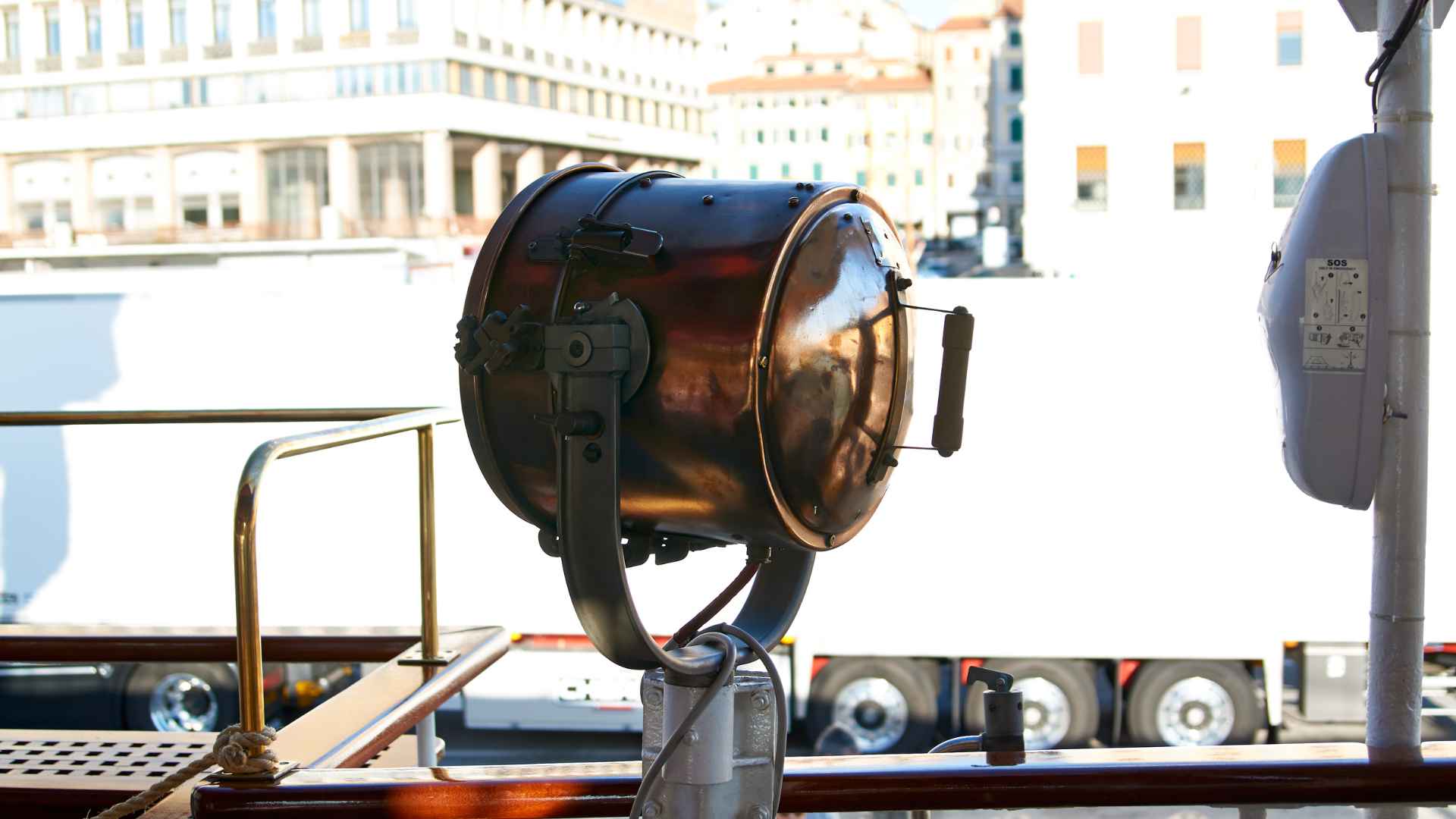
While sailboats primarily rely on the power of the wind to propel them, many sailboats are equipped with auxiliary power systems to provide additional maneuverability when needed. These auxiliary power systems typically consist of either an inboard or outboard engine.
An inboard engine is integrated into the hull of the sailboat and is positioned below deck. It offers advantages such as increased power, better fuel efficiency, and reduced noise compared to outboard engines. Inboard engines are typically larger and provide more torque, making them suitable for larger sailboats or those that frequently navigate in challenging conditions or against strong currents.
On the other hand, outboard engines are portable and mounted externally on the stern of the sailboat. They are versatile, lightweight, and easy to maintain. Outboard engines are popular among smaller sailboats or those that require occasional motorized propulsion.
The auxiliary power system, whether inboard or outboard, serves as a backup when wind conditions are light or during precise maneuvers in tight spaces, such as docking or maneuvering in crowded marinas. It provides sailors with increased control and helps ensure the safety of the vessel and its occupants in situations where sail power alone may be insufficient.
In addition to auxiliary power, ensuring the presence of proper safety equipment is crucial for any sailboat. Safety equipment helps to mitigate risks and ensure the well-being of everyone on board. Here are some essential safety items that should be present on a sailboat:
- Life jackets: Every person on board should have access to a properly fitting life jacket or personal flotation device (PFD). Life jackets are designed to keep individuals afloat and provide buoyancy in case of accidental falls overboard or emergencies.
- Fire extinguishers: Sailboats should be equipped with fire extinguishers suitable for extinguishing different types of fires. It’s important to have them readily accessible in case of a fire onboard.
- Distress signals: Distress signals, such as flares or electronic signaling devices, are crucial for attracting attention and signaling distress in emergency situations. These signals can aid in alerting nearby vessels or rescue services for assistance.
- Navigation lights: Sailboats must have properly functioning navigation lights, especially when operating during low visibility conditions or at night. Navigation lights allow other vessels to identify the sailboat’s position and determine the direction it is heading.
Complying with boating regulations regarding safety equipment is not only a legal requirement but also crucial for the well-being and security of everyone on board. It is essential to regularly inspect and maintain safety equipment to ensure it is in proper working condition and easily accessible in case of an emergency.
By understanding the role of auxiliary power systems and prioritizing the presence of essential safety equipment, sailors can navigate with confidence, knowing they have the necessary resources to handle various situations that may arise during their sailing adventures.
As we continue our journey through the anatomy of a sailboat, we uncover more elements that contribute to the joy and safety of sailing. Join us as we delve further into the intricacies of sailboat components and explore the secrets that make sailing a remarkable and secure experience.
Watch Parts of the boat and what they do | Video
Top 5 FAQs and answers related to What are the parts of a sailboat
What is the purpose of the mast on a sailboat .
The mast is the tall vertical structure on a sailboat that supports the sails. Its main purpose is to capture and harness the power of the wind, providing propulsion to the sailboat.
What are the different types of sails on a sailboat?
Sailboats have various types of sails, including the mainsail, headsail (jib/genoa), and specialty sails like spinnakers. The mainsail is the primary sail attached to the main mast, while the headsail is located at the front of the boat. Spinnakers are large, lightweight sails used for sailing downwind.
What are some important sail controls on a sailboat?
Sail controls play a crucial role in adjusting the shape and angle of the sails for optimal performance. Key sail controls include the boom, traveler, cunningham, outhaul, and reefing systems. The boom holds the foot of the mainsail, while the traveler allows sideways movement of the boom. The cunningham, outhaul, and reefing systems help control the tension and shape of the sails.
What is the purpose of the rudder on a sailboat?
The rudder is a vital component located beneath the waterline at the stern of the sailboat. Its primary purpose is to steer and maneuver the sailboat by redirecting the flow of water, allowing the helmsperson to control the direction of the boat.
What safety equipment should be on a sailboat?
Essential safety equipment on a sailboat includes life jackets or personal flotation devices (PFDs) for all passengers, fire extinguishers, distress signals such as flares or electronic signaling devices, and navigation lights. These items help ensure the safety of the crew and comply with boating regulations.
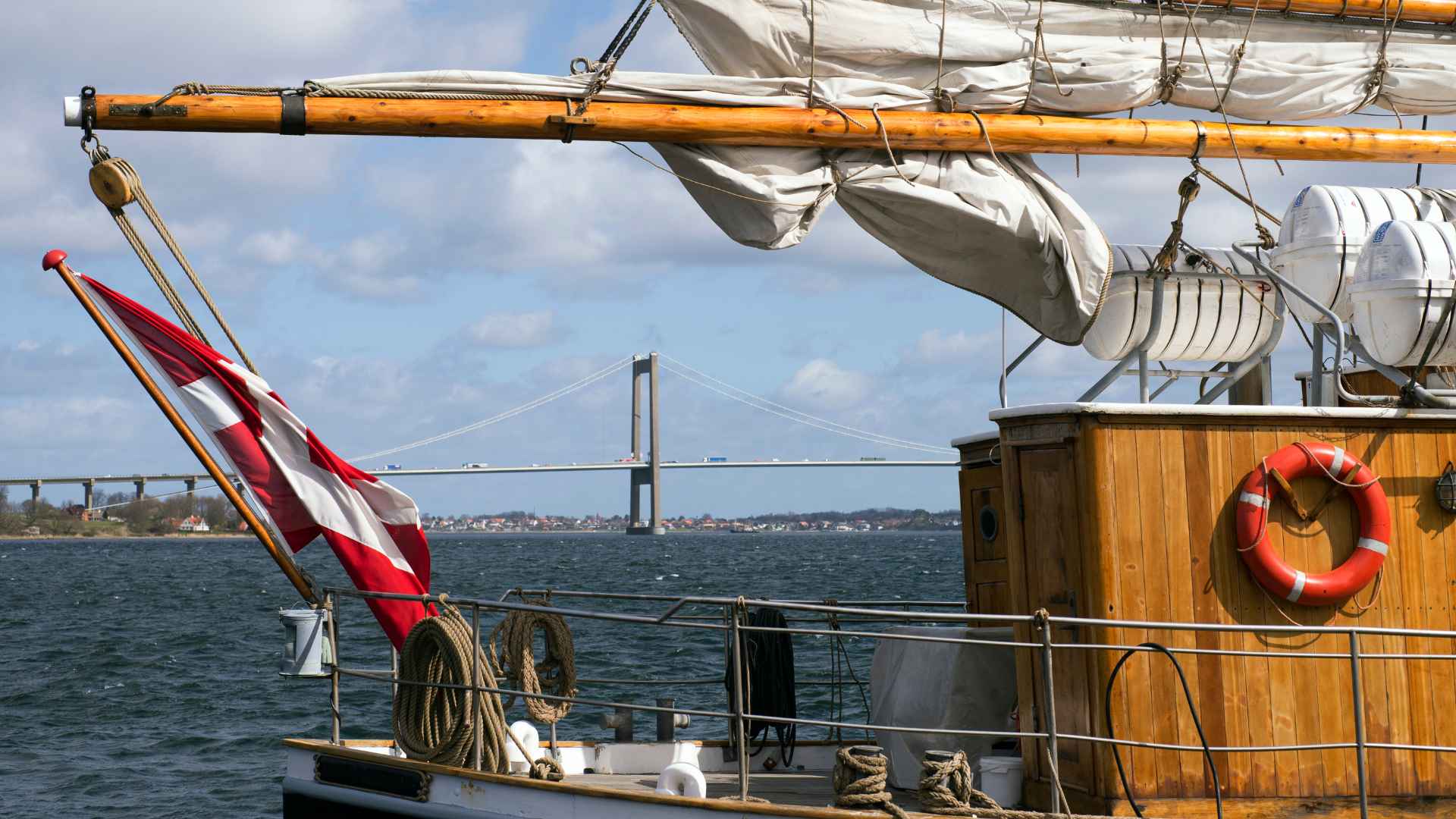
Understanding the various parts of a sailboat is fundamental to appreciating the art and science of sailing. From the sturdy hull and towering mast to the intricate rigging, sails, and navigation equipment, each component plays a vital role in the operation and performance of a sailboat.
We have explored the different types of hulls, the significance of the mast and rigging, and the versatility of sails and sail controls. We have also touched upon the importance of steering systems, the role of the rudder, and the essential safety equipment necessary for a safe and enjoyable sailing experience.
By recognizing the interconnectedness of these parts, we gain a deeper appreciation for the synergy between wind, water, and the intricate machinery of a sailboat. The thrill of harnessing the wind and propelling a vessel through the water becomes all the more captivating.
Whether you aspire to be a sailor, are already familiar with sailboats, or simply have a curiosity for the sea, there is always more to learn and discover. Dive into the world of sailing, explore the intricacies of sailboat design, and embrace the countless adventures that await on the open water.
So, hoist your sails, trim your sheets, and set a course for a lifetime of discovery. Let the wind guide you as you embark on your own sailing journey, where the beauty of nature and the art of sailing unite in a symphony of motion and tranquility.
Share What Are the Parts of a Sailboat and What They Do? Guide with your friends and Leave a comment below with your thoughts.
Read Is Boat Insurance Required in Michigan: Boat Owners Guide until we meet in the next article.
Similar Posts
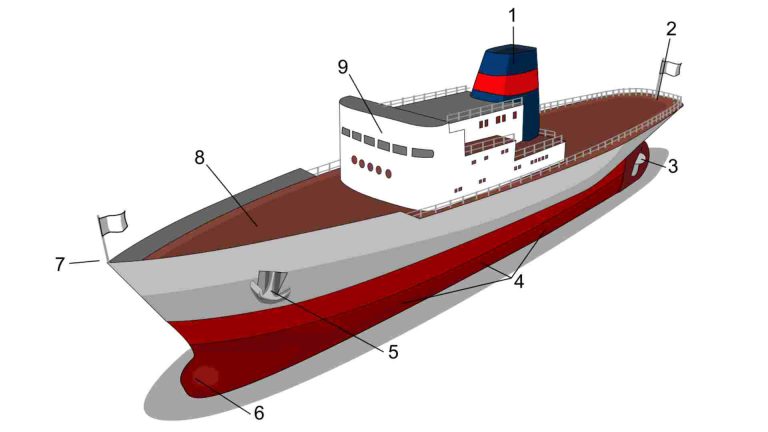
What Does Red on Deck Meaning on a Boat?
In the vast expanse of the open sea, where every wave tells a story and every gust of wind carries the whispers of maritime tradition, there exists a phrase that echoes through the hulls of boats and yachts — “Red on Deck.” It’s a mysterious utterance, a code among sailors that beckons curiosity. What does…

How to Do a Compression Test on a Boat Engine?
In the symphony of boating, where the melody of the open waters meets the rhythm of adventure, the heart of every voyage rests within the boat’s engine. It’s the powerhouse that propels dreams into reality, the beating heart that navigates us through uncharted horizons. But like any heartbeat, an engine’s performance can falter, its rhythm…

Carolina Skiff vs. Boston Whaler: Detailed Comparison
For saltwater enthusiasts dreaming of coastal adventures, the choice between a Carolina Skiff and a Boston Whaler can be an agonizing one. Both boast dedicated followings, but their distinct personalities cater to different preferences and priorities. So, grab your nautical compass, buckle up, and let’s dive deep into the murky waters of comparison, casting light…

Outboard Motor Runs Fine, Then Loses Power: What Causes?
Picture this: you’re out on the water, the sun is shining, and you’re enjoying a perfect day of boating. Suddenly, your outboard motor sputters, loses power, and leaves you adrift. It’s a scenario that every boater dreads – the frustration of an outboard motor that was running smoothly one moment and then inexplicably loses power…
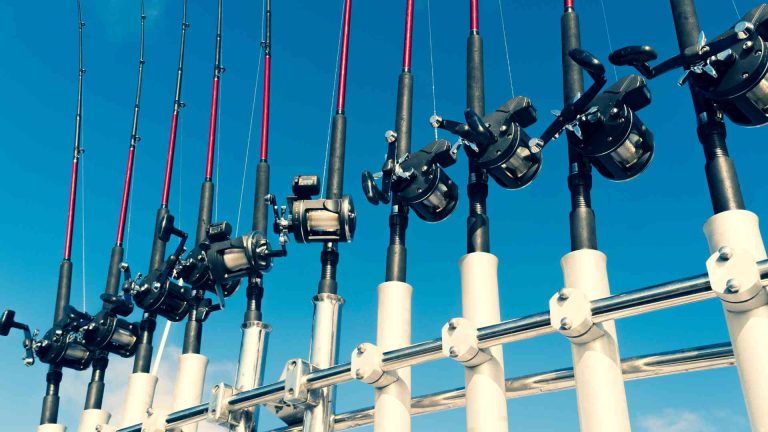
Pontoon Boat Fishing Rod Holders: The Angler’s Guide
Picture this: a serene morning on the water, the gentle rocking of your pontoon boat, and the thrill of fishing. Pontoon boats have become increasingly popular for anglers who crave a leisurely yet productive fishing experience. But to make the most of your fishing adventure, you need the right equipment. That’s where fishing rod holders…
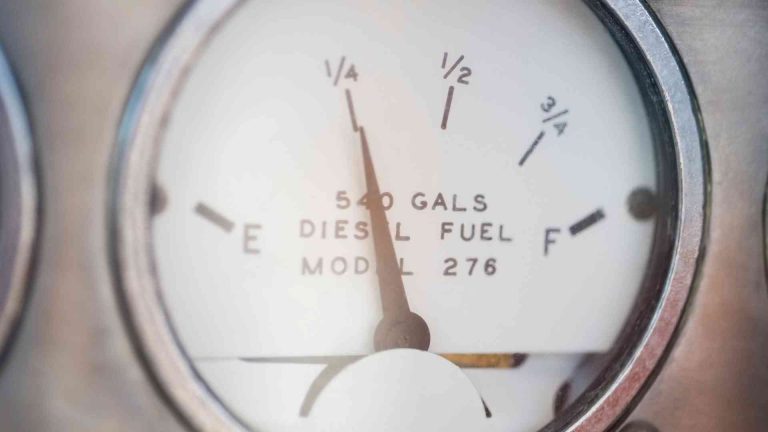
10 Tips to Improve the Fuel Efficiency of Your Boat’s Engine
Setting sail on the open waters is a source of exhilaration, and the thrill of the journey often takes center stage. However, beneath the surface, a crucial consideration quietly runs its course: fuel efficiency. Just as a well-maintained compass guides your vessel’s course, a focus on improving fuel efficiency guides your journey towards cost savings…
- Inquire Now
- YACHT SEARCH
- Motor Yachts
- Sailing Yachts
- $1 – $25,000 Yachts
- $26,000 – $50,000 Yachts
- $50,000 – $100,000 Yachts
- $101,000 – $200,000 Yachts
- $200,000 – ∞ Yachts
- Turks and Caicos
- Virgin Islands
- Spain & Balearic Islands
- New England
- Tahiti & South Pacific
- More destinations
- Charter Advice
Learning the Parts of a Sailboat
Teach yourself the definitions of the many different sailboat parts.
A sailboat is a boat that is propelled either partly or entirely by sails. Sailing is popular in many destinations around the world. For example, Bahamas catamaran charters are a time-honored tradition in the Caribbean, and in the Mediterranean, sailing is a way of life.
There are several different types of sailboats and what constitutes a sailboat varies by maritime culture and region. Most sailboats are classified based on their hull configuration, size, purpose, keel type, configuration and number of masts, and the sail plan. The different types of sailboats include cutters, catboats, dinghies, ketches, schooners, sloops, and yawls. There are many different parts that make up a sailboat. Continue reading to learn about the different parts of a sailboat.
- Backstay – A rod or cable that runs from the stern of the boat to the top of the mast.
- Block – This is the nautical term that means pulley.
- Boom – A pole that attached to the mast horizontally and is used for extending the foot of the mainsail.
- Boom Vang – A device used for holding down the boom.
- Bow – The front part of a boat.
- Centerboard – A plate that pivots and is used to lessen leeway and balance the boat.
- Cleat – A fastening where lines are able to be secured.
- Halyard – The line that is used to raise a sail; the main halyard raises the main sail.
- Hull – This is the body of the boat, not including masts, superstructure, or rigging.
- Jib – A foresail that fits within the foretriangle and the clew does not extend past the mast.
- Keel – The part of a boat that is fixed underwater and is used to provide stability and prevent drifting sideways.
- Line – Refers to any pieces of rope located on a boat.
- Mast – A vertical pole on a boat that is used for supporting sails.
- Outhaul – A sail control that allows tensioning of the foot and attaches to the clew.
- Painter – The line attached to a smaller boats bow that is used for tying it to another boat or a dock.
- Rudder – The movable underwater steering device of a boat.
- Shackle – A fitting composed of metal that is normally used to connect halyards and sails.
- Shrouds/Stays – Wires that help to hold the mast upright; the front wire is referred to as the forestay.
- Spreade r – Struts used to increase the power of the shrouds, they are attached to the mast.
- Stern – The afterpart of the boat.
- Tiller – A metal or wooden stick that is used to turn the rudder of the boat.
- Transom – The afterpart of the boat that is square to its centerline.
- Wheel – The apparatus used for steering.
- Winch – A drum shaped object made of metal which lines are wrapped around to make trimming easier.
There are many different parts of a sailboat that work together to help the boat move. Learning how to sail can be fun and the first step is becoming familiar with the parts of a sailboat and commonly used sailing terms. If you’re planning a yachting vacation – like a Bahamas yacht charter – this knowledge will come in handy, if you’d like a sailing lesson at sea. For more on sailboat parts and sailing terms, check out the pages below.
- In-Depth Page of Sailing Terminology
- The Basic Parts of a Sailboat
- Definitions and Mnemonics for Sailors and Powerboaters
- Learn the Parts of a Sailboat
- Sailing Terms Everyone Should Know
- Sailing Basics: Terms, Rules, and How to Sail
- Nautical Terms Related to Sails and Sailing
Written by Katja Kukovic
Go to Knowledgebase
Set your search criteria to find the perfect yacht
- Alaska Australia Bahamas BVI Caribbean Croatia Florida France Galapagos Greece Indonesia Italy Malaysia Maldives Mexico Mediterranean New England Norway Spain Thailand Tahiti Turkey
- Motor Yacht Catamaran Sailing Boats
- 2 4 6 8 10 12 12+
Search by yacht name
- Types of Sailboats
- Parts of a Sailboat
- Cruising Boats
- Small Sailboats
- Design Basics
- Sailboats under 30'
- Sailboats 30'-35
- Sailboats 35'-40'
- Sailboats 40'-45'
- Sailboats 45'-50'
- Sailboats 50'-55'
- Sailboats over 55'
- Masts & Spars
- Knots, Bends & Hitches
- The 12v Energy Equation
- Electronics & Instrumentation
- Build Your Own Boat
- Buying a Used Boat
- Choosing Accessories
- Living on a Boat
- Cruising Offshore
- Sailing in the Caribbean
- Anchoring Skills
- Sailing Authors & Their Writings
- Mary's Journal
- Nautical Terms
- Cruising Sailboats for Sale
- List your Boat for Sale Here!
- Used Sailing Equipment for Sale
- Sell Your Unwanted Gear
- Sailing eBooks: Download them here!
- Your Sailboats
- Your Sailing Stories
- Your Fishing Stories
- Advertising
- What's New?
- Chartering a Sailboat
The Parts of a Sailboat (of which there are a great many!)
Some parts of a sailboat are very small and cheap, but are far from insignificant. Take the humble clevis pin for example; find one of these on the foredeck and you've cause to be concerned for the security of your rig!
If we were going to discuss all the parts of a sailboat here, it would be a very long article indeed - but relax, that's not going to happen.
Let's make a start with...
The Parts of a Sailboat Above Deck
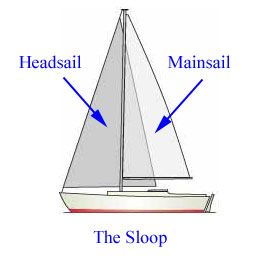
Dacron is the usual choice of sailcloth for cruisers although laminated sails are becoming more common, and moulded sails are the first choice for racing sailors.
Read more about sails...
The Rigging
The standing rigging , generally made up in 1x19 stainless-steel wire, supports the mast.
The forestay and backstay secure the mast in the fore-and-aft plane, and the shrouds secure it athwartships.
The ends of the stays and shrouds are secured to the structural elements of the hull via chainplates.
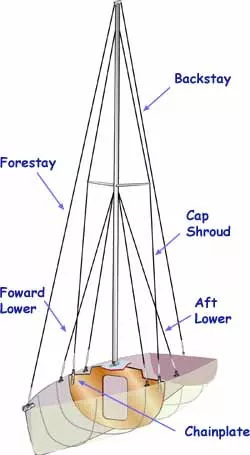
The running rigging is the collective name for the lines (halyards, sheets, topping lifts, uphauls, downhauls etc) that control the sails. Their working ends are attached either directly to the sails or, in the case of the headsail, to the boom.
Read more about sailboat rigging...
These are the rigid struts, generally fabricated in alloy, wood or carbon fibre whose job it is to deploy the sails. For example:
- The spinnaker pole;
- The whisker pole;
- The bowsprit;
- The boomkin.
Read more about sailboat masts...
The Cockpit
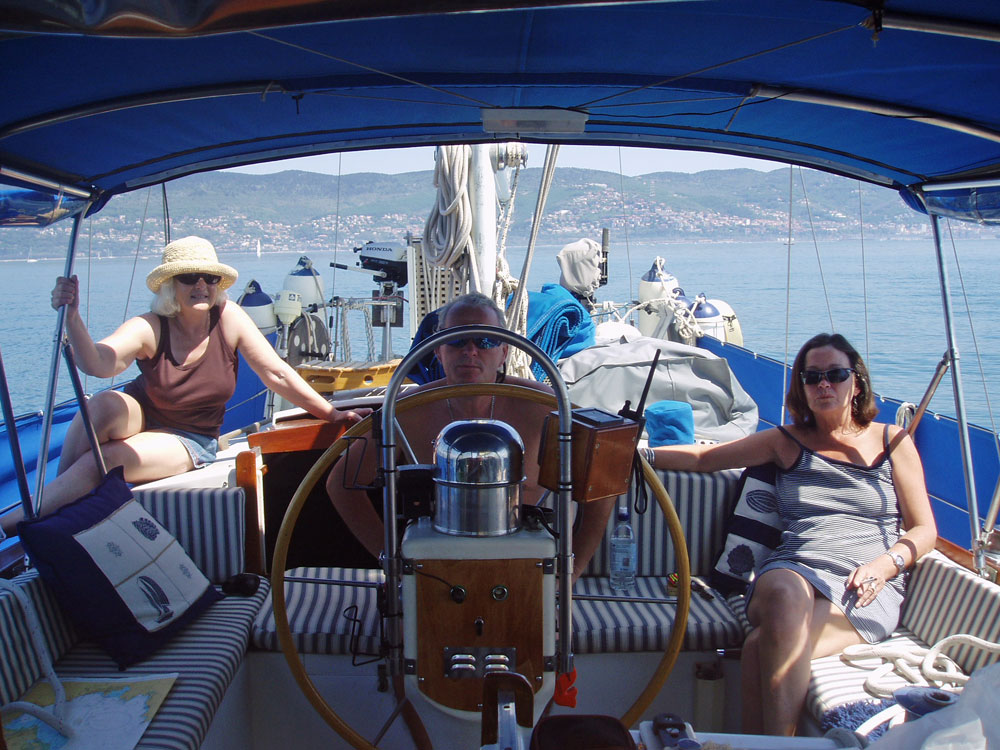
Like many cruising boats, the Ted Brewer designed Whitby 42 ketch pictured above has a centre-cockpit, which allows for the provision of a sumptuous aft-cabin below. Nevertheless, aft-cockpit boats have a great following with seasoned cruisers too. So what the aft versus centre-cockpit pro's and con's?
Tillers and Wheels
Smaller boats tend to be tiller-steered while larger ones, as in the image above, have wheels. Tillers are attached directly to the rudder stock; wheels are located remotely and operate the tiller through chain or hydraulic linkage.
Each approach has their devotees, but what are the arguments for and against?
The Parts of a Sailboat Below the Waterline
Keels & rudders.
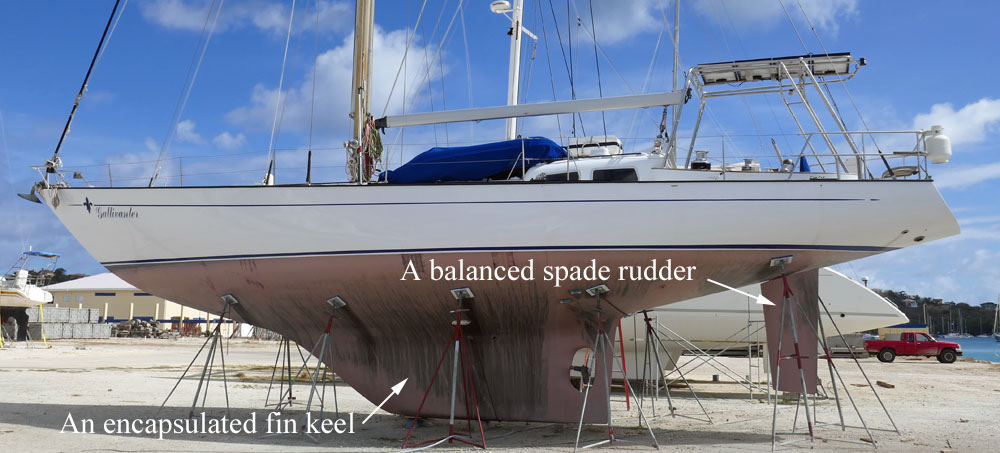
Keels provide three key attributes in varying amounts depending on their design : directional stability, ballast, and lift to windward.
Rudders provide steerage and a small contribution towards lift to windward. They are either:
- Outboard or inboard rudders, which can be
- Unbalanced, balanced or semi-balanced, and be
- Keel-hung, skeg-hung, transom-hung or spade rudders.
Rudder types are discussed here...

Driven by the boat's diesel engine, the propeller allows good progress to be made when the wind is not cooperating.
Under sail though the propeller is redundant and the fixed blades provide nothing but unwanted drag. This is greatly reduced if the blades can fold aft in a clamshell arrangement or feather in self-alignment with the water flow.
Sailboat propellers are either 2 or 3-bladed - and you can read more about them here...
Below Decks

There's no 'standard' layout for the below-decks accommodation on a sailboat, although the one shown above is a popular choice.
Some layouts work well for offshore sailing whereas others are much less suitable - here's why some succeed where others fail...
Recent Articles
'Cabo Frio', a Catalina Morgan 43 for sale
Apr 01, 24 08:35 AM
Live Aboard Boats For Sale
Mar 30, 24 07:02 PM
A Beneteau Oceanis 43 for Sale
Mar 30, 24 06:01 PM
Here's where to:
- Find Used Sailboats for Sale...
- Find Used Sailing Gear for Sale...
- List your Sailboat for Sale...
- List your Used Sailing Gear...
Our eBooks...

A few of our Most Popular Pages...

Copyright © 2024 Dick McClary Sailboat-Cruising.com

Parts of a Sailboat

Last Updated by
Daniel Wade
September 28, 2022
Sailboats share many parts with other boats, such as keels, decks, and sometimes engines. But parts like halyards, sheets, and blocks are unique to sailboats.
Sailboats require four main parts to operate: a hull, mast, sail, and rudder. The hull is the body of the boat, and all other parts are directly or indirectly connected to it. The mast is a long pole that serves as a guide and mounting point for the sail. The sail catches the wind and propels the boat, and the rudder directs the boat and acts as its steering.
Here are all the main parts of a typical cruising sailboat , including hardware, lines, controls, cabin items, and a rundown of common sailing terminology.
Table of contents
Port, Starboard, Bow, Stem, and Stern
Before we get into the parts of a sailboat, let’s get a handle on sailboat direction. The bow of the boat is the front (forward), and the stern is the rear (aft). The stem is the forward-most part of the bow and determines its shape. These words describe the general area of front and back.
When determining port and starboard, picture looking down on the boat with the bow oriented forward. The port side is the left side of the boat, and the starboard is the right side. Now picture yourself at the controls of your boat.
If your lookout sees an obstacle off the port bow, which direction should you look? That’s right—the obstacle is forward and to the left of you. Now, we’ll go over the basic parts of a sailboat.
Basic Parts of a Sailboat
What are the basic parts of a sailboat? These are items that are essential to the operation of the boat and universal across most sailing craft. Every sailor should know where these parts are and what they do. Here are nine fundamental sailboat parts, their function, and why they’re important.
The hull is the ‘boat’ itself. It comprises the frame of the boat, the skin that keeps the water out and serves as the mounting point for everything else on the boat (both directly and indirectly). Simply put, if you punch a hole in the hull, water will come into the boat. Sailboat hulls are constructed most commonly out of fiberglass or hardwood (such as white oak), but some boat hulls are made out of aluminum, steel, and even a material called ferrocement.
The deck is the platform that covers the hull. It’s the place where you walk when you’re not inside the boat. Most people would consider the deck as any place ‘on top’ of the hull. The deck serves as a mounting point for essential boat hardware such as the mast and winches. We’ll get into those later; just think of the deck as the visible top area of the vessel. Decks are often made of fiberglass as well, but traditional boats use teak wood planking in this area. You’ll often find abrasive anti-slip material on the deck, as sailors often walk across it in wet conditions.
The keel is the structural backbone of the boat. It’s located in the bottom of the hull and serves as a sort of ‘spine’ to which all frame members are mounted during construction. The keel is an essential part of the boat and cannot be broken or damaged. You’ll often hear the term ‘keelboat’ in the sailing community. This word describes a sailboat with a long and deep keel, which is like a thin fin that runs the length of the hull. Keelboats are seaworthy vessels, as the elongated hull adds stability and keeps the boat on a straight track.
Centerboard
Many sailboats don’t have a long, deep keel, but they still need some sort of fin to keep the boat tracking straight. To substitute a long keel, many boats utilize a dagger-like board called a centerboard . This plate protrudes underneath the center of the boat, usually between one and three feet below the bottom of the hull. Centerboards are often retractable, which is great for towing and beaching. Centerboards are most common on small sailboats designed for inland or coastal cruising.
The cockpit is usually located in the rear of the boat. It features seating for the crew and controls for the steering, sails, and engine. The cockpit is the command center of the sailboat and often features storage lockers under the seats. Many cockpits are self-draining, which means they’re located above the water line and clear themselves of water accumulation. Some sailboats have enclosed cockpits for off-shore sailing. In a typical cruising sailboat , the cockpit usually takes up ⅓ of the total length of the boat or less.
The mast is the big pole extending from the deck of the sailboat. It connects the sail to the boat and serves as a frame for all sails carried by the vessel. The mast is a key part of the sail plan and helps determine what kind of boat you’re looking at. Most sailboats have just one mast, but others have numerous masts. A schooner, for example, has two masts and a specific sail plan. A yawl also has two, but each mast serves a separate function.
The rudder steers the boat and is located on or under the stern of the vessel. Rudders are an essential part of the boat, and they’re particularly sensitive to impact or misalignment. On some boats, the rudder is completely invisible when in the water. Other boats have retractable rudders for beaching or towing. Fundamentally, a rudder is just a plate that’s hinged to move side to side. It’s connected to the tiller or the helm, which we’ll cover in a bit.
The sail is what propels the boat, and most boats have more than one. The aft (rear) sail on a single-masted boat is called the mainsail , and it’s the largest of the two primary sails. The triangular forward (front) sail is called the jib, and it’s generally smaller than the mainsail. Other sails include the spinnaker, which is like a loosely-mounted parachute that flies in front of the boat during conditions of low wind.
The boom is a hinged rod that extends perpendicular to the mast. It’s mounted on the lower part of the mast, and it controls the side-to-side position of the mainsail. The best way to remember the boom is to consider what happens when it swings side to side. If you’re not paying attention, a swinging boom could give you a nice crack on the head. Think of the boom as the throttle of the boat. If you’re properly pointed relative to the wind, pulling in the boom will increase the speed of the boat. This is where the bottom of the sail connects to the mast. The boom is also connected to the deck and adjustable using a winch and a crank.
Here is some of the hardware you’ll find on a typical sailboat. These items are usually mounted to the hull, on the deck, or to the mast. Boat hardware consists of control systems and other items that are essential to the operation or integrity of the boat.
Cleats are the universal mounting points for ropes on the deck. Cleats are used for tying up to the dock, securing lines, and tethering important items that can’t fall overboard. There’s a special kind of knot called a ‘cleat knot,’ which is essential to learn before sailing. A properly tied cleat will stay secure in almost all conditions, and it’ll be easy to untie if the need arises. An important distinction must be made for clam cleats, which are spring-loaded sets of jaws that secure rigging lines that need to be adjusted frequently.
Block is a nautical word for a pulley. Blocks (pulleys) are everywhere on a sailboat, and they’re an essential part of the rigging system. Blocks distribute and regulate force. For example, a deck-mounted block can change the direction of a line from vertical to horizontal, allowing you to apply a horizontal force to lift something vertically. Blocks also reduce the force required to lift heavy loads and help make adjustments more precise.
Winches are cylindrical mechanical devices that transmit force. Winches are often located on either side of the boat. They’re multi-directional like a socket wrench and feature one-way locking mechanisms for raising, lowering, tightening, and loosening lines. Winches have a hole in the top for a crank, which makes it easy to wind rope in and out. Winches are present on almost every medium to large sailboat. They’re either manual or electrically-powered.
A hatch is a watertight or water-resistant door used to enter the cabin or storage compartment of a boat. Hatches can be flush with the deck and hinged, threaded like a large screw, or they can slide back and forth. The purpose of a hatch is to keep water out when closed and allow easy access to the interior parts of the boat.
Tiller and Helm
The tiller and helm are used to control the direction of the rudder and steer the boat. Usually, a boat has either a tiller or a helm. The tiller is the most basic steering control and consists of a simple rod connected to the rudder or rudder shaft. Tillers move side to side and point in the opposite direction that the boat steers. The helm is essentially a steering wheel, and it operates the same way that a car steering wheel does. The helm is connected to the rudder by complex mechanical or hydraulic linkage.
Mast and Sail Components
Mast and sail components are referred to as ‘rigging’ in most cases. These items are part of the wind-powered propulsion system of the boat. You’ll operate these systems to control the speed of the boat. Here are three common sail components that you’ll need to understand before hitting the water.
Stays are the lines that secure the mast to the boat. Usually, the mast is bolted or tied to the deck of the boat; but much of the load and pressure created by the wind is transferred to the stays. Stays are usually made of strong stainless steel cable. Losing a stay at sea is a serious problem, as these small cables keep the mast from collapsing.
Halyards are the ropes used to hoist and lower the sail on the mast. They also hoist flags, spars, and other components that need to be raised and lowered. Halyards are usually found on the mast and are fixed to cleats or winches around the boat.
Sheets and halyards are often confused, but they serve a very different function. Sheets are the control lines of the sail. These ropes control how far in or out the sail is, and they’re usually found connected to the jib (jib sheet) and the mainsail (mainsheet). Sheets are controlled by winches and blocks and secured onto cleats or clam cleats on the deck. Sheets can be controlled from the cockpit of the boat.
Navigation components are the parts of the sailboat used to find direction and alert other boats of your position. These four items aren’t the only navigation items found on sailboats, but they’re the most common.
This item should be self-explanatory, but it’s essential nonetheless. A compass is arguably the most basic and important marine navigation item. It shows you what direction you’re heading. Sailboat compasses are precise instruments designed to display an accurate heading no matter how much the boat rolls up and down or side to side. Compasses are usually mounted in the cockpit, in clear view of the captain.
Charts are old-fashioned navigational tools and indicate important information such as water depth and the location of ship channels. Learning to read and purchasing charts is essential, even in the age of modern GPS navigation. When all else fails, a chart can help guide you and your vessel to safety and away from hazardous areas. No electricity is required.
Navigation Lights
Navigation lights are mandatory beacons located around the boat. These lights help other boats figure out where you are and where you’re going. Sailboats are required to have red and green bow lights. Red indicates port, and green indicates starboard. This is how boats determine if they’re looking at your bow or stern. Other lights, such as a white stern light, a mast light, are also necessary during specific circumstances. Check your state requirements for lighting.
VHF radios are the standard marine over-the-air communication system. You can use a VHF radio to communicate with the coast guard, other boats, harbors, towing services, and drawbridges. It’s important to learn and write down the specific channels and call signs for each situation, as you need to be able to properly communicate on the radio.
The cabin is the ‘below decks’ area of the sailboat and usually contains living quarters for the captain and crew. Not all boats have cabins, and cabin size varies widely. Some sailboats have rudimentary cabins with basic sleeping accommodations and sitting headroom. Other boats have full standing headroom, shower and wash facilities, full-size kitchens, and separate staterooms for sleeping and sitting. The cabin is usually located forward of the cockpit. Here are some common sailboat parts located within the cabin.
The berth is the sleeping area of a boat. Berths are often convertible, which means they fold or rearrange into a table and seating area. There are numerous kinds of berths. The ‘V’ or ‘vee’ berth is a triangle-shaped sleeping area located in the bow of the boat. Side berths typically convert into couches or settees, and pole berths are essentially cots that roll up and stow away easily.
The bilge is the bottommost interior part of the boat. It’s usually located under the floor in the cabin. When water finds its way into the boat, it drains down to the bilge and gets pumped out by bilge pumps. Bilge pumps are an essential piece of hardware, as they keep the boat dry and prevent sinking. Some boats have a wet bilge, which means it’s always full of water (and supposed to be). Most boats have a dry bilge.
Portlights are watertight windows located in the upper part of the cabin. They can usually be opened or secured using threaded latches. Portlights are generally smaller than traditional portholes and offer a watertight barrier between the inside and outside of the cabin. They’re also useful for ventilation.
Gimballed Utilities
A gimbal is a special type of hinge that keeps an item vertical when the boat rolls. Oil lamps are commonly fitted to gimbals, so they stay upright when the boat bobs around. Stoves are also gimballed, which is extremely useful for cooking or boiling water when the weather gets rough.
Head is the nautical term for a toilet. Most medium-sized sailboats have compact wash facilities that sailors refer to as the ‘head,’ or a porta-potty at the bare minimum. A sailboat’s bathroom usually consists of a marine toilet, a sink, and often a shower with a drain in the floor.
Related Articles
I've personally had thousands of questions about sailing and sailboats over the years. As I learn and experience sailing, and the community, I share the answers that work and make sense to me, here on Life of Sailing.
by this author
Sailboat Parts
Learn About Sailboats
Most Recent

What Does "Sailing By The Lee" Mean?
October 3, 2023

The Best Sailing Schools And Programs: Reviews & Ratings
September 26, 2023
Important Legal Info
Lifeofsailing.com is a participant in the Amazon Services LLC Associates Program, an affiliate advertising program designed to provide a means for sites to earn advertising fees by advertising and linking to Amazon. This site also participates in other affiliate programs and is compensated for referring traffic and business to these companies.
Similar Posts

Affordable Sailboats You Can Build at Home
September 13, 2023

Best Small Sailboat Ornaments
September 12, 2023

Discover the Magic of Hydrofoil Sailboats
December 11, 2023
Popular Posts

Best Liveaboard Catamaran Sailboats
December 28, 2023

Can a Novice Sail Around the World?
Elizabeth O'Malley
June 15, 2022

4 Best Electric Outboard Motors

How Long Did It Take The Vikings To Sail To England?

10 Best Sailboat Brands (And Why)
December 20, 2023

7 Best Places To Liveaboard A Sailboat
Get the best sailing content.
Top Rated Posts
Lifeofsailing.com is a participant in the Amazon Services LLC Associates Program, an affiliate advertising program designed to provide a means for sites to earn advertising fees by advertising and linking to Amazon. This site also participates in other affiliate programs and is compensated for referring traffic and business to these companies. (866) 342-SAIL
© 2024 Life of Sailing Email: [email protected] Address: 11816 Inwood Rd #3024 Dallas, TX 75244 Disclaimer Privacy Policy
- Yachts for Sale
- Sales Report 2024
- FAQ – Luxury Crewed Yacht Charters
- FAQ – Bareboat charters
- FAQ – Sell your Boat
- FAQ – Buying a Yacht
- How Much does it Cost to Charter a Luxury Yacht?
- All Blog Posts and News
- Yachting for beginners
- Indian Ocean
- Mediterranean
- Sales & New build
- Motor Yacht
- Event & News

What Are The Different Parts Of A Sailboat?
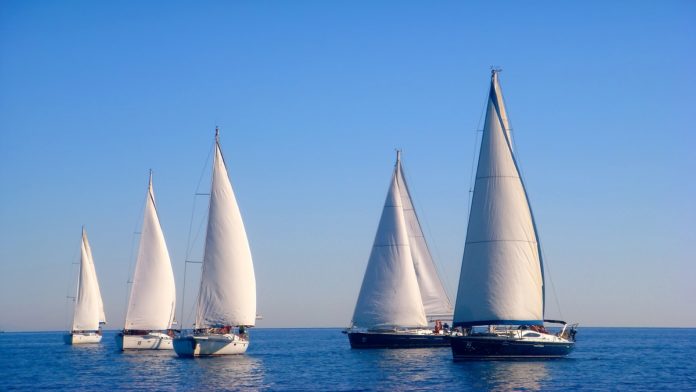
Sailboat, a name that evokes the open sea, freedom and adventure! But do we really know all the parts that make up this impressive vessel? In this article, we’ll take a look at the different parts of a sailboat, from structural elements like the deck and hull to safety features like life rafts and life jackets.
Whether you’re a sailing enthusiast or just curious, this article is for you! Sailboat, a name that evokes the open sea, freedom and adventure! But do we really know all the parts that make up this impressive vessel? In this article, we’ll take a look at the different parts of a sailboat, from structural elements like the deck and hull to safety features like life rafts and life jackets.
Whether you’re a sailing enthusiast or just curious, this article is for you!
Names of the main parts of a sailing boat
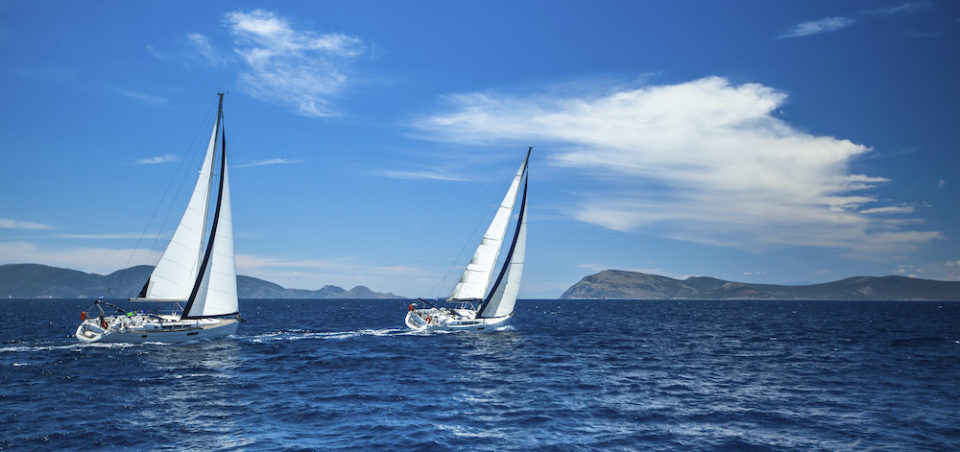
The hull, a mandatory part on all boats
The hull is an essential part of boats of all shapes and sizes. It can be defined as the outer shell of a boat’s structure that gives it shape and buoyancy. The hull is generally made of materials such as wood, metal, fiberglass, and fiberglass reinforced plastic.
The shape of the hull is also very important because it affects the stability and maneuverability of a boat. For example, a boat with a V-shaped hull will sail better at high speeds and in larger waves than a boat with a flat hull. In short, the hull is a central, vital and versatile part of any boat, affecting its shape, handling and safety.
The helm, essential for steering
The rudder is one of the most important elements in the navigation of a boat. It is located at the stern of the boat and allows the boat to be steered to port or starboard. It consists of a handle that allows the pilot to make the necessary corrections to the ship’s course.
A sailboat is steered by either a “tiller” or a “wheel”. The type of steering system depends on the size of the yacht.
Tiller steering is generally used on smaller boats and is attached directly to the rudder (see below). It is not very intuitive to use, as the boat steers in the opposite direction to that in which the tiller is moved.
Since time immemorial, sailors have invented various techniques for using the tiller, such as the “English rudder” or the “French rudder”. However, the traditional tiller is still widely used today on boats of all sizes.
Today’s rudder has also evolved with technology. Modern boats are equipped with electric or hydraulic helms that allow them to be maneuvered with great precision. These helms are particularly appreciated for their ease of use, allowing the pilot to concentrate on navigation in complete safety.
The rudder tiller
The rudder allows the captain to steer the boat in the right direction. It consists of a horizontal plate located at the stern of the ship, which can be turned from left to right to change the direction of the boat.
Modern rudders are usually operated by a hydraulic system that facilitates the movement of the plate. This plate also has a ribbed surface that helps stabilize the rudder, creating resistance to lateral movement and improving control over the vessel.
The mast, crucial for a sailboat
A boat’s mast is often considered one of the most iconic and distinctive parts of any vessel. It typically contains several levels of reinforcing beams, all arranged on a vertical axis to provide the vessel with a strong, durable structure. Masts are made of tough materials such as wood, steel or fiberglass to withstand the elements and the stresses of wind and waves.
Modern boat masts are often equipped with a number of sophisticated electronic systems to help sailors navigate and monitor weather conditions more effectively. These systems may include wind sensors, direction indicators, radar, and navigation computers. In addition, some vessels are equipped with special sails – such as spinnakers – that work in conjunction with specially designed masts.
The sails, the essential element to move forward
Sails are an important part of a boat. They help propel the vessel through the water using the power of the wind. Sails have evolved over time, from simple linen cloth to modern materials such as polyester and carbon fiber. Modern sails are light and strong, allowing for greater speed and maneuverability on the water. Sails can also be used to control the direction and speed of a boat. Sailors use specific terms to describe the different parts of the sail and the sailing process, such as “hoisting” the sail, “tucking” or “chocking” the sail to adjust the angle to the wind.
The rigging
The rigging is the set of fixed and mobile parts that allow the propulsion as well as the maneuvering of a ship by the force of the wind. It is composed of all kinds of lines, ropes, fittings, spars, masts, sails…
The bow of a boat, also known as the stem, is the part at the front of the boat. It is designed to break up waves and water so that the vessel can move forward efficiently. The shape of the bow varies depending on the type of vessel and its intended use. For example, fishing boats generally have a more pointed bow for better maneuverability, while cruise ships often have a more rounded bow for a more elegant appearance.
The bow is often adorned with various decorations or sculptures to reflect the style and tradition of the ship. Viking ships, for example, often had dragon-shaped bows, a symbol of strength and power.
In addition to its aesthetic appeal, the bow also plays an important role in the safety of the ship. It is equipped with a number of safety features, such as fenders to protect the ship when docking and anchors to immobilize the ship if necessary.
The stern is the rear part of the ship. For example, when the wind is blowing at the stern, the boat moves fast, hence the expression “having the wind at the stern”.
The keel, an essential counterweight
Sailboat hulls are very round and smooth, they are very efficient and comfortable. But this also makes them very easy to capsize… think of a kayak for example. The keel is a large fin that compensates for this tendency to capsize by providing a counterweight. It is usually placed to create a counterbalance to the force of the wind on the sails.
The rudder blade
The rudder blade is a wing that steers from left to right. Together with the tiller, they make up the rudder.
The boom is an integral part of a boat’s rigging. It’s a long, horizontal piece attached to the center of the mast that holds the clew of the sail. It is used to control the angle of the sail in relation to the wind.
The boom can be raised or lowered by means of a winch to adjust the sail to the weather conditions. It can also be used to stabilize the boat in strong winds by holding the sail firmly in place.
Booms are available in aluminum, carbon or wood, depending on the sailor’s preference and the size of the boat. Modern booms are often equipped with sophisticated adjustment systems for better sail control.
The Mainsail
The mainsail is the most important sail on a boat because it is used to steer the boat. It is attached to the main mast and extends across the hull of the boat.
The mainsail is often used to propel the boat forward, depending on the strength and direction of the wind. It can be adjusted according to wind strength to maintain a steady speed.
The mainsail may be equipped with pulleys and ropes for efficient handling by the boat’s crew. It’s important to make sure the sail is securely fastened and the ropes are properly adjusted to ensure the safety of everyone on board.
The mainsail is also one of the most visible sails on a boat. It can be customized with colors, designs or logos to add an aesthetic element to the vessel.
The jib refers to a headsail that is triangular in shape. It is much thinner than the other sails and is used when the wind is strong.
The anchor is a piece of steel that is part of the rigging and is dropped by a chain to the bottom of the water. It is placed there to hold the boat at anchor.
The Compass, the guide of every good navigator
The compass is usually found in the cockpit. It is the oldest navigation tool on the market and one of the most reliable.
The Chartplotter
Used by most captains nowadays, the chartplotter allows to display a map and a position in real time. It can be compared to a car GPS.
Read also : How to sail upwind?
The interior of a sailboat
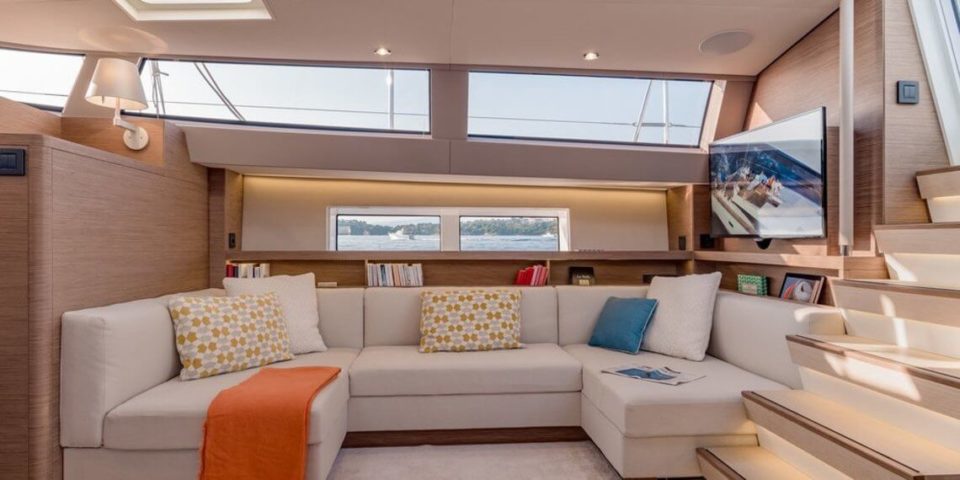
The companionway
The companionway is the staircase that allows access to the interior of the boat.
The saloon allows you to take your meals inside. The benches on the sides can be transformed into a bunk for sleeping. There is also storage space in the cupboards on the sides and the lockers under the benches.
The map table
The chart table contains all the electronics: GPS, radar, the electrical panel, the on-board computer and allows you to store your nautical charts.
In a sailboat, space is limited, so avoid leaving with several suitcases and opt instead for a soft bag that you can store in the closets. Also, remember to close the portholes when sailing! Not far away you will find a toilet, a sink and sometimes a shower.
The kitchen
Generally consisting of a gas stove, an oven, a refrigerator and a sink. Water is stored in tanks and sometimes a seawater supply is convenient to save drinking water.
The Sail Box
The sail locker is used to store the sails and the equipment to sail away from water and humidity.
Types of sailboats
To go further in your personal knowledge, you should know that according to the size and the number of masts, the sailboats do not all have the same name. Here are the 4 most common.
What is a sloop sailboat?
It’s a type of sailboat with a single mainsail at the stern and a jib at the bow. The sloop is one of the most popular types of sailboat because it is easy to handle and can be used in a variety of wind and sea conditions. They are often used for both short and long distance cruising and racing.
This type of sailboat is also known for its speed and stability in the water. Its simple construction allows it to perform well in light to moderate winds. That’s why sloop sailboats are highly appreciated for their autonomy and ability to sail long distances without having to stop as often as other types of sailboats.
What is a ketch sailboat?
A ketch is a type of sailboat characterized by two masts. The first mast, called the foremast or jib mast, is located further forward on the boat and is smaller than the second mast, called the jib mast. This type of configuration allows ketches to sail more easily in downwind conditions. In addition, the aft mast provides more sail area than the foremast, allowing for higher speeds. Ketches can be used for cruising or racing in all wind conditions. Because of their maneuverability and high top speed, ketches are popular with experienced sailors.
What is a Yawl?
A yawl sailboat also has two masts. It is a type of Bermuda-rigged sailboat characterized by the presence of a mizzen sail.
This sail is located aft of the main mast and can be trimmed independently. The yawl sailboat is often used for cruising and recreational sailing because it offers great maneuverability and stability thanks to its mizzen sail. What’s more, the yawl sailboat can be used with a reduced crew, as the sails can be easily controlled by a single person.
What is a schooner?
A two-masted schooner sailboat is a traditional vessel used primarily for pleasure sailing. This type of boat is often fitted with a triangular sail on the foremast and one or more square sails on the jib. The presence of two masts provides great stability and maneuverability.
Read also : The 5 best sailing boats under 60 feet
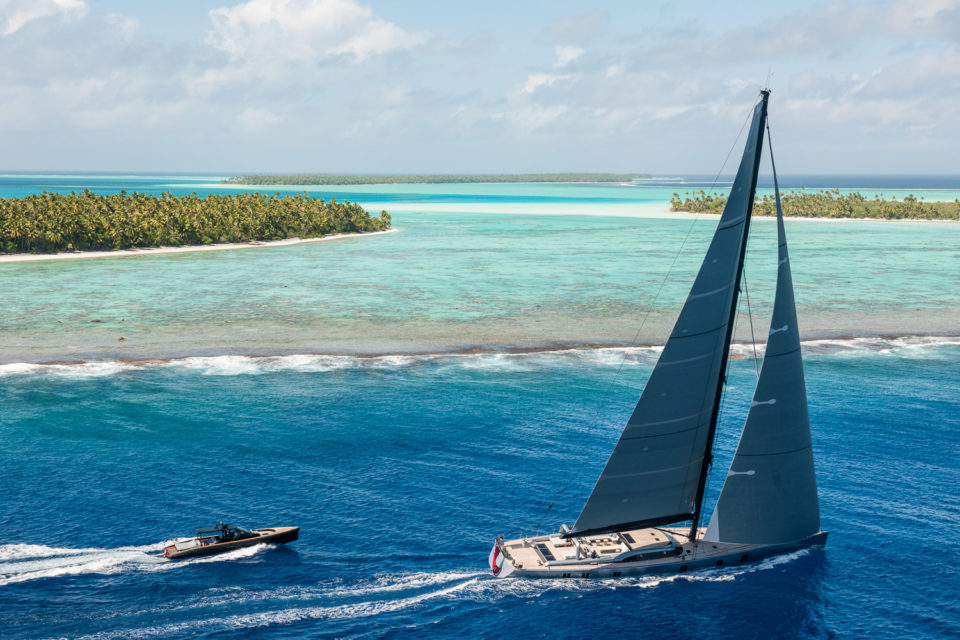
RELATED ARTICLES MORE FROM AUTHOR
Luxury yachts for charter perfectly suited for 10 guests, skipper’s job and responsibilities: what you should know, trimaran vs catamaran: what are the differences.
- Testimonials
- Privacy Policy

- Compare Sailboats
- Sailboat Calculators
- Bluewater Sailboats
- Catamarans and Multihulls
- Sailing Liveaboard
- Sailboats Galley
- How Much it Costs
- Sailing Destinations
- Meteorology Terms
- Sailing and Nautical Terms
Parts of a Sailboat
- Great Explorers
- People of the Seas
This section of OceanWaveSail is dedicated to the main parts of a Sailboat.
It contains a more in-depth information about what they are, some historical details, how they work..
It is a section that is constantly expanded, week after week, to provide as much information and details as possible to those curious about more details on sailboat parts.
Just click on any of the tabs below to get to the relevant Part of a Sailboat, and enjoy it!

This is the heading
Subscribe to our newsletter, don’t miss new updates on your email.
© OceanWave Sail. All Rights Reserved 2022
Terms & Conditions – Privacy Policy – Cookie Policy
About Us – Privacy Policy
- New account
Forgot your password?
Lost your password? Please enter your email address. You will receive mail with link to set new password.
Back to login
Privacy Overview

The Ultimate Guide to Choosing Between a Sailboat or Catamaran for Your Sailing Adventures
C hoosing between a sailboat and a catamaran for your sailing adventures is a significant decision that depends on various factors, including your sailing preferences, experience level, budget, and intended use. Here's an ultimate guide to help you make an informed decision:
1. Sailing Experience:
- Sailboats: Typically require more skill and experience to handle, especially in adverse weather conditions. Ideal for sailors who enjoy the traditional feel of sailing and are willing to invest time in learning and mastering the art.
- Catamarans: Easier to handle, making them suitable for beginners. The dual-hull design provides stability, reducing the learning curve for those new to sailing.
2. Space and Comfort:
- Sailboats: Generally have a narrower beam and less living space. However, some sailboats may offer comfortable cabins and amenities.
- Catamarans: Wider beam creates more living space. Catamarans often have multiple cabins, spacious saloons, and expansive deck areas, providing a more comfortable living experience.
3. Stability:
- Sailboats: Monohulls can heel (lean) while sailing, which some sailors enjoy for the thrill but can be discomforting for others.
- Catamarans: Greater stability due to the dual hulls, providing a more level sailing experience. Reduced heeling makes catamarans suitable for those prone to seasickness.
4. Performance:
- Sailboats: Known for their upwind performance and ability to sail close to the wind. Some sailors appreciate the challenge of optimizing sail trim for efficiency.
- Catamarans: Faster on a reach and downwind due to their wide beam. However, they may not point as high into the wind as monohulls.
- Sailboats: Typically have a deeper draft, limiting access to shallow anchorages and requiring deeper marina berths.
- Catamarans: Shallow draft allows access to shallower waters and secluded anchorages, providing more flexibility in cruising destinations.
- Sailboats: Generally more affordable upfront, with a wide range of options available to fit different budgets.
- Catamarans: Often more expensive upfront due to their size and design. However, maintenance costs may be comparable or even lower in some cases.
7. Mooring and Docking:
- Sailboats: Easier to find slips and moorings in marinas designed for monohulls.
- Catamarans: Require wider slips and may have limited availability in certain marinas, especially in crowded anchorages.
8. Intended Use:
- Sailboats: Ideal for traditional sailors who enjoy the art of sailing, racing enthusiasts, or those on a tighter budget.
- Catamarans: Suited for those prioritizing comfort, stability, and spacious living areas, especially for long-term cruising and chartering.
9. Resale Value:
- Sailboats: Generally have a more established resale market, with a wider range of buyers.
- Catamarans: Growing in popularity, and well-maintained catamarans often retain their value.
10. Personal Preference:
- Consider your personal preferences, the type of sailing you plan to do, and the kind of lifestyle you want aboard your vessel.
In conclusion, both sailboats and catamarans have their advantages and disadvantages. Your decision should be based on your individual preferences, experience level, budget, and intended use. If possible, charter both types of vessels to experience firsthand how they handle and to help make a more informed decision based on your own preferences and needs.
The post The Ultimate Guide to Choosing Between a Sailboat or Catamaran for Your Sailing Adventures appeared first on Things That Make People Go Aww .


IMAGES
VIDEO
COMMENTS
Hulls; are what separates a cat from other sailboats, a catamaran has two hulls, a trimaran three, and a regular sailboat, aka monohull, has one. The hull is the part of the sailboat which makes it float and to where all other things are attached. The hulls are usually divided into sections, such as usable and non-usable area.
salon (n.) - area inside the catamaran above the bridgedeck which is usually common area of inside helm, large lounge and settee, galley on galley up designs. sloop (n.) - the most common sail arrangement which consists of a large mainsail and single headsail. The mast is well forward at the front of the salon.
Short answer: The key parts of a catamaran include the hulls, bridgedeck, mast(s), rigging, sails, rudders, and daggerboards. These components work together to provide stability, propulsion, and control for this type of multi-hulled watercraft. Exploring the Essential Parts of a Catamaran: A Comprehensive GuideFrom cruising the open seas to enjoying lazy afternoons by the shore,
We draw a Catamaran and describe the basic parts of a sailboat. Learn where the hull, mast, boom, port, starboard and more are located on a Catamaran.
The transom is the backplate of the boat's hull. It's the most aft (rear) part of the boat. Port. Port is the left side of a sailboat. Starboard. Starboard is the right side of a sailboat. Bilge. The bilges are the part where the bottom and the sides of the hull meet. On sailboats, these are typically very round, which helps with hydrodynamics.
A catamaran is a twin-hull boat with two equally-sized hulls placed side by side. They're powered by engines, sails, or both—and they're known for efficiency and speed. Catamarans are the most common kind of multihull boat. In this article, we'll go over the characteristics of catamarans and how to differentiate them from other types of ...
A catamaran is a boat with two hulls and a bridge between them. Catamarans can be designed as sailboats or motorboats. A catamaran stays stable since it has a wide base, it does not have a deep keel as on a monohull. Cats are known for not heeling, increased comfort, more space, and faster speeds. In this article, we will explore everything you ...
A catamaran offers flat, even decks, wide, safe passages, and no climbing when having to move from bow to stern. Tips for Sailing a Catamaran. With its large area exposed to wind and its low draft, a sailing catamaran can drift off easily so anchoring should be performed as swiftly as possible, especially if the wind blows from the side.
Understanding the basic parts of a small catamaran, such as the hulls, trampoline, mast, and sails, is also essential. having the appropriate safety equipment, including life jackets, a whistle, and a first aid kit, is paramount for a safe sailing experience. Learning the Fundamentals of Small Catamaran Sailing
Catamaran Sailboat Parts Explained. For the most part, the components of a catamaran share the same terms and labels that they would on a monohull. Cats often have a few extra features with other names, however. Hulls A catamaran is made with two hulls connected together. Each hull has an interior, just like a monohull sailboat does.
Understanding a Catamaran: A catamaran is a multi-hulled water vessel with two parallel hulls and sails. Small catamarans, also known as beach catamarans, are the focus of this guide. Essential Parts of a Catamaran: The essential parts of a catamaran include the hull, tiller, rudder, keel, mast, mainsail, foresail, and boom. Each part plays a crucial role in the catamaran's operation.
A catamaran sailboat charter is an exciting way to explore the beauty of the sea. Whether you are an experienced sailor or a first-timer, booking a catamaran sailboat charter has a lot of advantages that you can enjoy. In this article, we will discuss the advantages of booking a catamaran sailboat charter, so that you…
Catamarans vary in size and shape, depending on the model and design. However, here we're looking at the small catamarans (a.k.a. beach catamarans) and how to sail them. Parts of a Small Catamaran. Below are the essential parts of a catamaran regardless of its model or design: Hull: It is the main body of the cat. It has a symmetrical shape ...
Short Answer. Sailing a catamaran is relatively straightforward. To get started, adjust the sails and rudder to the desired angles. Next, begin to move forward using the power of the wind and the force of the sails. While underway, make sure to constantly adjust the sails and rudder to maintain the desired course.
A basic sailboat is composed of at least 12 parts: the hull, the keel, the rudder, the mast, the mainsail, the boom, the kicking strap (boom vang), the topping lift, the jib, the spinnaker, the genoa, the backstay, and the forestay. Read all the way through for the definition of each sailboat part and to know how they work.
If you're a beginner sailor, you want a quick and solid overview of the different sailboat parts. In this video, I go over the four main segments of the sail...
Understanding the various parts of a sailboat is fundamental to appreciating the art and science of sailing. From the sturdy hull and towering mast to the ... Monohull sailboats have a single hull, while multihull sailboats, such as catamarans or trimarans, have two or more hulls. Each design has its advantages and characteristics, influencing ...
http://www.psychosnail.com/boatingarticles/boathullAn animation on a sailboat/catamaran hull showing the boat parts and the names of the parts.Part of the on...
A sailboat is a boat that is propelled either partly or entirely by sails. Sailing is popular in many destinations around the world. For example, Bahamas catamaran charters are a time-honored tradition in the Caribbean, and in the Mediterranean, sailing is a way of life. There are several different types of sailboats and what constitutes a sailboat varies by maritime culture and region.
The Parts of a Sailboat Below the Waterline Keels & Rudders. This Gallant 53 has a long-fin keel and a spade rudder. Keels provide three key attributes in varying amounts depending on their design: directional stability, ballast, and lift to windward.
Sailboats require four main parts to operate: a hull, mast, sail, and rudder. The hull is the body of the boat, and all other parts are directly or indirectly connected to it. The mast is a long pole that serves as a guide and mounting point for the sail. The sail catches the wind and propels the boat, and the rudder directs the boat and acts ...
The boom is an integral part of a boat's rigging. It's a long, horizontal piece attached to the center of the mast that holds the clew of the sail. It is used to control the angle of the sail in relation to the wind. The boom can be raised or lowered by means of a winch to adjust the sail to the weather conditions.
This section of OceanWaveSail is dedicated to the main parts of a Sailboat. It contains a more in-depth information about what they are, some historical details, how they work.. It is a section that is constantly expanded, week after week, to provide as much information and details as possible to those curious about more details on sailboat parts.
3. Stability: Sailboats: Monohulls can heel (lean) while sailing, which some sailors enjoy for the thrill but can be discomforting for others. Catamarans: Greater stability due to the dual hulls ...